Wassup, just me here.
Welcome to blog, hope you don’t mind it.
Cool, cool. Appreciate it.
Ever Maiden – An Informal Review
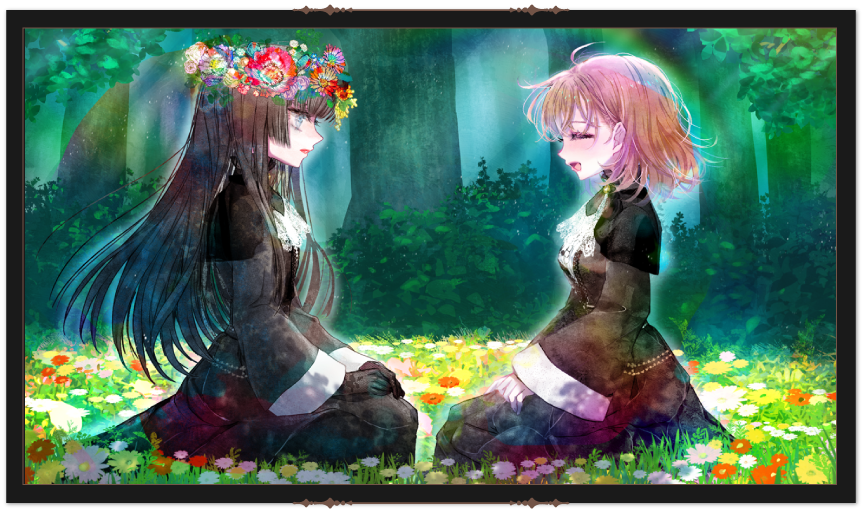
In June 2021 mysterious titan of the Visual Novel scene Liar-soft announced the release of a yuri (genre known for girls holding hands and occasionally being gay) horror mystery game titled Ever Maiden or Evermaiden as I will refer to it since I just personally think it makes more sense.
Evermaiden is a game written by Umihara Nozomu who had previously written Fairytale Requiem for Liar-soft, as well as Shinsou Noise in collaboration with Silky’s Plus and the artist formerly known as DMM, and also more recently Adabana Itan (which I would link to but it’s blocked in europe) in collaboration with Aniplex. I say “in collaboration with” since Umihara is an in-house writer for Liar-soft and has worked on a number of other Liar-soft projects. I don’t think Umihara’s name pops up in most Visual Noveliers’ heads when they think of Liar-soft but I’ve been a pretty dedicated fan of her’s since I read Fairytale Requiem in 2016. The visual artist for Evermaiden, Ooishi Ryuuko, is also a return from Fairytale Requiem although they are perhaps more well known for their work on the steampunk series and in particular Sekien no Inganock. Ooishi is easily one of my favourite artists in the scene, perhaps in general, and since I genuinely wasn’t expecting another game with their involvement I was overjoyed to see them as the main artist and designer working together with Umihara again.
Evermaiden was released on the 25th of February 2022, which is to say about a week ago, and I finished it a couple of days ago and since I don’t think my MS Paint style mouse art could do it justice I felt compelled to try to use my words instead. I’m going to separate this blogpost into an introduction to the work, a spoiler-free review, and then finally some spoilerful ramblings discussions. Since I’d like people to read the game and experience it for themselves I usually wouldn’t include a spoiler part, especially this close to release, but I just have too many thoughts that I need to pluck out of my brain and plant into the dirt (read: this blog, it’s dirt).
This is a pretty long one so sorry for not supplying any reading music but just put on some nice piano tunes or something it’ll be fine.
So what exactly is this Evermaiden?
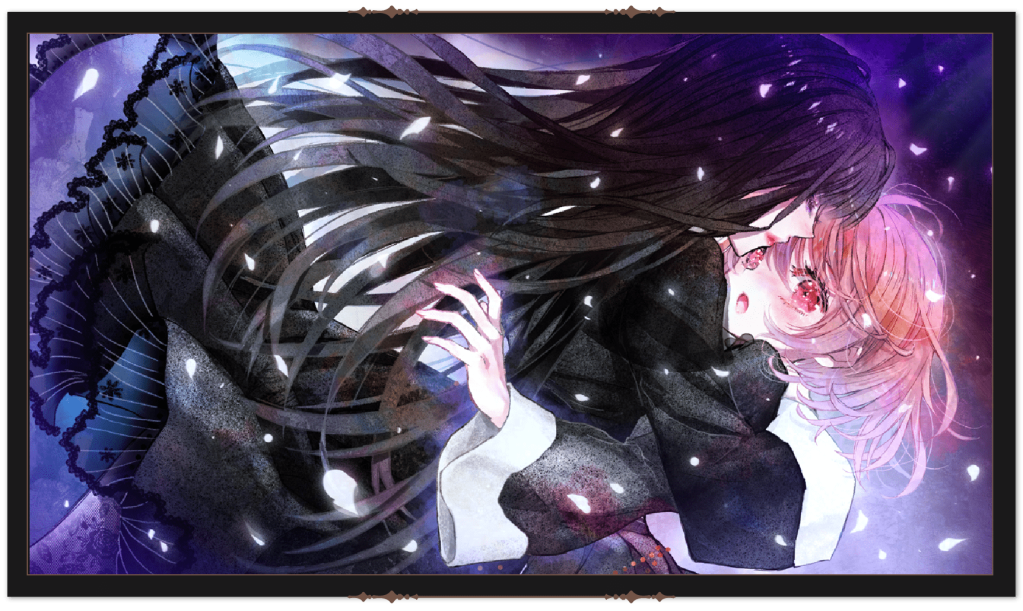
Well that’s a spoiler dude so that won’t be answered here, I will do my best to introduce you to the game though. I’ve already listed a couple of Umihara’s credits but to those who haven’t played the games the titles alone won’t really tell you much. Every game Umihara has written and planned is to some degree and by some definition a mystery game, and as mentioned Evermaiden is of course no different. Shinsou Noise, and later Butterfly Seeker again in collaboration with Silky’s Plus but without DMM sticking their fingers in the pie this time, has a detective style mystery aesthetic to it and a case-based structure even including the solving of mystery puzzles as part of the gameplay. Fairytale Requiem and to a degree Adabana Itan are more about slowly uncovering the truth of a strange situation, both with some degree of horror elements. Evermaiden falls in the second camp but with a bit of a twist to it. Despite being advertised as a yuri mystery horror adventure game (if that’s a mouthful it’s because I ripped it from the site) it’s very readily apparent right away that it is a scifi game. There’s no big “Holy shit dude I thought this was a different thing but it was scifi all along I’m shitting bricks dude” Visual Novel style genre shift, it’s just scifi from the start of the game which is why I don’t feel worried about including it in this spoiler free bit. Now Umihara isn’t a stranger to science fiction elements but Evermaiden is through and through a scifi horror yuri mystery adventure mystery wait-I-said-that-already game.
Going into the plot or setting or characters without stepping into spoilers is difficult and arguably impossible. Evermaiden is the kind of game were slowly uncovering and piecing all of those things together is the whole mystery. Going off the information available on the game’s site as well as content from the very start of the trial though I can introduce some basics. The Puellarium, puella meaning “maiden” but y’all meguka heads knew that already, is a strict girls school with a long list of rules pertaining to decency. As you’d probably expect it’s a religious school but rather than praying to some dead dude like normal people they all gather to pray to a “great maiden”. The protagonist Alouette finds herself a fish out of water, a bird version of the saying would perhaps be more apt but birds hang out in all kinds of places including on land and in the water, in the school and struggles to adapt to the rules. Aloutte does not know why or how she ended up at the school and finds that the other girls have similarly unclear memories. Alouette is a friendly and positive girl but finds the strict rules of the school difficult as they ban things such as showing skin, touching each other, and of course romantic relationships. The romantic interest(?) of the game, Rook, on the other hand is a cold girl who prioritises following the rules above all else. Now this doesn’t sound much like scifi so far but I don’t think I can really go into that aspect in a way that makes sense without also discussing elements that are definitely spoilers. To put it in the least spoilery and least helpful way possible the thing they study at school isn’t normal school stuff like maths and what the inside of frog look… wait no they do study that one actually.
Evermaiden’s system is, I suppose, map based but it’s more or less linear and no guide is needed since you can’t really miss any scene or ending. The soundtrack is a mix of original and royalty free tracks, the original ones being mostly composed by Sapporo Momoko (who also did Fairytale Requiem) but also featuring some Matsumoto Shinichirou (who worked on Adabana Itan). Similarly to other Liar-soft titles the game only has one vocal track which serves as both opening and ending theme and it is of course performed by Rita and composed by Blueberry&Yogurt (it’s also of course very good). The game’s structure is chapter based and through the map system you also have some choice of what order to read scenes in. Like a Shakespearian comedy, or a shoujo manga, the cast is more or less coupled up in pairs and the game features seven sex scenes, one being side content and one being mob sex (as in not featuring main or side characters). The overall length of the game is a bit on the shorter side, not quite full standard eroge length but not that far off. The trial is quite substantial as it covers the full first chapter. I feel like I should say something about the art here but it’s just going to devolve into me dorking out so I’ll save it for the review.
The Review

Oh my God dude the art. Evermaiden is a game that perfectly plays into the strengths of both writer and visual artist. Before I go off about the art I’d like to dip a bit more into Umihara talk. I don’t think it would be unfair to say that Umihara sometimes fail to hit the landing with her games. Umihara pulls a lot from mysteries and horror but also fairytales and her third acts and endings tend to lean more into the fairytale no matter how spooky or detective-y the previous two acts were which can definitely feel a bit disatisfying if you’ve got your expectations set for something else. If you’re sat there expecting an intricate web of twists and shat brix and the game ends up just kind of handwaving a lot of that to focus on the characters you might write an angry erogamescape review asking Silky’s Plus to get Kazuki Fumi to write their mystery games instead. Evermaiden manages to weave together these sometimes disparate goals and satisfies your goopy erogamer brain’s desire for sick reveals and explanations while still leaning into the fairytale and romance. Evermaiden deftly explains just enough to leave you feeling like you got all the answers you wanted but also leaves space for you to think big about the setting. The game is satisfying as a love story, as a scifi story, and it also brings plenty of fuel for your thought fires, plenty of gum for your thinking teeth to chew on and like unlike normal gum the flavour doesn’t go away in seconds you can just keep chewing until your brain jaw hurts and the tasty gum juices keep coming. Evermaiden has a really nice mix of called shots that makes you go “Oh my God is this going where I think it is” and reveals you don’t see coming but make so much sense when they do. Now I will say as much as it’s advertised as horror it’s not a particularly scary game, mostly because it’s just too beautiful both textually and visually. There are some scenes where you’re aware that something dark is lurking behind the beauty you’re witnessing but I feel like that unease isn’t really what people come to horror for. Now I would not call it a bad horror game and I think the horror aesthetic is very important and used very well which finally gets us to me going wild about the art.
It’s hard for me to discuss Ooishi’s art without just devolving into monkee like yells of enjoyment but I will do my best to stay grounded and human. Ooishi’s highly expressive art lends itself perfectly to horror as seen in games like France Shoujo or Shingakkou where they were in charge of just the horror related art. I could go on forever about the use in France Shoujo in particular (especially since I haven’t actually read Shingakkou yet) but basically Ooishi is very good at creating pieces that convey mood and for horror this is especially apt since an oppressive and uneasy mood does a lot more than like a big spooky monster guy. Don’t get me wrong I love big spooky monster dudes and fun monster designs but that’s a different flavour of horror. In Evermaiden Ooishi is of course the main artist and designer though not just in charge of the expressive mood pieces so we have a lot more to discuss. Something very notable about Ooishi’s style is their use of textures and patterns creating an almost collage like feeling. Evermaiden uses a lot of flower patterns in particular as well as fabric textures creating a textile look which reminded me of looking through my mother’s fabric cupboard back when she worked as a seamstress. The colours are also extremely striking and really pop against the black and white of (for example) the uniforms. The most visually striking scenes are accompanied by equally visually striking language, really the only word to describe it is beautiful. The flower motif is woven into both the visual and literal language and forms a real aesthetic harmony. When talking about “nice aesthetics” in Visual Novels I feel like it’s usually about how the designs and menus look like a persona or how the colouring staff put in some neat rim lighting, or if I’m the one talking it’s probably about how nicely coloured the cum is. Evermaiden I feel like really sticks out in how the visual and literal language play on each other and how choices like texture make both emotional, visual, and narrative sense.
I haven’t touched on this at all yet somehow so let’s get into the voice acting next. Evermaiden has a pretty starstudded cast featuring both veteran voices like Moka Choko in the lead role, as well fairly new faces like Kitaooji Yuki playing Canary. The main heroine Rook is played by one of my personal favourites Aji Sanma and man her and Moka Choko voicing the main couple is just amazing. I found the casting of Kawashima Rino as the tomboy Robin a bit off and the cast was a bit limited in number overall but I feel like the absolutely perfect casting of the main two really outshines any problems.
Okay so what complaints do I have? The soundtrack is a bit limited and there’s one royalty free track with a bit of a migraine inducing tone in it, the track is thankfully not used much. The original tracks the game does have I’m a big fan of, I love the Dark Souls-like boss music composed by Matsumoto Shinichirou especially. The settings menu is really limited as with all Liar-soft games, feels weird complaining about the settings menu in a Visual Novel but I’m kind of grasping for straws here. I’m sure the physical box of the game only contains a crystal case and not even a manual, Liar-soft does that a lot too (I played a digital copy so I do not actually know if this is true).
So would I recommend Evermaiden? Like with anything (other than France Shoujo go read France Shoujo please) it of course depends. I think fans of Liar-soft in general will have probably already started reading it, to fans of the steampunk series in particular though I definitely recommend it since I think you’ll find some comfy familiarities. The game’s also an easy recommend to mystery and scifi fans unless you’re looking for detective stories or hard scifi. Evermaiden is very soft scifi and there’s very little detective work. I think it’s probably a safe recommend to yuri fans as well probably, probably. I should mention that Umihara has a track record of including some pretty rough sexual content in her games (Fairytale Requiem in particular) but Evermaiden does not have any of that, there’s a little bit of whipping but nothing to warrant a big warning.
I think that’s about as much as I can say while staying completely clear of spoilers so thank you for reading this far xoxoxo. If you feel curious about the game go read it now but if you know you’re not going to play it and just want my insane ramblings then carry.
SPOILERS PAST THIS POINT!!!
THESE ARE SPOILERS!!!
Okay so for real what is Evermaiden?
Hey I’m not gonna start with spoilers right away just in case you’re reading this by accident right now so stop reading if you don’t want to be spoiler on the Liar-soft game Evermaiden, okay? Cool. I considered doing some fancy html to hide the spoilers but couldn’t be bothered and my blog design is awful so I’m sorry if you’re scrolling through to find something else and end up reading this.
So Evermaiden is a science fiction game set in a post post scarcity world. The titular Evermaiden is an arcane machine combining both old and new world technology to create a man made God which saw to the needs of a small priviledged group and eventually became seen as an actual God rather than a piece of technology by those who got her blessings. With the loss of old world technology people were unable to reproduce the Evermaiden and she was also incapable of recreating herself so with deterioration scarcity would once again become a fact of life for the priveleged few who at this point have become a cult of evermaiden worshipping cyber gnostics disgusted by the physical body and biological realities of being a human after having lived mostly free from them for so long. The thing they couldn’t completely be free of even with the Evermaiden though was human reproduction, for these cyber gnostics artificial insemination is the norm but even that is something they’d rather be free from. Needless to say the class divide between those with infinite resources thanks to the Evermaiden and those without got so severe that the world became completely split. Those living on the “outside” having a rich variety of cultures including groups that sought to become part of the “inside” group while still being completely cut off from them. The Puellarium is a research facility with the goal of creating a new Evermaiden using the processing power of the human brain but also to create a way for those on the “inside” to reproduce without the nasty biological reality of it all. Only one girl could become an Evermaiden replacement but the rest could still be turned into homunculus birthing machines. The girl who’s chosen as the new Evermaiden is of course Rook but after meeting and falling in love with Alouette her resolve and suitability is shaken. This isn’t the whole plot or setting but I think it’s enough to make clear what Evermaiden is really about.
Yeah so this is a game about bodily autonomy and reproductive rights. I think it’s pretty key to note that basically all the girls in the Puellarium are from the “outside” and none of them are aware of the real intent of the project. These are girls taken from less privileged positions and used to outsource the reproduction of the privileged class. I think this is a really neat way to bring up the colonial and classist problems around adoption and surrogacies from “poor nations”. These are often painted as purely positive things, the idea with adoptions is that you “save” a child from somewhere bad and bring it to a clearly better place, surrogacy which is the clearer parallel to Evermaiden is of course a way for same sex couples to have children but it is also often times less privileged women selling their reproductive function to privileged couples. Not all same sex couples have the ability to get a surrogate since it’s often a question of large amounts of money, it’s reproductive outsourcing and just as colonial as other forms of outsourcing. I think this is a bit more of a niche read but it’s a pretty clear parallel and real interesting so I felt like I had to bring it up.
On a less class and colonialism and all that jazz level there’s of course more general feminist reads that can be performed here. The game discusses a variety of family units and forms of child-rearing when talking about the backgrounds of the heroines. There’s a heroine from communal groups of “outsiders” where the children are raised by the whole community and monoamory is an exception rather than a norm, there’s a heroine from an agrarian monogamous community where they needs tons of kids to help work at the farm and take care of the other children, and then the main heroine Rook was raised by a single mother who aspired to be like the “insiders” desperately trying to keep her daughter pure of the sins of the flesh. None of these are necessarily painted as better or worse as the game is more interested in what happens when you don’t fit inside the familial framework that has been forced on you. Rook represents adapting to it, abandoning your self in favour of the structure, and Alouette is the inability to adapt and will to break free. We see this inability to adapt after continuous abuse eventually lead to an attempted suicide by Alouette but in the end you have her break Rook free from her destiny as a mindless maiden, an enslaved God, a mother. Love prevails, be gay do crime.
Another lil interesting angle to get at is that the Puellarium exists in two different states before and after Rook takes control as the new Evermaiden. The Puellarium began more explicitly as a research facilty and would violently punish rule breaking. Through a memory altering chastity belt, you read that right, the girls were rid of information that was deemed unecessary and problematic like for example the existence of men. The goal was to completely rid the girls of any memories of sex or sexual reproduction at all since it was of course scene as a sin of the flesh but it didn’t really pan out since even if you don’t remember what a dick is you can still go and smooch a girl (and then get whipped as punishment). After Rook takes control and all the researchers and staff die the research facility is turned into a school and the violent punishments are removed but the end goal of turning girls into breeding machines and the rules remain and are just enforced socially instead. Nothing truly changes it’s just the same thing expressed slightly differently. There’s no meaningful change if you just go “Well we’re not whipping girls for holding hands anymore but it’s still just as forbidden”. While the new Puellarium is slightly easier for Alouette to go through since there’s no threat of violence it’s still an opressive space she wants to be free from, it’s still trying to force her into a frame she does not fit inside of.
God there’s a lot more I feel like I could discuss. Like I haven’t brought up the fact that the girls are learning to polish their powers of “creation” which isn’t limited to just the homunculus breeding program end goal of course. The Puellarium aims to standardise what they use these powers for, trying to stiffle individuality. You could do a read of this as a commentary on the industrial nature of the school system or a discussion of creativity and art there’s… there’s a lot to dig into here. God going back to the family unit talk earlier there’s a very good scene where Rook talks about her understanding of marriage as not only purely political but also quite horrifying contract and man the whole thing about how she can’t create flowers since she can only create inanimate things while Alouette creates a wild arrangement of plants and gets it labled as weeds because it strays from the platonic ideal of the garden rose which is a purely cultivated man made flower aaaaah there’s so much.
I wrote this blogpost hoping that putting the thoughts on paper would rid my skull of them but the more I write the more I think of to discuss. Please play the game and talk to me about it instead, and also read France Shoujo and talk to me about that too and also Nekochan no Choubouken please pretty please.
xoxo always yours
Zodi
ABOVE ARE SPOILERS!!!
2021 a Retrospectivaganza®
Usually I prefer to restrict my retrospectives to only new content from the year I’m writing about, and I know that by straying from that this year it will seem like I just didn’t consume enough 2021 media to write a post. But I already did that for 2021 back in early 2019 so I’m turningthis into a Retrospectivaganza© instead. I will of course cover games but I’ll also dip into manga, music, and maybe even movies! I’ll do my best to keep everything coherent but I can’t promise anything. Music to read to or alternatively this
Oh yeah and of course a FAIR WARNING this Retrospectivaganza™ will talk about works that deal with everything from sexual abuse to suicide, I won’t go in dept about any of this content but just be aware pls thanks.

2021 in GAMING
It’s not exactly a secret that I’m a huge eroguro sicko and a Black Cyc fangirl, as evident by my last post on this blog from oh God a year ago huh I’m sorry. While I still haven’t fully completed their entire library but I finished a large chunk of their catalogue in late 2020 and early 2021, kicking off 2021 with Mugen Kairou originally released in 2005 and written by like 5 different people, with the planning and draft done by a sixth. I’m also not familiar with any non-Mugen Kairou work done by any of them. You don’t really need to be a hardcore erogamerhead (official termonology for novel game enthusiasts) to see all these red flags but since I’m a helpless fanboy I decided to give it a shot and oh man, Mugen Kairou is quite the experience I’m not sure where to start.
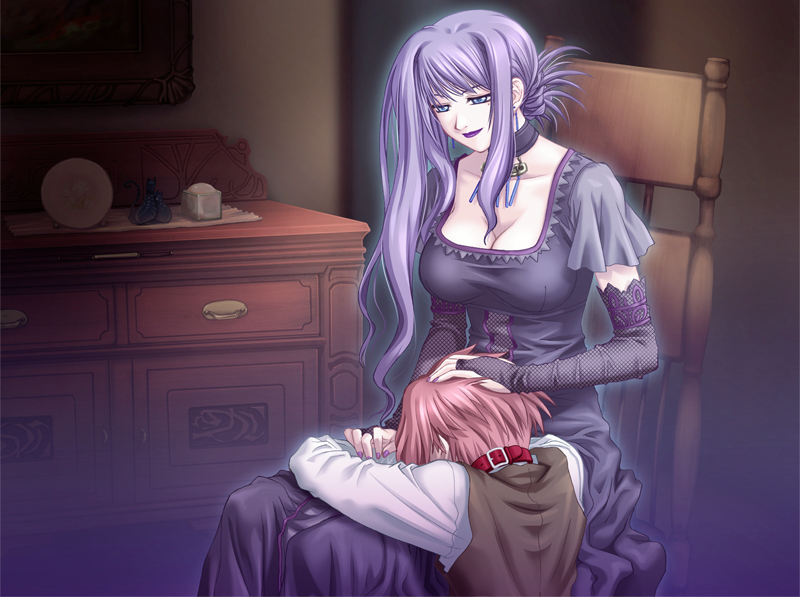
Mugen Kairou is a, I want to say existential horror story but I think that conjures up the wrong image, it’s definitely in part a horror experience and at its core very existential though. As the “mugen” (infinite) in the title implies it is of course a loop game but rather than focus on actions and their consequences Mugen Kairou focuses on perception and it’s here the horror elements come in. What separates the loops isn’t how the protagonist acts but rather how he percieves reality. The game keeps you questioning what is real, if anything, and I think the too many cooks situation with the writers almost helps in creating this constant unease. Another core concept to the game is identity as the protagonist lacks one and would rather give up his humanity and become a dog than go through the painful process of having to define himself. In other words reject humanity return to dog. Mugen Kairou is easily one of the real deal Black Cyc classics and manages to be a fun and interesting both horror and philosophical piece despite or maybe thanks to the myriad writers. The sequel which is written and planned by one of the writers of the original is not too hot however. Where the original left you lost and confused about what was intentional, and where the gaps made you ponder all the questions the game raised… the sequel is kind of the wikipedia “themes” section of the original. The sequel goes as far as straight up having a character point out that “wow this just like society” unironically. The original slaps though hard recommend.
I managed to finish the Mugen Kairou “series” just in time for the release of Dead End Aegis not strictly a Black Cyc game but featuring art (and probably direction) by Ueda Metawo (the artist, director, and planner for a solid chunk of Black Cyc games) and also the Black Cyc engine including the sick unlockable minigames. Writing however wasn’t handled by a Black Cyc staple but instead by Marutani Hideto. At the time I was unfamiliar with Marutani’s body of work other than of course having heard about France Shoujo’s infamous length and production issues so I was skeptical to say the least, fully expecting the game to be little more than nasty porn. What I ended up getting was easily my top release of the year and a game good enough to completely transform me into a Marutani fanboy.
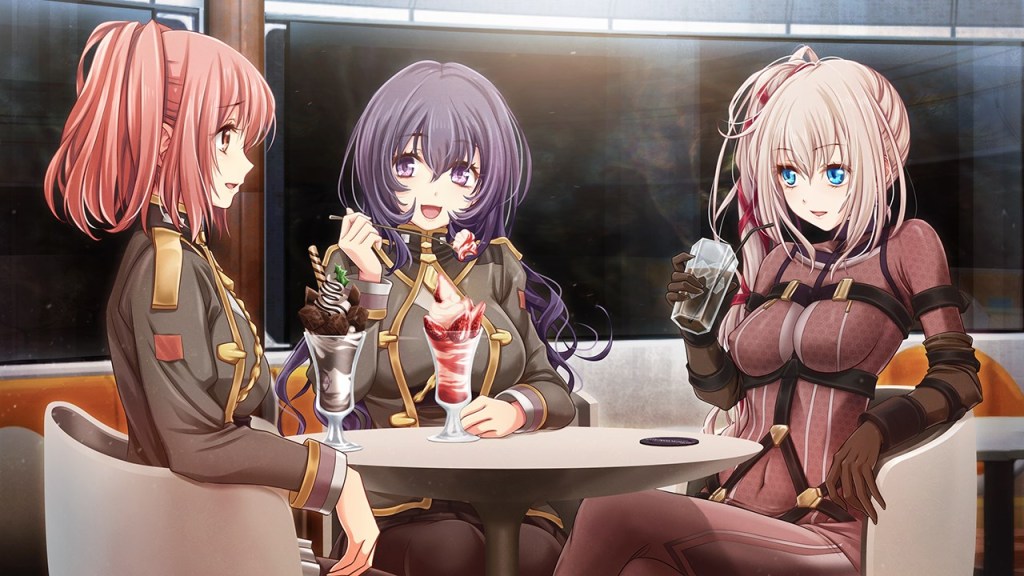
Dead End Aegis is a game that perfectuly captures the spirit of an era, it’s a modern coming of age story. I did a tweet chain on the game shortly after finishing it and I still want to do a fully fledged proper post on it but I’ll try my best to give a quick lil peek at it. Dead End Aegis is a game about a brave and ambitious girl finally achieving her dream of fighting for humanity. She fights through constant suffering and abuse and is slowly but surely disillusioned as she is forced to face the fact that there is no greater benefit for humanity from her suffering, that she’s just part of a system designed to torture her and people like her. She realises that her initial struggle between being a “normal girl” or a “hero soldier” were just picking between two forms of systematic abuse. Eventually she wonders if even if the shared threat to humanity was real if humanity would even be worth saving. The game criticises everything from the military industrial workplace to the handling of sexual abuse in the work place. It’s difficult for me not to call this a feminist work even if it might have not been the intention. The main character seeing through the grand narratives building a false community to maintain the social hirearchy is not only the feminist blackpill since it’s in large part about the systematic abuse of women in Dead End Aegis but also a struggle I think basically anyone growing up right now has to face. How do I find meaning within a system I know is hateful and that I have very little ability to change? Now so far this all sounds real grim and it is, I found myself kind of passively crying through a lot of the game BUT, the Moon ending offers some very well needed catharsis and gave me a boost of desperately needed good brain chemicals. It’s an empowering game which does feel a bit weird to say considering how much of it is about girls being robbed of their autonomy. There’s a lot more to the game, for example international politics, which I didn’t touch on here so maybe someday I’ll write a full post but preferably go read the game and see for yourself instead! If you can stomach some really nasty nonconsensual sexual content as well as quite a lot of violence both sexual and not sexual it’s an easy to recommend to anyone living in PRESENT DAY, heh.
Having finished Dead End Aegis and being unsure how much of the magic was it being (basically) a Black Cyc game and how much was Marutani I decided to, half as a joke, dive into the infamous France Shoujo (official page is dead so have a vndb link). Despite having loved Dead End Aegis my brain was filled with nothing but the rumours and memes around the game so I went in expecting a mess. How could a game with 48 endings not be right?
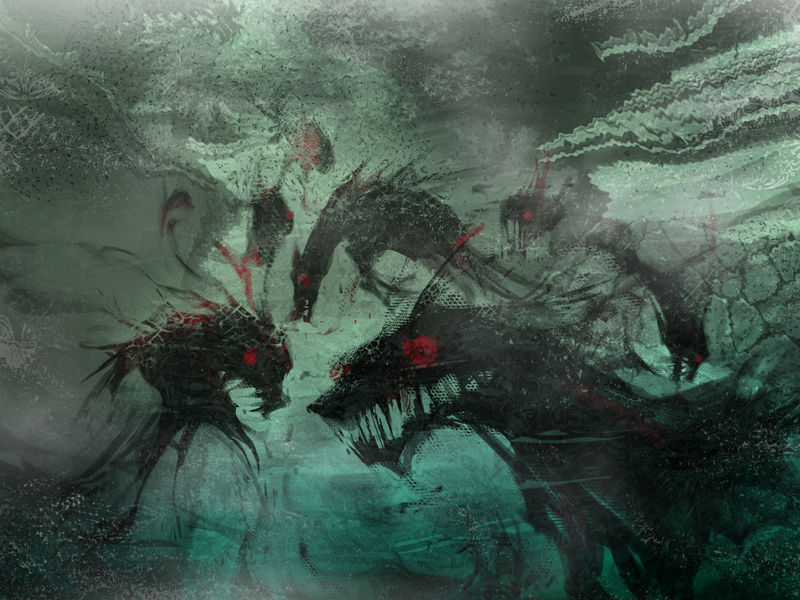
So France Shoujo is easily one of my favourite eroge of all time. If Dead End Aegis is a lot to write about then France Shoujo would require a doctoral thesis. My initial thoughts upon completition ended up being far beyond discord’s character limit on their own. I don’t wish to make my thoughts on the game the majority of this blogpost so I’ll be super brief instead. France Shoujo is a piece of existentialist fiction that rivals my favourite book Nausea by Jean-Paul Sartre, if this sounds like an insane exaggeration that is because it’s my genuine feelings and feelings are wild like that you know? France Shoujo deals with an insane range of topics but is also a very coherent whole, some of the endings are only there to account for slight variations in choices but most of them are fully fledged thematically appropriate endings that are unique but manage to all tie into the core ideas of the game. When you see a game this open you expect that it will have to compromise, that at some point it’s going to be a bit inconsistent or conflict with itself. France Shoujo does not do this. France Shoujo has a fully realised world view that is not compromised. If you were to ask me what France Shoujo is about I would probably start rambling incoherently and then get embarrassed so please don’t. Since you didn’t ask though I think a pretty core idea to France Shoujo is objectification. Wether it’s about wanting to become an object to escape the harsh pressure to define oneself, or the desire to degrade someone else into an object to have power and ownership over, or if it’s the percieved PURITY of an object, there’s a lot. It’s an incredibly realised work in every way including the stunning presentation. The use of clashing visuals, God the use of sounds tied into the poetry of the work God. I could just go on and on about this game I’m sorry!! France Shoujo is a titan of a game so it’s not an easy thing to recommend. It takes a lot of time and brain space to work through but I absolutely think it should be considered a classic of the medium. The community narrative around the game is kind of strange to me since in terms of actual length it’s outdone by a lot of popular games. The very open choice system is definitely a bit intimidating and I don’t believe there’s a complete walkthrough to the game still but the fully patched version has guides for all the endings and it’s not a hassle to get them, not that you need to get every single ending anyway since the numbered ones are just accounting for choice variations. Personally I find the choice system pretty amazing, writing the game must have been a Herculean task. I believe there’s a handful of continuity errors that can happen but they’re rare and very minor. There’s always multiple ways to end up on a route from various points in time, sometimes you can switch from one route to another, it’s so open it’s kind of insane. For the most part the choices are all very impactful, appropriate, and interesting too. Even the choice to buy a goldfish has a huge thematic importance you get to unravel and explore. One section of the game in particular ends up with a lot of similar and repeated choices though and I could definitely see this section being the bane of many a reader but it’s absolutely a game worth finishing. I’m genuinely considering a reread which might say more about my lack of sanity than the quality of the game.
Going to cut myself short there to prevent further rambling and move on to another game I want to highlight. Is this one also an interesting existenial piece? No. It’s a furry porn game.
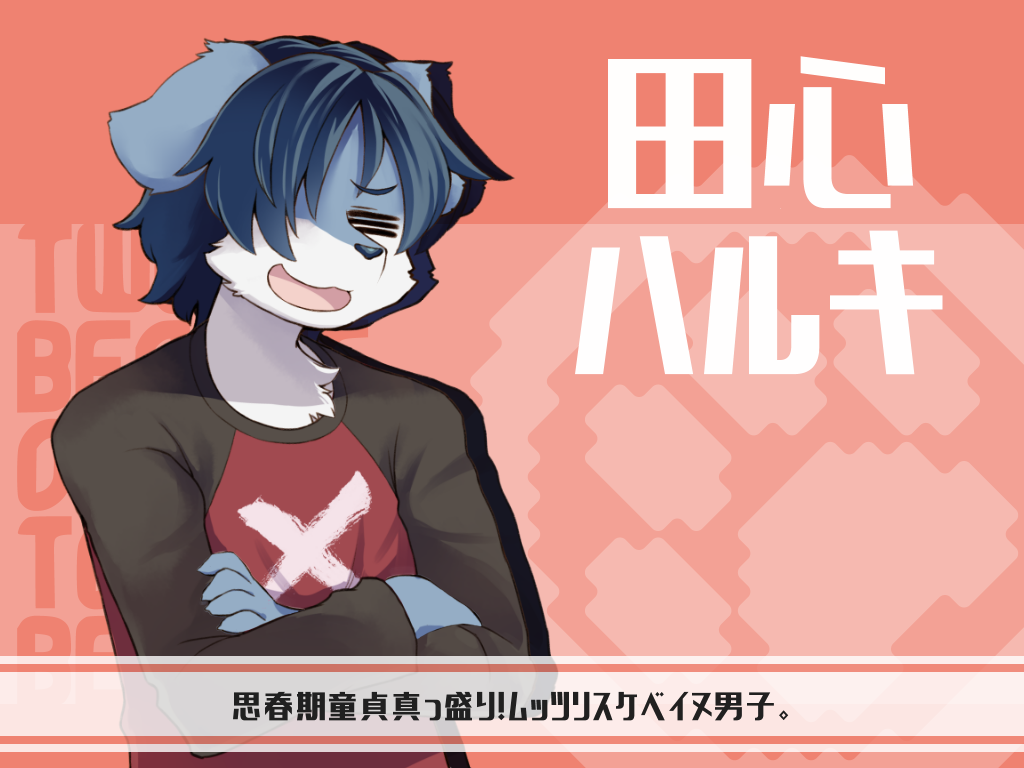
Kinosei or Haruki no Saidai no Teki wa Risei. is an indie (or doujin if you’re gonna be a dork about it) game released by the circle Toki Nokogiri in September 2021 with the aim of being a fully realised all furry heroine nukige (game you especially jack off to) that commercial games won’t deliver. The game fully delivers on this premise. The presentation is very professional and the game features art by some of the most notable artists in the Japanese furry scene, names that would make any furry pog out of their fuzzy little gourd. The stated goal of the game is to plan for the perfect study date. The system is a classic map movement and time management combination that I tend to get a bit frustrated with in older games but I found it generally really fun to try to get a PERFECT RUN (which funnily enough requires not getting any sex scenes). After you’ve filed on your schedule the game also features achivements to encourage trying to get various meme runs to work. Now the unstated real goal of the game once you’re done gaming is of course to do the sex with the nice furry ladies smell and hair nice booba good. When in a dangerously horny situation you’re presented with minigames which get harder depending on how horned up the softboy protagonist is, if you’re done gaming you ofc want to fail these. Every guest artist heroine gets her own scene and ending, CG count varies a bit but all the sex scenes are animated and juicy. Now I hear you “Zodi what does this game offer me if I’m not a furry?” and please go ahead and just bookmark the title in your brain for when you realise you are in fact a furry and thank me later.
Okay let’s jump way way back in time to the 00s (pronounced “naughties”) and to the now gone eroge brand Crossnet (later Apricot). If you’re not familiar they’re the brand behind Ayakashi, if you’re still not familiar they’re the brand behind the Maple Colors games (vndb) which I’m about to talk about, if you’re still not familiar you must be an eroge zoomer so please don’t leave just because these games are OLD I promise they’re totally radical and friggin sick dude.
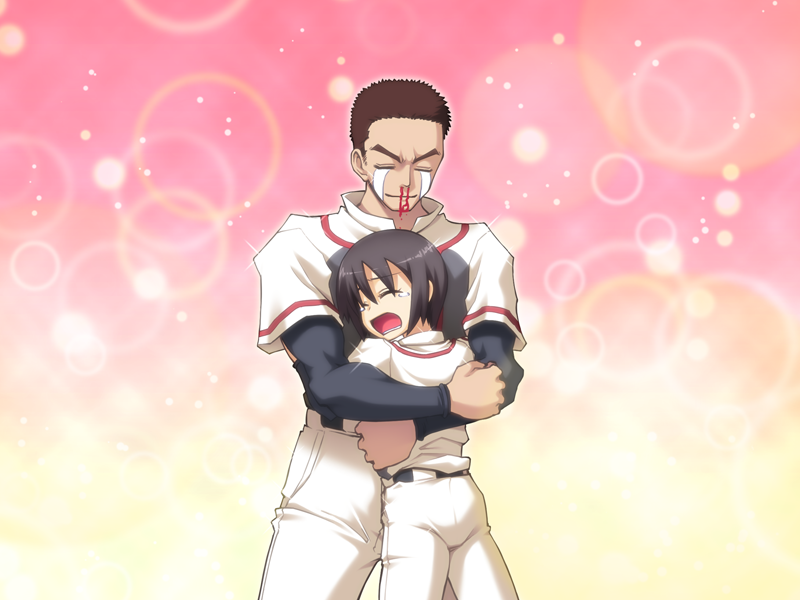
Maple Colors 2 is the sequel to Maple Colors and I think it’ll be funnier if I only talk about the sequel so that’s what I’m going to do. Like the original the game is about a boy transferring to a new school and ending up in a class of outcasts and having to help bring them together to win the school festival. As a 00s crossnet game the presentation is insane. For Maple Colors 2 the CG count has gone down a bit and the lip flapping has been removed but the deft use of sprites breathes even more movement and life into it than the original. The old crossnet games probably have what I’d consider the best presentation quality in eroge. The clever use of sprites and CGs makes it feel more animated than animation ever could, they’re truly the Ningyō jōruri of eroge. In other words they look nice. When I picked up the Maple Colors games I was in a pretty bad place and needed something that would manage to produce good chemicals in my even dry old brain and I honestly couldn’t have made a better choice. Maple Colors 2 is just pure unabashed fun, most of the game has aged very well with a couple of exceptions for some iffy jokes which to be fair wouldn’t be out of place in modern eroge either. The gameplay suffered some sacrifices from the original as it’s more linear and less of an adventure game, the minigames are also generally a bit easier. These sacrifices were kind of necessary though for the new focus on the extended cast, a focus the original was severely lacking in. I love all my little freaks but more than any of them I adore the absolute gremlin queen that is Yuka. When having a quick peek at a walkthrough to make sure I wasn’t missing any side content I noticed the walkthrough writer offered a warning. The game has three main routes each with an additional split between two heroines for a total of six heroines… That is except for one of the three which did not feature this heroine split. The walkthrough writer said not to get your hopes up since there is no Yuka route split. My head was filled with the toxic eroge-brain feeling of “tfw best girl no route”, then I got to the Yuka not-route.
Instead of a route split the theatre arc, which stars the heroines Haruka and Yuka, has Haruka be the only heroine with Yuka playing a major supporting role. Upon finishing the route you get an epilogue where you first have to complete a series of minigames on hard mode, which was a pretty fun challenge more like the tougher minigames of the original. Once all the minigames have been beaten you start the Yuka not-route which yes is set chronologically after Haruka’s route. Yuka is an aromantic girl and the kicking off point to her route is her questioning what separates a friend from a romantic partner other than sex. Now generally with this kind of set up I expect the big strong boy protagonist to teach the girl what love is and make her into a good wife or whatever. Eroge, well moege in particular, have a pretty severe problem in treating heroines who are norm breaking as having a problem that is usually solved by cock in puss straight intercourse followed by a holy monogamous marriage. Yuka’s not-route however is not a route. The protagonist, who is my son by the way, do some pretend dating according to a script written by Yuka which leads to a lot of silly hijinks with the whole gang. In the end though Yuka is still aromantic and gets to live her own best life according to her own desires. There’s a confrontation and a moment of reflection but the issue raised isn’t her norm breaking. Not giving Yuka a route was the best possible move they could have done and I was really surprised and impressed. Now I don’t think the game was trying to be #woke #based #acepilled but breaking standard form for the sake of a character shows a lot of care and love.
I uh also played some other games but nothing I can think of to highlight really. Like there was some good stuff but I don’t think I have anything interesting to say about it. I guess my take that Cartagra is really funny (intentionally) is probably not too popular but I don’t have much to say about it other than the jokes were good. Asagao wa Ai o Shiranai. was pretty cute and good. I read some other Black Cyc games I want to talk about but I’ll have to just do like a big Black Cyc post sometime. Some good indie eroge as well but nothing to highlight here really, I might have to do a followup to my post on the SEQUEL series covering the games that have come out but I feel like there’s probably people who know the series and world better than I do now!
2021 in BOPS
I think the only time I’ve really discussed music on this blog was in retrospective highlighting the Croak Not Rue EP Hotchpotch Hitoribocchi but it wouldn’t be a real 2021 retrospective if I didn’t talk about music. Had a bit of a rough year in terms of both physical and mental health so I’ve spent a lot of time just lying down listening to music and I think the moods I’ve been in have really affected my listening. My music listening in 2021 can be separated into two key aesthetics. One is a kind of concrete romantic reality, tennis shoes and canned coffee kind of vibes. The other is “menhera” which is a derogatory term for someone suffering from bad mental health, usually, if not only, targeted at women. The term has been reclaimed and used as a way to talk about mental health but it’s also been aestheticised but for good and for bad. The aestheticisation of bad mental health is of course not a uniquley Japanese thing but since the bands I’ll be talking about have self described themselves with the term “menhera” it’s what I’ll be using. The discussion of what is representation and what is fetishisation, and what fetishisation is harmless or harmful is for sure an interesting one but not really in the scope of a retrospective.
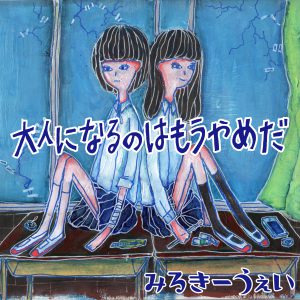
Pretty early in the year I stumbled upon an artist of the second category, like with almost all music I listen to I found the songs in the recommendations of my music streaming service which I won’t name since they’re not sponsoring me. Milky Way is a self described “Upper menhera”, upperin the sense of how drugs can be uppers and downers not in a sense of being of higher class or quality. Her music has a strong classic rock influence with some rad guitar riffs and often an upbeat tempo, but where she really shines is through her raw lyrics and vocals often expressing real experienced trauma such as bullying. Her songs work through some very complex emotions which shine through her vocal performances. I’m not a big music reviewer man so I’ll just link one of her recent music videos if you’re curious.
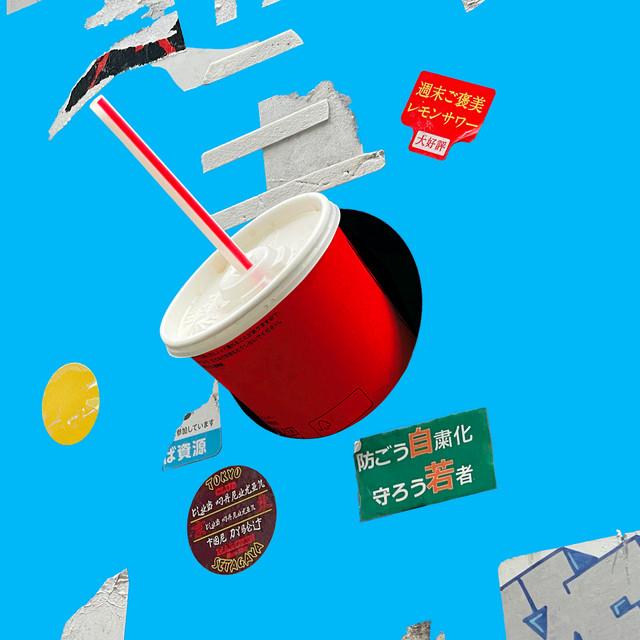
In the first category I’ve been into the band yonige ever since I first heard them as the opening band at a tricot show in Nagoya in 2019. When I think of sneakers on asphalt and lukewarm canned coffee I think of yonige. Wanting to find more bands with a similar sound lead me to discover TETORA and Hump Back. At this point I was so deep in the three piece girl’s rock band pit that I was worried I’d never be able to listen to a band with four members again. Eventually I found my way back to yonige however with their latest EP sanzensekai which is easily the best thing they’re released so far. From start to end it’s all bangers. That good good concrete romantic realism is still there but they’ve evolved their sound and play around with it more. The music video to the opening track is a short film that I’ll just let speak for itself if you want to check it out.
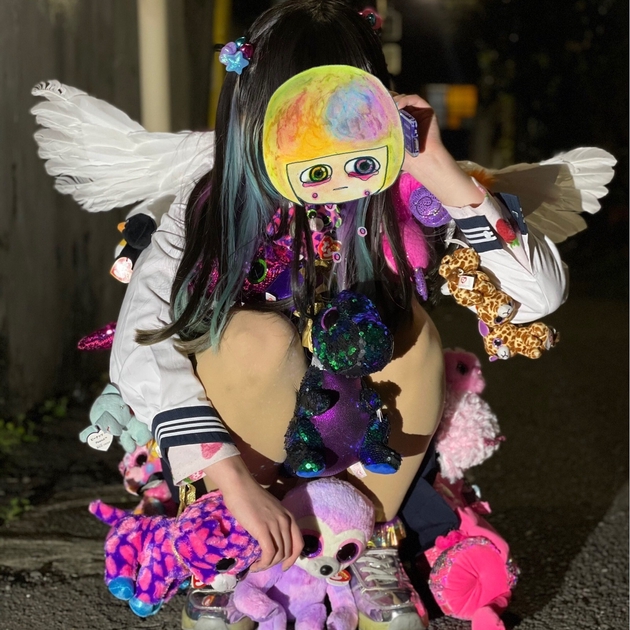
Now the most interesting musical discovery I’ve made this year is without a doubt Tokyo Renbo, I’ll link their twitter since their homepage is… it’s a thing for sure. Tokyo Renbo was again recommended to me through the mysterious algorithm of the music streaming service I use despite having only one similar band listed: Shinsei Kamattechan, a band that while I’m aware of I don’t actually listen to so I sadly can’t comment on their similarities. Tokyo Renbo film their own music videos for all their songs, including ones they haven’t and might never put out on albums, and their by far most viewed one on youtube with 38k views is a song about cough syrup abuse. The comments are of course full of people talking about how they come to listen to the song when they’re on cough syrup. The band describe themselves as a “garbage human” band and it’s hard to really put a genre or sound to them since they switch between cheery lowfi electronic instrumentals to heavy guitar riffs, sometimes even for different versions of the same song. Their mantra of being a “garbage human” band shines through no matter if they’re doing a rap, a ballad, or a punk track though, and their aesthetic is… I’d say coherently chaotic. Even if they’re not always musically punk they’re spiritually as punk as punk gets but also firmly grounded in PRESENT TIME! hahahahaha! It’s hard to pick one song to give a good idea of what the band is like so I’ll just link one of my favourite recent music videos and the whole playlist .
I’ve found and listened to a lot of other music this year as well but again as with the games you kind of have to pick what to highlight for a retrospective. I don’t think I’ve written about this on the blog before but I’m a pretty big fan of the Japanese electronic music producer yunomi and he’s had a pretty cool change in style in 2021 doing some more experimental stuff even with his vtuber collabs. YUC’e and toriena have also released some real bangers if we’re talking Japanese electronic music. Also found myself becoming a fan of the Denonbu tracks with Tama Kurogane vocals (I don’t know who or what to link here I don’t fully comprehend the idea of having like a fictional anime character universe of EDM albums). Even if I’ve been on a j-rock kick I always find myself going back to my electronic roots even with the denpa genre being mostly dead at this point. Ready for the fourth wave of ska and denpa revival in 2022.
2021 in COMICS
Alright so I haven’t read a ton of manga in 2021 just going to be honest with you upfront. The two things I have read I want to highlight though so they’re getting their own section anyway!!
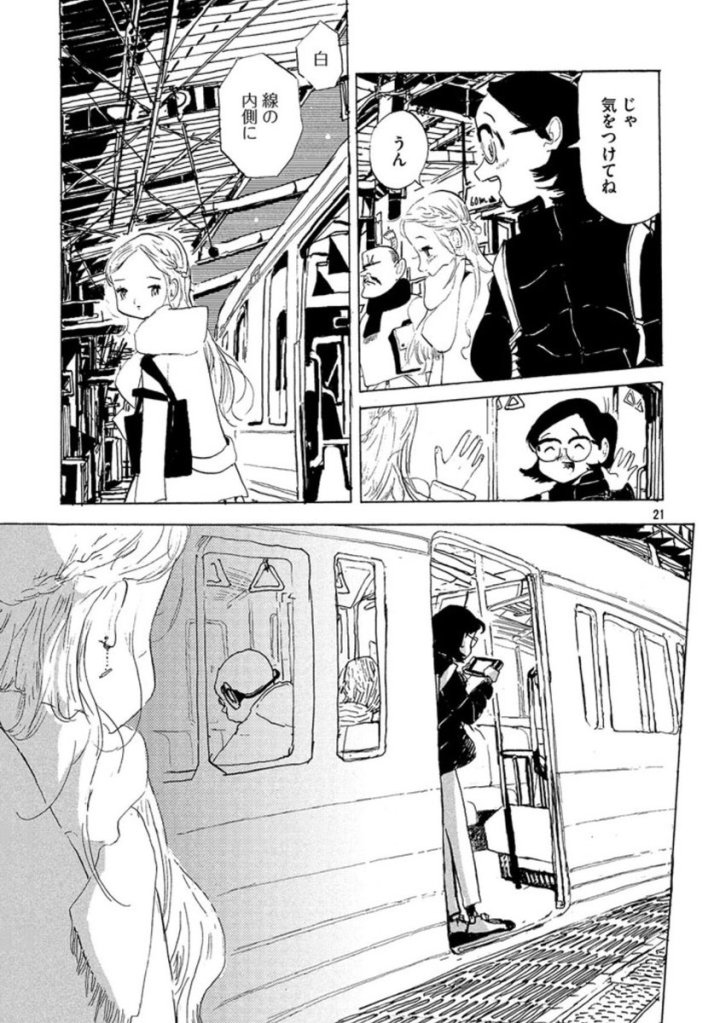
Miyazaki Natsujikei is one of my favourite mangaka so this isn’t a wowie new discovery but I’d like to talk a lil bit about her latest series Anata wa Bun-chan no Koi, which started publication before 2021 but it had two volumes released out of the three so far in 2021 so I’m gonna count it as a 2021 release. Now I’ve only read the first two volumes so far but they’re good enough that I feel like I need to highlight them even before the series is done. Miyazaki’s works are what I’d call emotional realism, they’re usually surreal in both story and visuals but the elements that are heightened from a literal physical perspective show an emotional reality. Bun-chan is slightly toned down and grounded compared to Miyazaki’s anthology style works but hits even harder. Bun-chan is a love triangle but rather than focusing on just relationship drama it focuses on the emotional experience of the titular protagonist Bun-chan. It’s a painfully real read which reminds me a lot of Miyazaki’s earlier work Yuugata made ni kaeru yo which up until the release of Bun-chan was perhaps my favourite work of her’s. If you haven’t checked out any of Miyazaki’s works please do they’re all amazing and while Bun-chan isn’t complete yet it’s an easy recommendation from me.
It’s no secret that I have been fully transfurmed into a nyanbinary yiffreak at this point and through Japanese furry twitter (which is great and full of amazing artists btw) I discovered a lil twitter comic called kemofujin (I believe the artist, whom I’ll call Fujisou but they have an endless amount of pen names, likes the translation “madame beast”). The comic absolutely blew up and at this an official publication has been announced as well as an ASMR version which I’m… still not quite sure how you turn a comic into ASMR but I guess I’ll find out eventually. What got me into the comic was of course the cute furry hitoduma (married woman) protagonist but when I dug into Fujisou’s earlier works I very quickly became a fan beyond the long muzzle of madame beast. I’d like to give their work a more proper write up someday and I’ve only read a small chunk of their pretty large bibliography so I will try to do a quick intro and touch a bit extra on the works I find especially interesting.
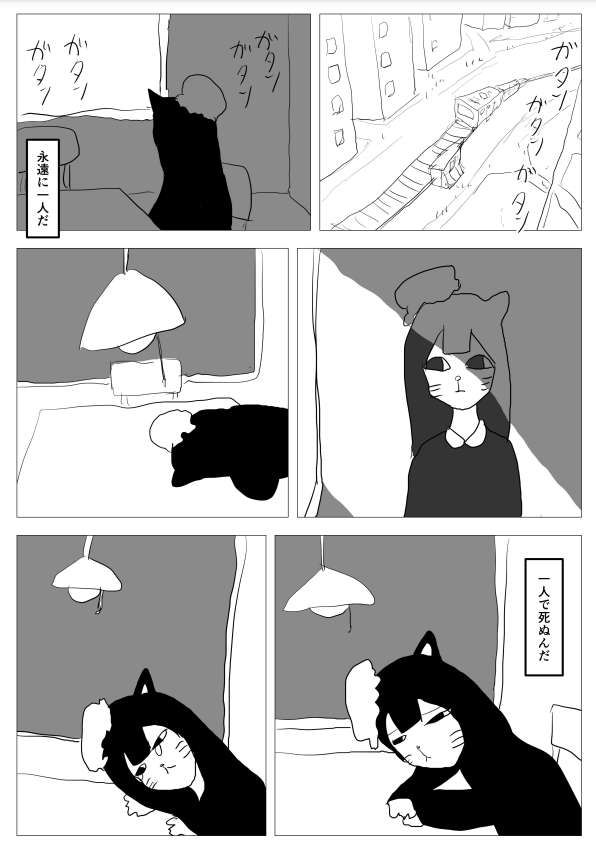
Fujisou experiments a lot with the limits of the comic medium, and since they aren’t a professional artist and use their manga as a way to practice they also experiment a lot stylistically. Neko-chan no Chou Bouken, which I wrote a twitter chain on a bit ago is a good example of this since it consists of a couple of very distinct parts. Neko-chan begins with a personal journey expressed mostly through expressions. The chapter is an exploration of an alien landscape but has a tight focus on the protagonist and her loneliness. This then leads into a hard science fiction chapter about a conflict of two ideologically different camps of super (cat) humans. Which then leads into a chapter of poetry. Which then leads into another hard science fiction chapter but this time focusing both on a character’s loneliness and the construction of a system. Which then finally leads us to a chapter about going out and getting some nice food with your best friend. The parts are all distinct in presentation, focus, style, and genre but form a whole as a piece on lonliness and communication and also a story of a relationship between two people (despite the chapters often not sharing casts). Fujisou works a lot with scale and seems very much interested in how everything is built up by a series of smaller complex systems. Neko-chan is both a small story about a lonely lil cat girl and a grand narrative about humanity and how we attempt to connect with each other. Neko-chan quickly became a new favourite manga of mine but I feel like I have to move on and talk about another of Fujisou’s works to get their focus on shifting scales and intricate systems across.
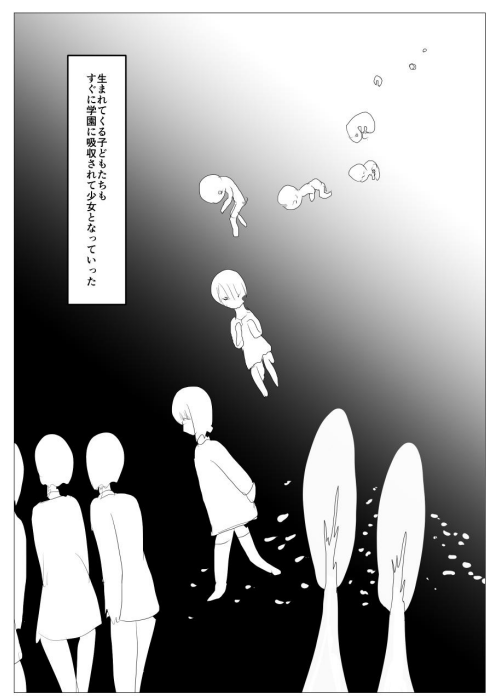
Ark Azana will be hard to describe without sounding insane. Unlike Neko-chan the genre is consistently yuri hard science fiction throughout but it’s not at all what you’d expect from seeing that combination of genre words. Ark Azana is not a science fiction story combined with a lesbian romance story, Ark Azana is a hard science fiction description about the creation and evolution of a system that is sustained through a process similar to metabolism except it consumes girls and produces yuri (as well as waste products in the form of for example high school graduation degrees). The yuri powered system grows more and more complex and through it the universe is discoverd. Like Neko-chan there’s a core idea of human communication but Ark Azana isn’t really about any characters, instead it’s about how perception creates the universe and how language affects perception. I don’t know if Ark Azana can be called a story in the traditional sense. It does kind of have a protagonist and a lot of the manga consists of interviews with her but more than a character she is a representation of the force of yuri. She is also just a girl and an aspiring yuri creator but primarily she is a force of nature. There’s also not really a plot? It’s more of an exploration or a study than it is a story. There are story elements for sure but they take the backseat. What it reminded me the most of is the Alien Biospheres series of speculative evolution videos by Biblaridon, seeing the system evolve is a pretty clear parallel to the evolution of life. Unlike speculative evolution videos though the system can also read as a societal system and then beyond that is the greater philosophical look at language and communication. Ark Azana is a lot, like just a whole lot. I love Neko-chan more because of the personal and emotional aspects of it but Ark Azana is for sure the wildest thing I’ve read from Fujisou so far which… really does say a lot.
2021 in conclusion
Okay so I was considering doing a section for movies as well since I’ve had the pleasure of watching a nice selection of eroguro and eroguro adjacent cinema this year but I think I’d like to have a separate space to talk movies in. I do have a letterboxd now with a handful of reviews and a lot of questionable star ratings but I’ll refrain from going in deeper on any movies for now.
The game section being all 18+ games is because the only non-18+ game I’ve been playing is Super Auto Pets and I’m not going to talk about an Auto Battler in a blogpost, I have an image to live up to.
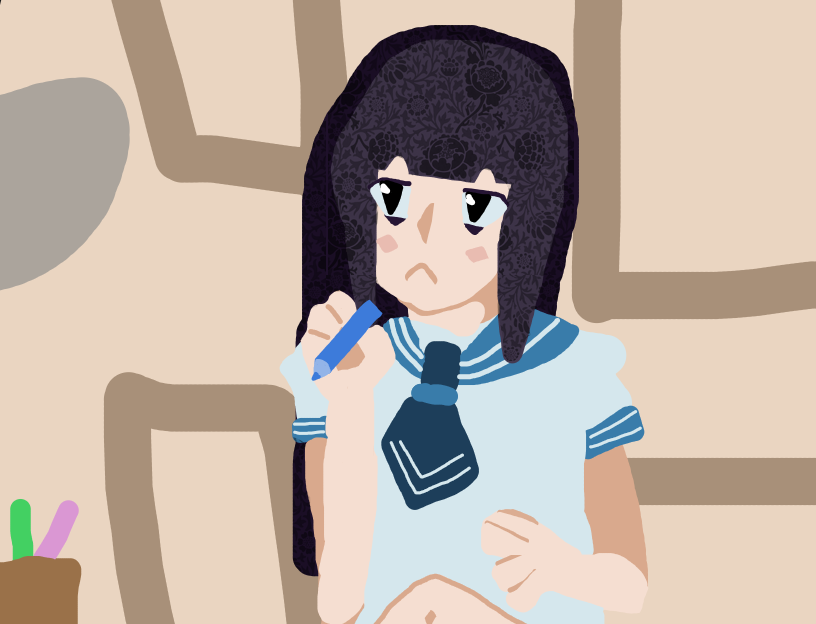
Oh I would be amiss in not mentioning how I made two games of my own this year, probably should have included this in the gaming part so people could see it before they gave up on this mess of a post. Both of the games I made can be found and downloaded for free here. I guess I’ll do a quick lil comment on them here exclusive for the people patient enough to make it this far. Garfpg was in part born out of my recent obsession with garfs and in part born out of just a general frustration. As a Q+ of the LGBTQ+ I occasionally get the dark forbidden desire to see representation of things I struggle through or jokes about the stuff that’s weird and silly about life as a grade A queerdo (a combination of queer and weirdo meaning to be a queer weirdo). Sometimes I just get a bit fed up with reading boy problems and the joy of going “MY SON!!!” fades from the world as the black dog comes knocking on my door with his uh depression paws or something. Periods like this often leave me feeling annoyed and creatively starved, which is why I ended up making both Garfpg and sCum sQuad. Even though I may not have been fueled by the most positive creative juices while making them, they’re both made with the intent of being fun silly lil games with stuff I love seeing or would love to see more of in games. Like creative dick destruction for example. Both games are pretty heavily influenced by Sonic Inflation Adventure which is still my favourite language novel game and a definite recommend even though the first part sadly requires a newgrounds account to play nowadays. Both games were made within a week each and while I think Garfpg has wider appeal (since there’s no cock crushing in it) I’m really pretty proud about how sCum sQuad turned out. Trying to get the presentation quality I wanted out of RPG maker and out of my 6 year old level art skills was definitely a challenge but I found some fun creative solutions. I think I’d really like trying to make more games in the future but it’s pretty time and work consuming so it’ll probably be harder and harder to find the time for it.
Thank you for reading all the way through this mess of a Retrospectivaganza℗. I hope you found something in here that got you pogging out of your gourd and if not I’m very sorry for wasting your time!
Lots of hugs and smooches,
Your definitely one and only best friend,
Zodi
XOXOXOXOXOXOXOXOXOXOXO 😘😘😘😘😘😘
Yami no Koe: a Casual Spotlight

Foreword
There’s been three different posts I’ve been wanting to put out there this year. I’ve even gone as far as planning out sections of them and attempting to write drafts but hit a wall every time. This post is not one of these three.
After hitting all kinds of walls I found myself desperately looking for something to shamelessly comfort myself with and ended up landing on a series of games that I’d had in my peripheral for quite a while. The original Yami no Koe was released in 2001 and was the first work released by Black Cyc, known for games like Extravaganza and Gore Screaming Show. Being a fan of Black Cyc’s major titles I was curious about this piece of history but the biggest reason I wanted to get into the series was the cover character known simply as “Sayoko”. Sayoko set off my “absolute queen” radar just from a glance at the cover of the first game and I desperately needed to know if my readings were correct (spoiler: they were).
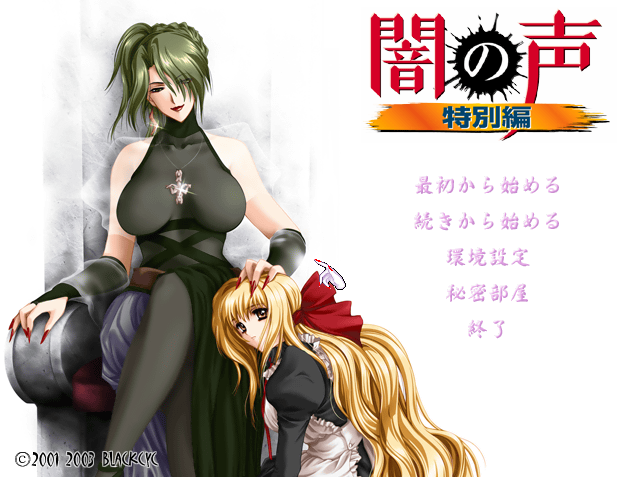
While reading the first and second game of the series I started to feel like it was being slept on, why wasn’t anyone talking about these games? I felt like I needed to write a big analysis and recommendation post talking about this hidden gem of novel game history. It then dawned on me that there wasn’t really much for me to talk about. I was just having a good time. This post won’t be a big brain serious analysis nor will it be an uncovering of a long forgotten alt kamigem. This is a casual lil chat about a series of games that did some funky weird stuff I had a good time with. I don’t know what kind of spoiler warning to use for this post since the games don’t really have much of a plot to spoil, I’ll try to not ruin any of the fun surprises though.
The series consists of arguably 3 main entries and 4 side games. I will probably mostly talk about 1, 2 and Zero since I consider these the actual main games of the series which might be a bit confusing since there is a 3 as well but I’ll explain why 3 is basically a side entry when we get there.
Yami no koe
There’s quite a bit that needs explaining when talking about this series since it does a lot of stuff a bit differently from what most people think about when they think novel game. The original game opens with Sayoko talking to the titular “yami no koe” or “The voice in the night” as it’s translated in-game. We’re then introduced to our cast of “victims”. A group of university students and their lecturers on a boat as well as a stowaway who’s looking to get on an island that’s not on the map. The group end up in a storm and stuck on said island. Pan up to Sayoko’s mansion as the theme song hits. A beautiful little B horror opening. The group find themselves in the mansion and in the clutches of Sayoko and her mysterious maid called “K”. This is where the game truly begins.
Up until this point it’s been a pretty standard fair horror opening but it’s important to note that this whole opening was all dialogue. The yami no koe games generally do not have any narration, the side games that do use it fairly sparingly. Another important thing to note is that by this point there’s no clear protagonist. This is because there is no protagonist. Okay so we’ve established that these games have little to no plot, no narration, and no protagonist. So what the hell are they?
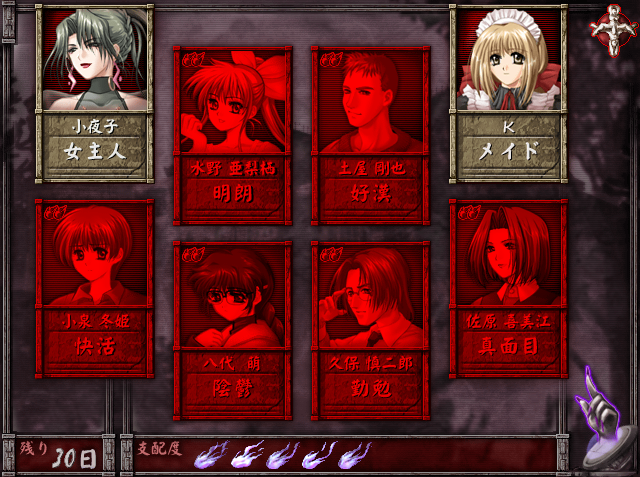
Let me introduce you to the gameplay of Yami no Koe. The gameplay of the first game lays a good groundwork to discuss what later entries switch up or improve on. The stated goal of Yami no Koe is to “corrupt” the group of outsiders who ended up in Sayoko’s mansion. You accomplish this through the screen above. Characters in red are “uncorrupted” and you drag and drop “corrupted” characters on them to level up one of two “corruption” bars, a red and a blue one. The fire at the bottom is your energy and the fire on the top left of character portraits is how much energy it’ll cost to to drop someone on them. You’ve got thirty days, as you can see in the bottom left, to “corrupt” everyone and if a character remains completely “uncorrupted” after a couple of days they’ll flee the mansion. Each character has two levels of “corruption” and to get the true ending everyone needs to have a full “corruption” bar and be at level 2.
Now here’s where it gets real fun. Once a character has reached level 1 “corruption” you can use them to “corrupt” other characters, which is to say you’re no longer limited to just Sayoko and her maid K. That’s right you can ship characters in this. Different combinations of characters and levels of “corruption” will lead to different scenes. Which leads us to the most important screen in a Yami no Koe game. That’s right. The scene gallery.
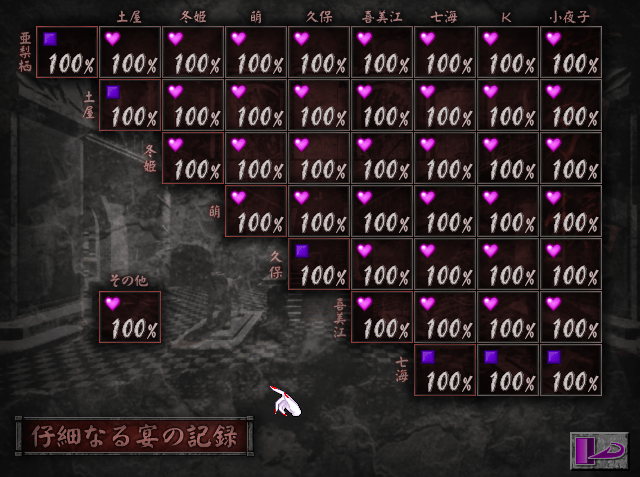
Posting my full completion screenshot to flex. Hearts means there’s sex scenes, squares means there aren’t, and the percentage is of course completion of scenes for the specific ship. The points where a character is crossed with themselves are scenes of them being alone (occasionally masturbation scenes).
Okay now here’s where it gets real real fun. So as mentioned earlier characters have two separate “corruption” bars. This is because characters in Yami no Koe have two different paths they can be “corrupted” down. It’s basically sex pervert Pokémon, they of course even look a bit (sometimes very) different after evolving. So not only do you ship different levels of” corrupted” characters but also different types of “corrupted” characters. All ships of course don’t yield sex scenes but all ships at least have some kind of short throwaway scene.
Now that you’re familiar with the system you might go “Oh I see so it’s a sexual corruption kind of game? That’s kind of off-brand, Zodi. I didn’t know you were into this kind of stuff”. To which I’d reply: “Did you not notice the insane amount of scare quotes I used???”. Yami no Koe presents itself as a horror and a corruption game but it becomes very clear very fast that this is simply an aesthetic. There are a couple of rules set up for the “corruption” by Sayoko. First of all a person can’t be turned into something they’re not, Sayoko doesn’t create a fetish or perversion. The goal is to give a character a context where they can live out fantasies or selves they wouldn’t be able to in society. Sayoko also doesn’t allow any non-consensual acts of any kind within her mansion. Sayoko’s stated goal is just… pleasure. She’s not a good character, she’s an unknown non-human entity driven by desire. You’re set up to expect the “corruption” to lead to some form of destruction. For characters to start harming each other or themselves. In the end though everyone just kind of has a good time. When you match up two level 2 “corrupted” characters who have no interest in banging they’ll usually just offer each other words of encouragement and understanding. When you match up a level 2 with a level 1 sometimes the level 1 will comment on how they’re still struggling a bit to find themselves and the level 2 will try to offer some advice.
Yami no Koe is about characters finding a safe space to stop trying to adjust to the norm and live out their deviancies and Sayoko is there to help them along the way. She even literally performs magical sex reassignment surgery, like no joke she does this in every game. Which takes us to the next key element of Yami no koe other than the sex pervert evolutions and the shipping: it’s just beautifully and amazingly queer. We’ll get into this more with 2 but keen eyed readers may have taken note of the gorgeous cursor in the screenshots. Nails are a recurring and important part of the series. There’s a burlesque or drag queen aesthetic running through the games but long painted nails take the top billing, being described as sex symbols (and tools) despite the uh, inconvenience they create in real life for certain acts.
So in summary: Yami no Koe is a game about a group of shitty normies ending up in the sweet fuck mansion of a queer queen and how they all end up freeing themselves from the norm and finding selves they’re more comfortable and happy with. And this is accomplished by shipping and Pokémon style evolutions.
Yami no Koe II
Yami no koe II switches it up a bit and now the maid K is sent on her first mission alone to liberate a stuffy isolated private school from the chains of normality. Unlike the first game the characters in 2 only have one “awakening” (gonna start using this word over corruption when relevant from now on) path but there’s twice the amount of main characters to make up for it. There’s also a support character style system where during the first stage of awakening you can seek help from a side character. Characters don’t flee this time but the time limit is a bit rougher. The shipping is left the way it was before so yes there’s that beautiful gallery screen.
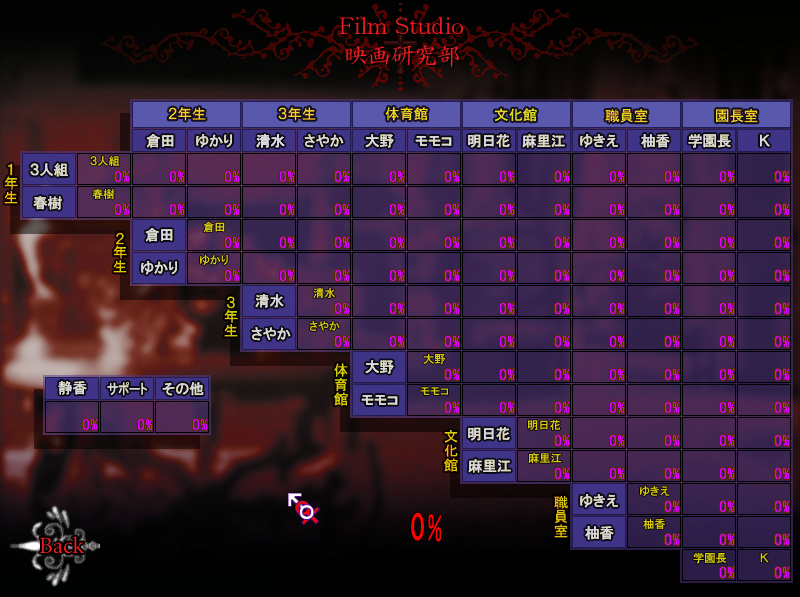
Showing the original screen this time so you can see what it looks like without anything filled in, the hearts pop up as you get scenes. The game introduces one unnecessary and kind of dumb addition to the gameplay which is that you have to find characters before you can corrupt them and there are certain requirements to find certain characters. This really doesn’t add anything to the game other than some initial annoyance since once you’ve found a character they’re there on the shipping screen like in the original.
So without the queen you might expect things to tone down a bit but oh boy does Yami no Koe crank it up to 11. Yami no Koe II features a scene of a girl with a penis wearing nothing but a towel around her neck and drinking a can of beer while fucking a trans girl from behind and also putting a lit cigarette up the trans girls but since they “taste better” that way. I wrote earlier that I didn’t want to ruin the surprise but I feel like I just have to share this scene. Yami no Koe II also features a series of sex scenes where the gimmick is that the girl is wearing different coloured nail polish. Speaking of nails the game is just full of CGs dedicated to them.
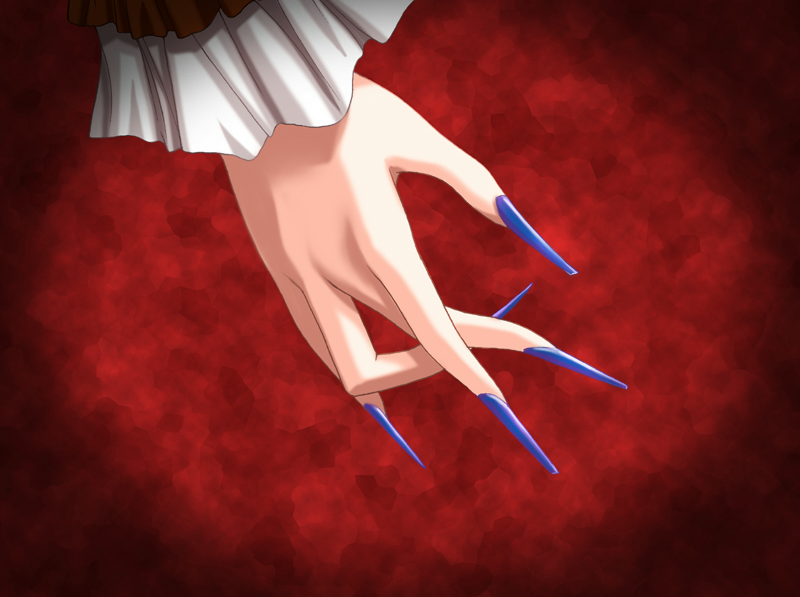
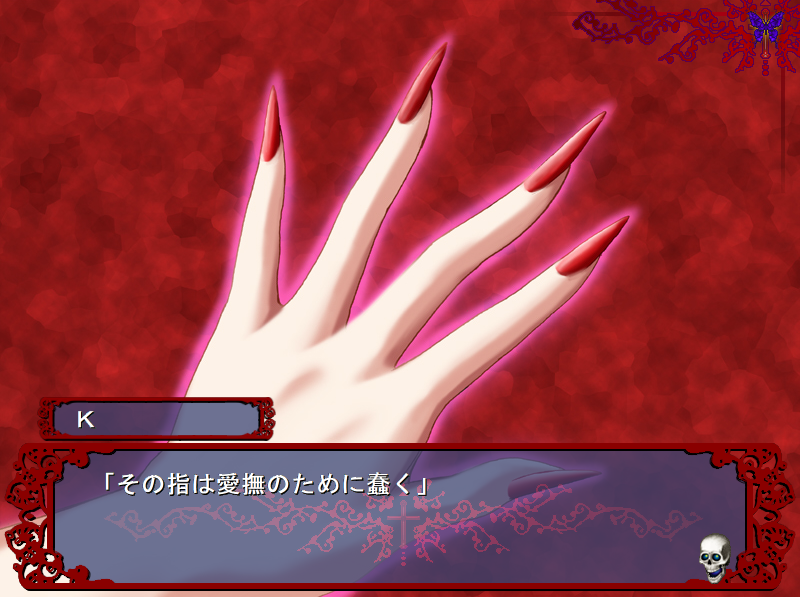
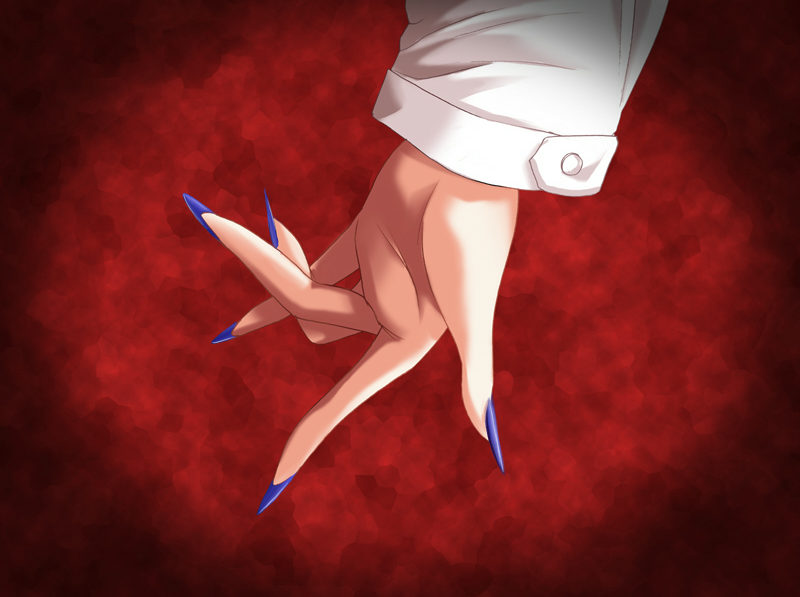
Really I think images explain the game better than words. Yami no Koe II is almost pure aesthetics. From the high concept sex scenes to the flamboyant dialogue to the cute skeleton friend in the bottom right of the text window. The preface of horror is thrown out the window almost immediately to make way for characters having fun crazy sex. Oh yeah I forgot to mention this when talking about the original game but both the original and 2 feature straight, lesbian, gay, and none of the above pairings. You get almost the full rainbow. After you’ve beat the game once there’s also a hilarious side story you can get parodying “normal” corruption games.
I don’t have much more to say specific to 2 I think so I’ll drop another pic that I think really sums up the whole experience instead.
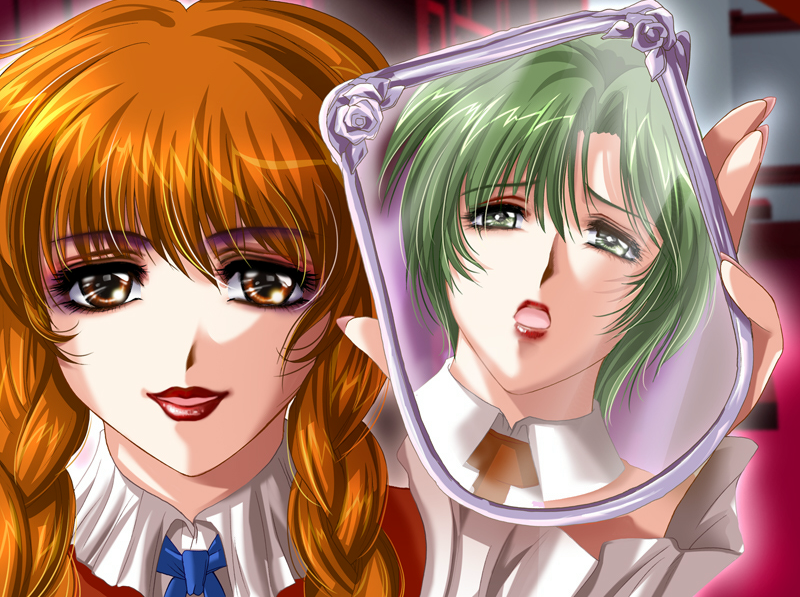
Yami no Koe III
Okay so Yami no Koe III is… very bad. Unlike the first two we’re given a random male protagonist who goes around using tools that break Sayoko’s rules to actually corrupt girls. There’s no shipping either so no shipping gallery. The game is set in the Yami no Koe universe and does feature characters from the first two for like two scenes total but even calling it a part of the series feels like a stretch to me. The only thing the system shares with any of the earlier games is that the characters have two corruption paths like in the original. Unlike the original these two paths aren’t natural “awakenings” caused by the same core struggle against social norms but instead the protagonist forcing girls to change using magical items.
The game is more or less written around a joke where the protagonist never personally gets to have sex with any of the heroines and the punchline is kind of funny but really doesn’t carry the game at all. It’s a worse version of the side story you unlock in 2 really. Anyone interested in the serious could genuinely skip this entry and only miss some references made in one of the side games I’ll talk about in a bit.
Yami no Koe Zero
I’m jumping in release order here to keep the spin-off games for last. Yami no Koe Zero is the game I’d call the third main entry of the series and it takes place before the events of the original game as you might expect from the title. The game establishes a lot of lore for the Yami no Koe universe and shows the origin story for “K” which I have avoided talking about since it’s probably the one spoiler sensitive part of the series so I won’t get into it here either.
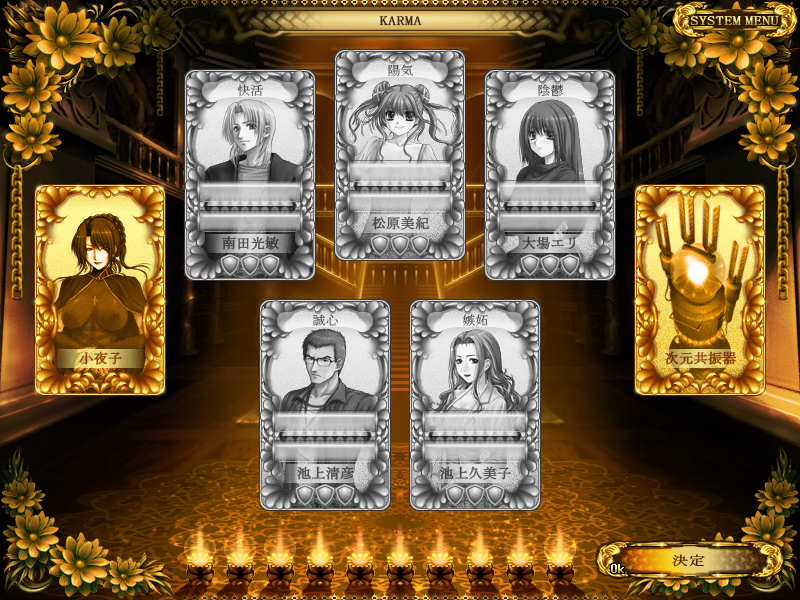
Back to a familiar screen. Zero’s system is an improved version of the system in the original game. The biggest change is that rather than a hard time limit you know have a very limited amount of days to get everyone to level 1 but after that you can spend as much time as you’d like. This makes the game a lot easier and more fun to 100% but also removes most if not all the challenge. Zero’s presentation is a big step up from the original two games which makes sense since it came out 7 years after the original. The individual scenes are more substantial both in length and content and the visual evolution of characters is a lot more striking and fun. Sayoko also gets a much more active role which is very welcome after two games of her having basically no presence at all. We get more lore on her and the titular voice in the night as well, who wasn’t in 2 or 3 at all!
Yami no Koe Zero is a polished and modernised Yami no Koe game but is lacking a bit in shipping variety since we’re down to five characters for ships. The biggest loss is the lack of a male on male gay ship and sadly 2 is the last game in the series to feature it to any degree, 1 being the only one to inarguably feature it. There are still lesbian scenes, magical SRS scenes, and a variety of fetishes though. And of course the gallery!
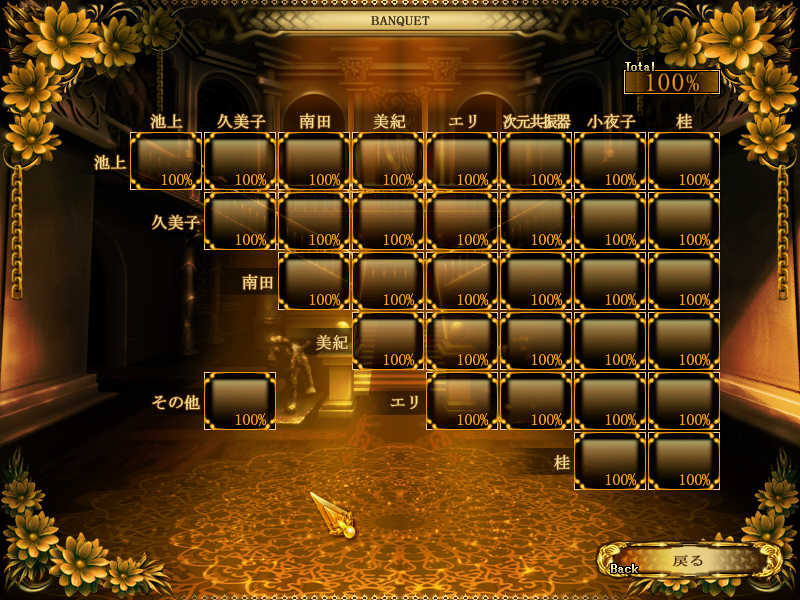
A bit less of a flex this time since Zero is much easier and quicker to 100%. Zero definitely lacks a bit of that wonderful burlesque aesthetic but is in terms of polish and substance the best entry in the series. It stays true to Yami no Koe being a series about sexual liberation under the guise of “corruption”. There’s a married couple in the game and without getting too deeply into spoilers they don’t have a single sex scene in the entire game no matter what awakening path or level you try to match. This wonderful diss of the institution of marriage will be important for a later game!
Since Yami no Koe Zero is the last proper game in the series I think this is a good spot to go over what makes the series special to me. What made me want to write a post about a series of games that’s basically just a collection of sex scenes. Talk about you know some bigger context stuff now that you hopefully have a bit of an idea what this series is.
Short Break for Thinks
Eroge, or at least the Novel Game variations of eroge, tend to be aimed at the demographic of men in their 30s or 40s (my source on this is what scenario writer Kazuki Fumi has said on stream) with games that make it big also aiming at men from 18 to 30 (games that make it even bigger aiming for younger boys cough yuzusoft cough). The demographic is also Japanese (surprise surprise) and I think it’s pretty safe to assume straight. This of course does not mean that every eroge reader is a straight Japanese male in his 30s, I say this with confidence as an asexual Swedish enby in my 20s. It also doesn’t mean that the eroge userbase is a representation of the average Japanese 30s dude since I’d hope the average grown-ass adult man would be less hung up on virginity and NTR. What it does mean is that you can get a general idea of what kind of person these games are written for and if you’ve read enough eroge it’s very easy to tell what sexual content is considered normal and what is considered extreme enough that it has to be locked away with DARK brands like Black Cyc or Clockup. Sex scenes in eroge tend to be so homogeneous that you can guess with fair accuracy not only what scenes a game will have but even in what order they’ll be in. For the people this content is aimed at this is like delivering on a promise, a well known and practiced model. For the people this isn’t aimed at this means that despite reading hours of porn games every day you still have to resort to obscure self-published online porn comics to get any kind of sex related stimuli whether it be physical or intellectual, or both maybe you have a very smart nut I won’t judge.
Just like how the mansion in Yami no Koe is a safe haven for all the weird lil sex perverts who end up there, the games are for real weird lil sex perverts. The sexual content is varied and creative without dipping into noncon (okay there’s a bit of noncon RP but like nothing TOO bad). The view on sex in Yami no Koe is extremely fresh in the context of eroge. It’s fun, silly, weird, open, and most importantly it’s horny. Yami no Koe is a series where an unknown all-powerful being shows up on earth to drive people into sexual insanity turns out to be pretty chill and fun compared to the crushing social pressure especially around sexuality in society. It’s like an analogy for what it feels like when I’m just done with “normal” eroge and have to venture down the clockup pit. The games aren’t even particularly progressive, they say some pretty unfortunate stuff at times and since the whole point of the series is people being horny there’s some erasure of asexual folk (although the games are pretty cool about people who only want to jack off and aren’t into sex which is nice). To me the series just felt like a reminder that hey sex scenes can be a ton of fun and get real creative.
Yami no Koe Ibunroku
Alright so I haven’t actually mentioned the staff before so I’ll do that now since better late than never. The games are written by Maboroshi Sakuya and the art is by Ueda Metawo. Except for Ibunroku which is written by Izumi Ban’ya and has art by Kotomi Youji. Despite not sharing staff with the other games Ibunroku is much truer to the series than 3 but in a kind of odd way. I would describe Ibunroku as a fanfiction more so than a spin-off. The system switches things up and now there is a protagonist who can be awakened down a plethora of paths rather than the standard two. Because of this there’s no shipping this time but the game takes a slightly more usual novel game approach with the protagonist and narration and more linear story. Characters from 1 through 3 appear in the game and help the protagonist with her awakening in various ways. Now this is the first part of the game. The second half of the game is a lesbian romance story between the protagonist and an original character and how they have weird fun sex in the mansion with everyone else. The game makes some lore claims that Zero later disputes and it’s set after the normal (not the true) end of Yami no Koe 3 so it’s arguably not canon which adds even more to the fanfiction feel of it. Now I do want to make clear that I do not use fanfiction as an insult. Ban’ya has a very good understanding of what makes the series what it is and plays with that in interesting ways, it’s the kind of thing only a fan could write. He also adds scat to it which wasn’t in any of the other games which seemed like a bit of an odd choice but hey more power to you.
Oh yeah and there are some good nails in this one as well even with the different artist.

Natsu no Kotou no Yami no Koe
This one is a really short little crossover scenario with Gore Screaming Show so not much to comment on but I felt it would be weird to just not include it. Ban’ya wrote this one as well and did a good job of translating the Yami no Koe formula to a real brief three choice experience.
Sayoko
The last entry to the series titled after the queen herself. Sayoko is a… weird one. If you’re a fan of horror film series Sayoko is like the fifth entry in the series that gets like real weird with it. I’d call it the Jason X of Yami no Koe. In this game Sayoko is the protagonist and she’s tasked by the Japanese government to make people fuck to increase the birth rate. Yes you did read that right that is in fact what the game is about. It takes a more standard novel game approach and has narration and a protagonist and no real gameplay, just picking characters on a map to get scenes. The game is very funny but I’m very split on how I feel about it since it goes against what the series is about in some really strange ways and seems fully aware of it. Sayoko is established to not care for pregnancies, in fact she doesn’t even necessarily care for sex just sexual pleasure which can come in many shapes and forms. In Sayoko however she’s asked to make people have straight sex with the goal to bear children and for the whole game it just feels off. Like yes she does perform magical SRS and makes it so a trans woman can get pregnant which is pretty rad but she’s also making gay people come out as bi which just feels… strange. Sayoko herself constantly remarks how she’s prefer doing things differently and how she’d love to take care of people properly in her mansion which is also odd since then why is she doing any of this at all. Again it feels like the game was made based on a joke and while it was a lot more fun than 3 it still ended up missing the target. The game does have an insane amount of Sayoko growing a penis and fucking people which is very very good though so overall I’d say it was pretty alright.
Afterword
Yami no Koe is fun y’all. The games are real short as well so if you feel in the mood for some funky weird sex go give em a shot, they’re all available on DMM but sadly there’s no package deal. The download versions work on modern systems as well but you might have problems running the OP in which case the video file is just sitting in the folder waiting for you.
I will hopefully have more free time soon but Sweden is dark and cold right now so I might not have the energy to do more posts. Expect a 2020 retrospective sometime in early 2021 at least. The three posts I want to write if you’re CURIOUS are: A political/philosophical look into how the games Kurashiki Tatsuya wrote for Clockup discuss violence, a post on my top three Izumi Ban’ya games and the common theme they have of a girl growing up to be a woman, and a more lore focused explanation/look into the STX series by Nanashoshi Dentou including an unofficial timeline I want to draw up.
Thank you for reading!
xoxo Zodi
Rant Post About Purity Ideals in Porn
So fair warning this post is going to be a bit different from what I usually write on this blog, you know when I actually do write anything.
This post is still as uneducated, unedited, and completely based on personal experience as any other one so the format will be about the same but consider this a kind of content warning I suppose.
Oh and actual content warning: This post talks about some pretty shitty stuff because eroge is full of shitty stuff so if you don’t want to get a bit upset like ignore this one and I’ll try to do a nice one next time!
I tend to want to highlight and talk about things I enjoy. I feel like it’s much too easy to criticise and point out issues when trying to seriously discuss pornographic games and a lot of the time you end up just preaching to the choir. Pornographic video games is a niche subculture and very segregated on top of that, you quickly end up either sorting yourself or being sorted into a pocket corresponding to the genres you read, the language you read, and to what degree you actually consider playing porn games reading. I of course don’t mean to imply that these little pockets agree on everything but they’ve all heard your hot takes before so why go write a bit blog post about it?
Well I have a lot of free time right now is the honest answer but also this is a topic that has been on my mind since I first engaged with visual novels in 2012 and a topic that remains on my mind even 200+ novels later (look at me appealing to my seniority here by pointing out how much I’ve read for how long don’t I sound convincing). If you were to ask why all the heroines in the game you’re reading are virgins in a visual novel community you’d most likely be met by people who have clearly heard this question asked a million times. They might give you recommendations for games that do have heroines with sexual experience, they might just go “Yeah I know it sucks”, they might tell you that “There’s nothing wrong with wish fulfilment!”, but most likely they’d just ignore you. From the outside it seems odd to have such a large chunk of a whole medium of porn appeal to defloration fetishism specifically but as a Visual Novel reader it’s a status quo that seems almost unproductive to question, everyone knows about it and it’s not changing.
The aim of this post is to look at the purity ideals in adult games (specifically Japanese ones since I’m sorry I’m very under read when it comes to adult games made in other languages even though I made the only Swedish language one as far as I know). I’m going to bring up examples of how they are expressed in games of various genres, compare the similarities, make some conclusions about how these ideals affect how we draw the lines for some of these genres, and probably go off on several wild tangents I’m sorry.
Alright so let’s kick this off, let’s make this the BGM for this first bit.
NTR and Moege are Part of the Same Cinematic Universe
Let’s start off with a history lesson, one that will answer the earlier question about virgin heroines quite directly. In 2004 the now closed game studio Elf released the long awaited sequel to their quite beloved date-cute-girls-game Kakyuusei (Under-classmates). Kakyuusei 2 was met with outrage, people even going so far as to mailing the studio broken discs (Japanese language brief summary on it ). The source of the outrage was that one of the heroines in the game has a boyfriend and wasn’t a virgin. This event is often stated as the paradigm shift that led to the current climate of virgin heroines but I don’t think this is a very satisfying explanation. These disc breakers didn’t just appear out of nowhere to do this for no reason, there’s an underlying mindset that lead to this reaction that existed before Kakyuusei 2 was released. This event might have scared novel game studios to appeal to this mindset but if it hadn’t been kakyuusei 2 it would have been something else. Painting the disc breakers as some kind of idiotic goblin army or natural force isn’t really fair either. As insane as the outrage might sound and as funny it is to laugh at them these people were genuinely upset and I think it’s worth thinking about: why?
Kakyuusei 2 is a very convenient example to bring up to discuss this. The disc breakers were members of the Elf fanclub, they were familiar with this brand and these games. On top of this Kakyuusei 2 is a sequel, they have plenty of expectations not just from the brand but also based on their experiences with the earlier entry. These fans had a pretty solid idea of what they expected Kakyuusei 2 to be and the heroine having a boyfriend was not a part of this idea. In other words their expectations were betrayed. The expectation of virginity already existed and Kakyuusei 2 broke this boundary making these people feel tricked by the studio. 2004 is fairly early on in the timeline of pornographic games, one could argue that it goes back all the way to the 80s and all the strip rock-paper-scissor games on the PC88 but the 2000s was a very formative time for what we now know as visual novels and eroge. Rather than a shift or some kind of sudden realisation the reactions to Kakyuusei 2 was part of solidifying and establishing genres. Kakyuusei 2 was marketed as a type of game, call it galge or moege or whatever, and failed to deliver what the audience expected and from this it was made clear that this type of game could not contain this kind of content. A game about dating cute girls can not contain cute girls with sexual experience.
With this established let’s look at a game I just recently finished called Chuu Koi (I link the vndb page because no other page for the game is still up). I’d like to translate the title to something like: an incel falls for used goods, but the actual term used is more literally a virginity-obsessed guy (used goods is an actual literal translation though, yes that is the word it uses for a girl with sexual experience). It’s an unknown little indie game so I’m not going to use it to represent some larger trends but I think it’s a funny example to bring up when discussing the baggage that comes with genre ideas. Chuu Koi starts out seemingly like a parody of the virgin-obsessed nerd boy having the protagonist act as a very vocal clown going off about how much he hates sluts and the importance of the hymen and whatnot. Then the game goes and confirms his believes by having the titular “used goods” be a scheming evil slave to the dick of the big bad sex-man. The game has two happy endings, one where the protagonist ends up with his virgin childhood friend after totally owning the evil slut and one where he takes revenge on big bad sex-man and makes the evil slut his slave by dominating and spanking her. So yeah it’s a highly unpleasant and shitty game and while it’s very tempting to use it to cherry pick it’s much too low hanging fruit to be any fun. The reason why I bring it up is because the reactions I could find to the game seemed mostly confused about what the game was trying to be. This was an interesting reaction since basically all the endings support the same core idea. To find happiness the protagonist has to protect the virginity of his childhood friend, and there’s no happiness with sluts. All the endings reach this conclusion one way or another. Whether it’s any of the numerous endings were the protagonist falls for the scheme and his friend ends up in the hands of the big bad sex man or the endings where he acts upon his incel rage and takes revenge, it’s a very consistent narrative and idea. The thing that got people confused seemed to be whether this game was trying to be an NTR game (I’ll describe this genre further in a bit) or a pure love story. The endings where the childhood friend got taken by big bad sex man were at odds with the endings where the protagonist “protected” her virginity and got his ideal virgin wife despite sharing the same views and being quite consistent in message. I think Chuu Koi illustrates just how similar NTR and moege are in terms of world view and how we build this wall between them based on some pretty arbitrary points. Even if we go by what we learnt from Kakyuusei 2, Chuu Koi doesn’t actually break this rule. The actual heroine of the game is a virgin who’s never dated anyone before and who’s been loyal to the protagonist since childhood. The girl who isn’t a virgin isn’t really a heroine, she’s an evil scheming slut who doesn’t even get to act as an antagonist since her behaviour is just blamed on the big evil sex man. The game is ostensibly a single heroine moege, a game about getting a cute pure girl. But the game is also ostensibly NTR, a game where big bad sex man takes the girls away from you. People got confused because these two genres are supposed to be at odds. NTR is about girls cheating and as kakyuusei 2 showed it’s that’s not allowed in romance games.
We’ve gone on for a bit so have a new BGM
Now I’ve been going on about NTR for a bit now so let’s actually talk about what NTR is so I can make my point. I’ll once again use the nico dictionary as my source here so here’s the article I’m basing my definition on. NTR is short for netorare or netori which means being cuckolded or cuckolding respectively. NTR is a genre of pornographic fiction where a man is in a loving relationship with a woman but the woman is sleeping with another man. In netorare the protagonist is the man being cuckolded but you also get scenes from the perspective of the woman usually, in netori the protagonist is a man fucking someone else’s wife or girlfriend. Now I tend to prefer speaking in gender neutral terms but that’s kind of impossible here because NTR has very gendered roles. Using the word “person” for the three characters usually involved in an NTR story wouldn’t really be representative. People more experienced with the genre might bring up examples where the perspective character is the woman and her husband or boyfriend might be more tertiary but even in cases of indie sex RPGs where the player character is the woman and the rando dude just kind of tags along he’s still usually called the protagonist, and this makes sense since he’s supposed to be the character you relate to or insert into. I will focus on netorare, being cuckolded, in this post since that’s usually the genre that’s put in opposition to moege. As hypocritical as it may sound I think netori, cuckolding, would be less controversial to mix with the standard moege formula and is therefore a bit less interesting to talk about.
Alright so let’s talk about how the same purity ideals that lead to the disc breaking over a girl having been in a relationship are present in a genre about girls fucking dirty old men instead of the good boy protagonist. Hey why not use another game from Elf to talk about this? ボクの彼女はガテン系/彼女がした事、僕がされた事/巨乳妻完全捕獲計画/ボクの妻がアイツに寝取られました。or gatenkei for short (yes that is a title and no I’m not going to put it in romaji it’s way too long) is perhaps one of the most acclaimed games of the NTR genre. I’m genuinely kind of a fan of the game but it does still have what I used to think were common pitfalls of the genre but have come to realise are some of the core ideas defining it. Now the game does do some work to subvert some of these ideas but I’m not going to go into spoilers, this isn’t a post about gatenkei after all. In gatenkei you have the well meaning and nice protagonist who’s kind of a failure especially sexually, you have the love interest who’s a sweet kind girl, and you got the ugly evil scheming sex man. Now the first and last role are rather rigid in the genre, there’s some variation on how much of a failure the protagonist is and how ugly the evil schemer is but in general you have the average Joe and the unpleasant “alpha male” jerkhole. The woman ranges from a well meaning girl getting corrupted by evil sex man to well… someone who’s been corrupted by evil sex men from the start. See the keyword here is “corruption”. Other than this trio of characters NTR features some kind of “corruption of morals”. As I brought up with Chuu Koi earlier, the big dick sex man turns women into evil sluts with his dick power or alpha stink or something. The woman the protagonist thought he knew is shown to be something he can’t recognise (I’m speaking in roundabout terms here to get that good punchline later). Another important aspect is the “stealing”. The girl doesn’t leave the protagonist, she’s actively taken away from him by another dude. NTR is often used colloquially to refer to just about any cheating but the genre itself is something much more specific.
New BGM for you.
NTR is based on the idea of having your “pure” girl stolen away and “dirtied” by someone “dirty”. Infidelity is corruption and often times it’s such a great evil that the woman has to be reluctant and fight against it at the start, she has to be actively stolen and broken to consider fucking someone else willingly. What separates a moege heroine from an NTR heroine is that one has its “purity” protected while the other one loses it or has already lost it. The world view is the same. Moege offers comfort in it by not letting the “bad things” exist while NTR affirms the world view by only showing these “bad things”. Chuu Koi confused people because it showed a moege and an NTR game existing in the same world, even though these parts of the game didn’t seem disparate, in fact they played off each other quite naturally. The NTR confirms that the virgin heroine moege is the true proper path and the virgin heroine moege confirms that the NTR is the result of not sticking to it. They affirm the same view that virginity is a virtue beyond most and that a woman’s value and morals are directly tied to how promiscuous she is. NTR and moege are just Slutshaming Red version and Slutshaming Blue version (this is a joke I’m not actually saying all NTR and all moege is slutshaming don’t get your knickers in a twist I just thought the Pokémon analogy would be funny I’m sorry).
As much as I hated Chuu Koi for just reading like an incel manifesto (this is a bit anachronistic since the game is from 2009 but you get what I mean) I think it managed to highlight how NTR and moege aren’t really at odds at all despite often being portrayed as diametrically opposed. They reaffirm each other. Let’s go back to Elf for a bit and consider how just a heroine having an ex was enough to break discs but a game all about the heroine cheating became an acclaimed beloved game. One might argue that due to Kakyuusei 2 the brand lost all of their fans obsessed with virginity and purity and while that might be a fair assumption I think there are two other aspects to consider. As mentioned before people got upset because they expected something else with Kakyuusei 2. With a moege you expect that comfort of all the heroines being “pure”. With an NTR game on the other hand you expect to see this “purity” corrupted. The other aspect is that hey maybe, you know, maybe the thing is that in NTR the girl who’s promiscuous is a bad person while in Kakyuusei 2 she’s a heroine that you’re supposed to sympathise with? You know just throwing out a wild suggestion here but maybe the problem wasn’t the game having a “slut” in it but the fact that the “slut” wasn’t a bad person? And hey, I’ll be straight with you here, Gatenkei does actually not just actively slutshame the heroine which is why I think it’s kind of great. So making these claims about specifically kakyuusei 2 and Gatenkei is a bit dishonest of me. I think it’s something worth considering though. How with NTR the heroine almost can’t be sympathetic and if she is she has to be broken down into just a fuck-object for big bad sex man while in moege a heroine has to be sympathetic but can’t have sex with anyone other than the protagonist. These are ideas that kind of define the genres. If a moege has a sympathetic non-virgin heroine it’s not moege, it’s bad, it’s bad enough to break the disc and post it to the studio. If an NTR story ends up going too sympathetic it’s half-assed, it’s unbaked, this is an actual thing that happened (link in Japanese). The heroine cheating on the protagonist and then getting back together with him is unforgivable within the realm of NTR.
I’m not going to claim that moege and NTR is the same, that would obviously be absurd. But they do share a world. There’s a large wall erected between them so that you can safely indulge in the fantasies of moege and then safely indulge in the catharsis for your world view you get from NTR without feeling like they mix. An ideal fantasy without sluts, and a real twisted world of evil sluts.
Now what I’d love to find out is why are sluts so goddamn scary???
HEY ZODI YOU SAID THIS WOULD BRING UP EXAMPLES FROM VARIOUS GENRES BUT YOU’VE JUST BEEN GOING ON ABOUT MOEGE FOR AGES IS THIS JUST ANOTHER FUCKING MOEGE HIT PIECE???
Well yes but also don’t worry about it we’re moving on now to part 2!!
Girls Who are Boys Who Like Boys to be Girls
(Yes I just made the title a song reference that isn’t the BGM I gave you right before it I’m sorry I don’t edit these)
So hey I’ve been talking about two very STRAIGHT genres of adult video games but what about games about gay boys and/or girls? If there’s no penis in vagina how could there be virginity worship??? Checkmate dude!
Alright so let’s start by talking about yuri since it’s what I have the most experience with and a very good example to discuss. Now I could just like point out how yuri being described as the “purest” love by the fan communities kind of proves my point in itself, but that’s no fun! Now I should also specify that I’ll again be talking very generally since I’m describing trends and I am aware this does not apply to every single work but I think this kind of stuff is prevalent enough to at least like acknowledge with a bit of discussion. Trying to sweep the dirt under the carpet and pointing at the nice examples of totally cool and sweet games you’ve put on top of the carpet is cool and all but that’s not what this post is for.
Alright so let’s face it, yuri is very often targeted towards men just like moege and NTR as talked about earlier. This is especially true when talking about adult games since well, a majority of adult games have a male demographic. I’m not going to discuss why this is in this post although I think that’s an interesting topic as well. I’ve been part of very male yuri fan communities in the past and I’m pulling a little from that experience but mostly from the various works of yuri I have played and read. Now just like how NTR isn’t just about cheating yuri isn’t just about lesbian romance. If we take a peek at the nico dictionary again we’ll find that people have drawn many arbitrary lines between what’s “yuri” and what’s “les” (レズ, a slur for lesbian in Japanese but also a genre of male oriented lesbian pornography). People have drawn the line at different points but generally the line stems from “les” being more overtly sexual and pornographic and yuri being the less sexual of the two. Already in this difference are we seeing echoes of what I was talking about earlier but hey, there’s no clear agreed upon distinction really so all we can do is look at the games that are called yuri and see what they generally do.
Yuri tends to not have male characters, there are exceptions of course, but an all female cast is fairly common unlike in boys love games where there tends to be a single required female character. The female character in boys love often serves as an insert for the reader, since a decent chunk of boys love is targeted towards women, but in yuri there is no such insert usually. Now one could argue many reasons for why this is but I think if we look at many other aspects of yuri games and the reaction from audiences when there are, it’ll become clear that men just aren’t wanted in these games. Let’s put a pin in the question “Why aren’t men wanted in yuri?” and return to it in a bit since the answer might surprise you!!!
Yuri tends to avoid actually using the word “lesbian” and related terms and favours yuri, a fairly common trope is the characters even making a distinction between the two as if there’s a stigma around just the word “lesbian”. Yuri is also often portrayed as a very youthful and naive romance, and often includes stock lines like “But we’re both girls!”.
I think it’s fair to say that the focus of yuri as a genre is “cute”. Yuri is something attractive while “lesbian” isn’t, the nicovideo dictionary touches on this a bit. In reality of course lesbian people in Japan don’t really use the terms “yuri” or “les” as much and favour “bian” instead as a self-made term to break free from the stereotypes, especially surrounding the slur “les”. Okay so in short yuri and lesbian aren’t synonymous, I think basically everyone knew this already. Yuri is a genre after all not a sexual orientation. So let’s have a peek at the etymology of “yuri” to kind of figure out why this was chosen as the word for the genre. If you’re not aware yuri means lily in Japanese, and lilies are often used as a symbol in various yuri media. So what exactly is the lily a symbol for?
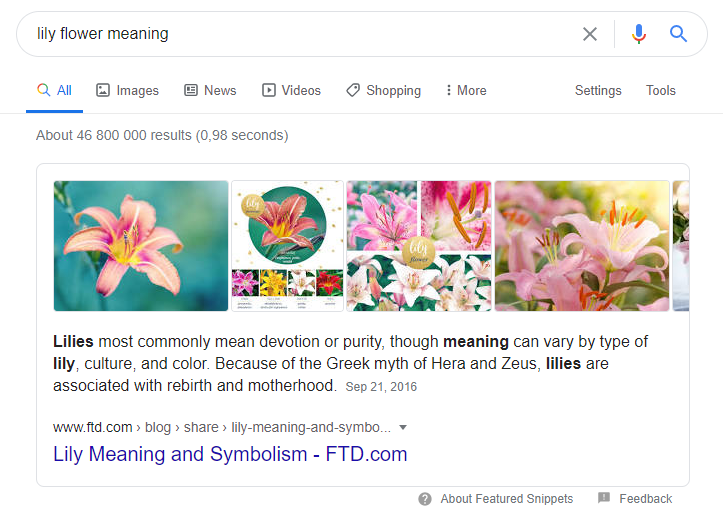
Okay so yeah lilies, especially white lilies, are a symbol for purity. Like come on it’s in the name of the thing, it’s in the symbols, it’s common vocabulary for the fanbase. Yuri being tied to an obsession of purity isn’t exactly something that needs a whole part of a blogpost for so let’s instead talk about how this is expressed in yuri. Let’s return to that question about men in yuri and look at it from this angle. I don’t think it’s a stretch to say that men being considered a hindrance or something unnecessary in yuri comes from them being not pure and also you don’t want to insert yourself into yuri as a man. Yuri is meant to be something experienced from the outside, it’s a peek into this pure ephemeral garden. Here is where I bring up my first actual example for this section I’m sorry I’ve been talking out of my ass for a bit too long now. Manakashi no Yuri ha Akaku Somaru is a game released in 2019 I think I might have discussed in an earlier post but hey let’s dig into it a bit again. To me Manakashi (as I will call it for short) is a critique of the purity ideals present in eroge but very explicitly in yuri. I won’t go into exact spoilers, and I don’t think it’s a game that’s hurt by being spoiled, but if you’re worried about that stuff just skip until the next line break. Okay now that all the spoiler lords have left let’s talk about how Manakshi has a scene where the heroine tries to wash a ripped out womb clean of semen, as well as a scene where she sews a vagina shut to take a virginity twice. It’s not exactly subtle in its critique, and yet a complaint I saw in some places (I won’t source this because it’d turn into a call out and I don’t think that’s cool so if you don’t believe me then just don’t) was about how the game features sex scenes with a male character involved. The game quite directly calls out this kind of mindset in the most grotesque way possible but it just bounced off of people. Having a “yuri” game with dicks in it is breaking the genre contract which is a problem even if it’s done intentionally to critique aspects of the genre. I wouldn’t call Manakashi’s critique especially biting, the imagery was strong but clearly ineffective to the audience it tried to affect.
Welcome back spoiler lords let’s talk a bit about how the exclusion of men seems to be what makes yuri “pure” and how it mirrors the mindset of NTR. NTR has pure good girls get corrupted by dirty slut boys and yuri solves this issue by just not having boys. Since the core issue is kind of the same, just like with moege. When girls fuck they turn into sluts and that’s a problem, purity is a virtue etc etc. And I’ve been critiquing yuri for this for a bit now but I want to make clear that like the whole trope of a “yuri” heroine being, and forgive my wording but this is a thing that games do, fucked straight is not a subversion of anything. You’re not calling out the actual issues in yuri by having a scene like that you’re just being edgy and shitty and just buying into the idea of lesbian sexuality being some kind of a youthful phase which is like one of the major issues with yuri like fucking stop. On the topic of yuri is this transient state separate from being a lesbian it’s also just a painfully obvious appeal to the purity of youth and the purity of naivety and comes with some nasty implications about what happens after this state ends. Yuri is in a way an extreme version of the comforting no sluts allowed world, a version where not even the reader can pollute the purity they are witnessing.
Alright so let’s briefly go over boys love since I ranted on about yuri for a bit and I’m still severely lacking in boys love experience. To be quick about it boys love tends to be about straight boys. Now part of this, especially in boys love written for gay men, is that there is a fertilisation of straight men in the gay community. This stems from many things like how as a gay man you’ve probably experienced falling in love with a straight dude. It’s also kind of tied to the sexual fantasy of becoming the corrupter as talked about with NTR, to turn this sweet straight boy gay or you know turn this pure girl into a slut, similar energy. Now when you look at it this way, a straight man could be a purity ideal for a gay man. It might be stretching things a bit and I apologise I have a lot of boys love reading lined up to better understand the genre. Me not being gay is not much of an excuse though since I’m also not straight so that would mean the rest of my arguments about sexuality would be about as pointless (which they are of course). Boys love does have the upper hand in the virginity race since it has both 童貞 (doutei, male virginity) and 処女 (shojo, female virginity) as common terms for virgin penis and virgin butt. That’s twice the virginity you can get in straight moege so if virginity-worship really was just about virginity and not about being scared of sluts then I guess yaoi would be ideal for the virgin-worship folk.
Quick aside about gyaru
Yo so I started writing the conclusion and realised I wanted to include this bit so forgive me for doing some minor editing to fit this in. I think a pretty clear symptom of this shitty mindset around purity is kind of perfectly expressed in the subcultural appropriation of gyaru in otaku media. Gyaru for those who don’t know is a pretty wide term covering a lot of subcultures through a lot of decades but you can generally summarise it as a counter culture among young women. The idea is that they object to a lot of societal ideals around well purity and the ideal Japanese woman or what not. In otaku media gyaru characters tend to be used in one of two ways. They’re either subverted, where you’re supposed to think they’re a horrible nasty slut because they’re a gyaru but in reality they’re very sweet and a virgin and pure and just dresses and talks like a gyaru. The other common option is to have them be mindless sex maniacs engaging in very unflattering sexual acts usually with very unattractive men. Either you take the subculture and force it to conform to the ideals it’s challenging or your making it out to be this boogeyman. I’m a genuine fan of a lot gyaru aesthetics so it’s pretty upsetting realising just how little respect it’s being given. Alright quick aside over.
I’m getting tired so let’s try to do a conclusion
So why did I just spend almost 5000 words just saying that eroge has a thing for purity? Well let’s return back to that question about virgin heroines and why they are the staple they are. As we’ve established it’s not that sluts aren’t allowed in eroge. They’re not allowed in certain genres of course but in certain genres they’re a requirement. However they can’t be heroines really. Having a sympathetic heroine with a sexual history would be implying that that’s ok. That it doesn’t matter if she’s fucked or if she’s still fucking. The reason why your game is all virgin heroines, made up strawman boy, is because of this world view prevalent in eroge where a woman’s promiscuity is directly tied to her morals. Fuck sometimes this is literally a game mechanic, the heroine fucking or getting fucked more literally makes her evil or lowers her morality statistic. Like I’m going to be real with you here for a second. When it comes to the pornographic aspect of porn games I really enjoy a genre of RPG, always indie since the commercial market is for cowards. In this genre of RPG you play as a female protagonist and you get sexually corrupted. To me personally I don’t think making the protagonist suck a bunch of old man dick makes her a bad person, kind of the opposite since to me that’s the goal of the game right? But the way these games portray this is as a downfall, as corruption, as a loss of morals. Is a person’s morals really so strongly tied to how much they fuck? I’m sure there are plenty of people who think this but adult video games is a niche subculture that’s full of sexual deviancy. It shouldn’t be bound by good old morals or christian virtues or whatever. Using explicit adult content to tell stories is in itself confrontational to a lot of societal values especially when it comes to those relating to sex and purity and yet we find ourselves here with these ideals still very much ingrained into our media. Isn’t story driven porn the best place to challenge these ideas? It makes me sad to think that as a community, or rather many small communities that all hate each other, we’ve kind of come to just accept a lot of this as the status quo. We might think it sucks that all heroines are virgins but we’re so used to it we don’t challenge it, it just feels pointless to do so. Having a pornographic medium so extensively and expressively shame being sexual just seems absurdly hypocritical to me and I’m sure a large part of it is just people not really thinking about what the things they do actually say. If it really is just wish fulfilment to have all virgin heroines then my response is: wish bigger! Life isn’t just about fucking or not fucking. And even if it were there are so many more exciting ways to explore fucking in fiction. This obsession with purity only serves to limit what we do with adult games. Just following genre conventions or subverting them without asking why we need these genres at all. Can’t we have a story about cheating that doesn’t fall into the NTR mould? Can’t we have a moege where you date a heroine’s biological mum or something? I know these games exist but as stated earlier there being exceptions doesn’t mean there’s no trend. I think it’s important to lift out and appreciate these exceptions of course, that’s what I’d like this blog to be about, but that’s not the point of this post in particular. I’m not doom-posting about adult games either or trying to cancel them or whatever. I just think there are discussions to be had and critiques to be made and find it kind of disingenuous to just accept stuff as a status quo.
And like don’t get me started on the idea of the virgin slut, the 処女ビッチ, I was tempted to bring it up but I wouldn’t be able to remain focused since it makes me so mad.
Thank you, if you made it this far. Don’t @ me on twitter with your opinions since it’s not a good place for discussion and honestly if I happen to not know you I probably don’t want to engage in discussion at all. If this post did make you want to discuss anything though I’m very grateful and hope you find someone to have a productive talk with. Also sorry for the lack of images this time, I’ll do better next time!
I love all my sluts and bitches, virgins or otherwise.
XOXO Zodi
2019 – A Retrospective
Once a new year comes rolling around I always feel like it’s time to look back and highlight my favourite reads of the year that just passed us by. 2019 is really no different even if I ended up reading less than usual. I had some very pleasant surprises with new releases and discovered quite a few older works as well but… for once I feel like I’ve said and written everything I wanted to express about these works. Whether through conversations with friends or random tweets I’ve drained the mind well dry of content.
Still feeling the need to but some words on digital paper I’m going to do something even more free form than the usual unedited messes I end up producing. This post will probably touch on a mix of stuff in a haphazard order but since this isn’t intended as a critique or review or anything that coherent really this post is completely Spoiler free. It probably won’t be a great read but if spoilers is all you care about then we gucci. So let’s get started then.
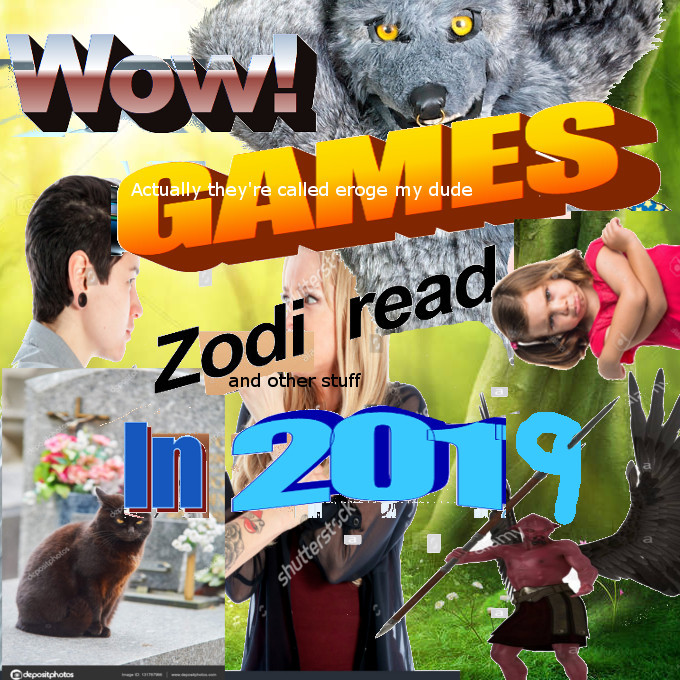
2019 – The Year of Fur?
At the end of 2018 I decided to dub 2019 the Year of Fur, a naming tradition which has been going on in my discord circles for a handful of years now. The intent with the naming was for 2019 to be the year of body hair and furries in eroge mostly based on the announcements of Realive from Purple Software (a game I ended up not playing since I’m allergic to gamer flirting) and Alpha Nighthawk from Liar-soft (a game I will definitely write more about in this post). In the end though the name ended up quite ironic as 2019 ended up being the year when I lost a dear furry friend of almost 10 years: My cat Zolo. He died peacefully in June during a check up at the veterinarian, too weak to wake up from anesthesia intended to just put him to sleep. Crying is not something I consider myself particularly skilled at so I was surprised by how hard the news hit after the phone call with my mother.
***
That same June my favourite eroge of 2019 ended up being released by a brand I’ve long been skeptical of. Dead Days a game published by Clock Up sharing its setting with the late 2017 release Yourou and just like Yourou written by Kurashiki Tatsuya. My first ever exposure to Kurashiki was through the game Silverio Vendetta. I didn’t think much of the game and he was one of many writers so I didn’t get much of an impression. The aforementioned game Yourou however set me up with a complicated relationship with the writer. Yourou was a roller-coaster of quality that ended up being a both frustrating and fun experience. When Dead Days was announced I was cautiously optimistic at best and skeptical at worst. Based on my experience with Yourou I was ready for disappointing mindless side character abuse and dedication to the central concept so strong that everything else would be left on the wayside. While the second part was most certainly true as it seems to be a trend in Kurashiki’s works, including Maggot Baits which I finished just the night before writing this, Dead Days ended up a much more sensitive experience than I could have ever imagined. The game wasn’t just hopeful, it felt like it genuinely loved its cast through all the grittiness and moral greys. Something I would have never expected from a game published by a company that I had filed under torture porn machine. In the most positive of ways it felt like the edges had been softened.
And when I read the writer comment by Kurashiki it made all too much sense.

Sometimes the universe just clicks in the strangest ways. Just like me Kurahsiki lost his (cat) companion of 10 years during writing the game. Dead Days is the first time I’ve cried at a staff comment.
Kurashiki writes that while the event didn’t affect how the story played out, since it had already been decided by that point, it most definitely affected his writing. Perhaps the game resonated with me especially because of this but don’t worry you don’t need to have a cat die on you to enjoy Dead Days since that’s not what the game is about at all! Dead Days is a game about youth, childhood friends, and as always with Kurashiki’s Clock Up games: Love. The protagonist is a dumb shitty kid which might be off putting for some but awakens some strong parental pity if you have the mind of an old person. Don’t think I’ve ever wanted to be an eroge protagonist’s dad more than when I read Dead Days. He’s a good kid I promise!
***
Another more directly cat related game that came out in 2019 was Nekogami-sama to, Nanatsuboshi ,or nekotsubo for short, published by Sweet & Tea and written by Maruyama Tsuyoshi. I’m not the most active in really any eroge community but I don’t think Maruyama Tsuyoshi is a name you see mentioned very often and while I can understand why I think he’s definitely worth writing about. The guy does quite literally everything except voice acting and art. He’s got credits for music, lyrics, sound effects, scripting, planning, directing, writing, visual effects, debugging, and audio editing. After enjoying and being fascinated by some aspects of Haze Man I ended up giving almost his entire catalogue of games a try and it’s quite the trip. Perhaps thanks to him being willing to do so much work it seems like he has almost complete freedom with his projects. Maruyama’s gag sense is perhaps best described as a relentless assault of idiocy. Nuclear Boke. Going back to nekotsubo for an example there’s a side character, without a sprite, who devolves into a pig with very little comment, and the voice work is upsetting to say the least. His characters will also frequently talk about periods. Sometimes the protagonist, sometimes the heroines, sometimes all of them. All of his games feel like they have content which just shouldn’t be there, not because it’s superfluous or too extreme to be in eroge but because it just breaks the rules of the genres. Going back to Haze Man it’s ostensibly a moege published by a gore brand and it contains casual sexual relationships and some genuine polyamory not from the protagonist but from the heroines. Having a heroine tell the protagonist she’s only having sex with him out of convenience is not something you expect to find in a moege and there’s nothing in the game that makes sense for it to be published by a gore brand.
As for his work outside of writing both Haze Man nad Nekotsubo have a really interesting system for the BGM where individual instrumental tracks are faded in and out for various effects. The melodic track of an every day life BGM might be faded out when the characters step outside the apartment for a bit to talk one on one for example. The system is simple but surprisingly effective and allows the same track to be used a lot more without feeling tiresome or samey. Go and buy his games I want to be stunned more at what he manages to get away with!
***
Speaking of creators who do more than just writing (Fucking NAILED this segue) Alpha Nighthawk was a really nice little game that came out in 2019. If you like stealth otome and don’t mind some soft furry content it’s an easy recommend. It’s one of those games where you can clearly tell it’s a passion project and it’s incredibly charming.
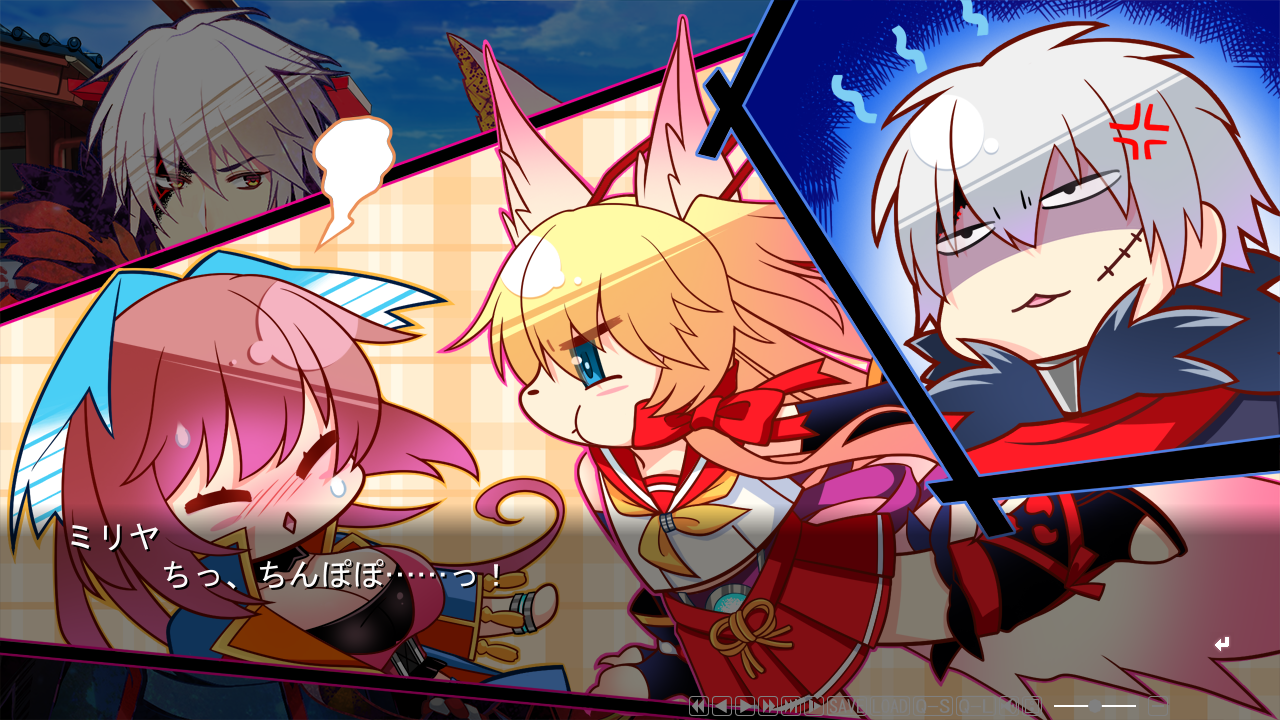
It’s Nanahoshi Dentou’s first game but only has the positive parts of a first project. The game has a lot of lore to its fairytale inspired sci-fi world but the story itself is small scale so it doesn’t bite off more than it can chew. And it’s getting a sequel in 2020! It’s always nice to see fresh blood and I’m glad liar-soft keep giving creators the opportunity to make their ideas a reality even if they wouldn’t sell as conventional eroge (although I think Alpha Nighthawk has a ton of wide appeal). It’s of course impossible to judge from just one game but I think Nanahoshi has a ton of potential and I’m looking forward to seeing more projects by them.
***
SPEAKING OF FULL OF POTENTIAL AND LOOKING FORWARD TO SEEING MORE PROJECTS (I’m an actual segue God). So I spent half a year studying abroad in Japan in 2019 and during that exchange I had the opportunity to visit the doujin music event M3. That’s right I’m gonna talk about music just for a bit here, see I didn’t call this post a eroge retrospective so I’m allowed to do this. M3 is a doujin music market and I had a list of favourite artists ranging from denpa song producers to eroge opening singers I wanted to check out and ended up with around 20 CDs in total, a mix of albums, EPs, and singles. And as you might have guessed from my really smooth segue the best out of this bunch and my favourite album of 2019 ended up being the EP Hotchpotch Hitoribocchi released by the new circle Croak not Rue (read kurakunaru, how clever). The EP consists of 5 tracks with the base concept of cute music paired with (emotionally) savage vocals and the theme of child abuse. It’s a high concept album that manages to deliver on the themes and emotions not just through clever lyrics but also really interesting instrumentals, as the singer breaks down emotionally so does the instrumentals. The tracks play with childish sounds and oppressive noise and really manage to sell the idea. I’m a big fan of high concept stuff like this where the singers take on characters and the songs build a narrative and this is definitely a pretty new take on the idea for me. It’s also pretty rare in my experience for every track on an album, even if it’s an EP, to be all bangers. And Hotchpotch Hitoribocchi steps it up by having all the tracks fit the musical and conceptual theme while also not sounding samey or being redundant. I rate it a slaps/10.
***
Another music event I had the chance to go to was Silky’s Plus 2019 Winter festa. Silky’s Plus is my favourite eroge brand and it was a great time hearing all the voice actors and songs live and this is my amazing segue to say Kimagure Temptation was a good game. As expected of my favourite writer, Kazuki Fumi, it was a solid fun experience that delivered what it needed to deliver and was just all around good. Even though it’s a side story in the nanarin and akeiro setting I still recommend reading those two games before it to understand all the sick lore and references. I wonder if we’ll get more side stories in the universe like this? While I would like a new main game in the series I’ll gladly read anything in the setting really. There’s just something about it that wakes up parts of my imagination I thought only kids had. So yeah it’s good and cool check it out if you’ve read the two main games or maybe even if you haven’t, or don’t check it out whatever it’s up to you.
***
And finally (probably) Manakashi no Yuri wa Akaku Somaru a yuri guro game published by Bug System (same brand as Haze Man somehow) and written by eroge titan Izumi Ban’ya came out in 2019. I read Extravaganza by Ban’ya this summer and was surprised by how quickly I became a fan. I’ve taken to calling him my eroge dad because of the very good parent content he delivers in both Extravaganza and his earlier game with Bug System: Shiniyuku Kimi, Yakata ni Mebuku Zouo. Other than the parent content I think the most notable part of his works are the protagonists. It’s almost impossible not to get invested in their struggles and get moved by them growing stronger and overcoming them. I’m not sure if it’s funny or sad that some of the best sources for strong female characters in eroge are gore/torture games. In a way I suppose it makes sense but those musings would make for a post all on its own that I’m definitely not educated enough to write (yet). Back to Manakashi since that’s the game that actually came out in 2019. It didn’t have any parent content and the protagonist didn’t have as appealing of an arc as in the other two games I’ve read from Ban’ya but it was a fun albeit a bit shallow game. The game read to me like a critique of the yuri genre and I don’t think it’d be unfair to call it a yuri game for people who don’t like yuri. There’s one scene in particular I won’t go into details about because I’d like people to experience it on their own that absolutely shits on purity ideals in otaku subculture which I always appreciate. I think a lot of the time yuri kind of dodges those criticisms by hiding behind the veneer of “lesbian romance” even if it’s in essence the same kind of male fantasy appeal as pure innocent virgins in moege.
***
Alright some final stray thoughts about 2019 stuff I suppose. First of if you own a switch go buy Nekotomo right now it’s the best game on the console for sure. I bought it because of a youtube series with the intention of teaching cats to say bad words and gyaru slang and ended up almost crying at the ending. It’s a game for kids (well until I got my hands on the word teaching feature it I guess) and it has a weird stamina system that shouldn’t exist outside of mobile games but man is it great and the OP absolutely slaps. Oh huh I guess nekotomo fits into the dumb theme I picked for the year, shame it wasn’t actually released in 2019.
Best manga of 2019 is the twitter manga Onna ga Nigate na Yankee to Shoujo no Hanashi which you can find here. I don’t really have much to say about it, it’s just very good shoujo romance and everyone should read it.
I’ll leave y’all with the same words as Kurashiki’s staff comment for Dead Days.
世界中の猫が幸せでありますように。
May all cats in the world be happy.
2021 – An Eroge Retrospective
So as 2021 finally draws to a close, well at least here in Sweden now that we’ve abolished daylight savings time the rest of the world still has a couple of months to go, it’s time to look back on and highlight some of my favourite nudie games of the year. The post is sorted in an arbitrary order with one game at a time. Even though I’m avoiding spoilers if you don’t want to know anything about a particular game you can easily just skip that part. Well then…
Let’s do this!

Highlighting Sticking to Formula

Seishun no Warau ha Uma no Warau ~My Girlfriend is a Horse~ is the latest game from Algot’s subbrand Henny Crumb released in June and I had the pleasure of reading it during the simulcast VR release. Now anyone who’s in the r/vn’s discord server’s memorial IRC will remember me calling 2021 the year of human heroines so you might be surprised of me highlighting a game so heavily focused on wrong half centaurs but despite following so strictly to the formula UmaWara manages to hit all the high notes of the genre while avoiding all of the common pitfalls. To UmaWara the wrong half centaurs aren’t just a moe crutch to rely on, they’re something to be explored and adored. It asks even small questions like “how would a wrong half centaur wear a bikini?” which help make the setting really feel alive.
Now it would be dishonest of me to talk about UmaWara without bringing up the controversy surrounding the game. Some older fans were upset about how the game retcon’d earlier entries in the highly acclaimed cinematic universe: The Seishunverse. These people clearly never bothered to actually read the game on their own though since it fully explains why the characters from the older games are all half horses now.
The game is an easy recommend for anyone who likes a relaxing experience and who doesn’t mind sticking to the tropes.
Highlighting Presentation

Kaa-chan ha Moto V-Tuber Similarly to UmaWara, KaaTuber is a nostalgic throwback but rather than being about an idealised view of youth it’s more contemplative about growing old and moving on and is quite firmly grounded in the present. KaaTuber was a surprise full length release from the nukige brand MikanHard. The first episode boosts 10 hours of content and episode 2 is set to come out first quarter of 2022!
While the game contained many references that quite honestly went over my head, having no idea what a V-tuber is, the core plot and characters carry it easily even for those not quite as invested in the nerd hobbies of yesteryear.
Highlighting a mother focused porn game might seem a bit controversial but don’t worry the game follows through on the start up warning that all heroines are under the age of 20 and explains in universe how she gave virgin birth to the protagonist thanks to science magic. I think the artstyle and personality blurs the lines enough that even those who are made uncomfortable by this side of the medium can fully enjoy this game.
Easy recommend to anyone who can handle more sex scenes than usual (the game has a total of 5 but don’t worry there are only 2 different base CGs).
Highlighting doujinge
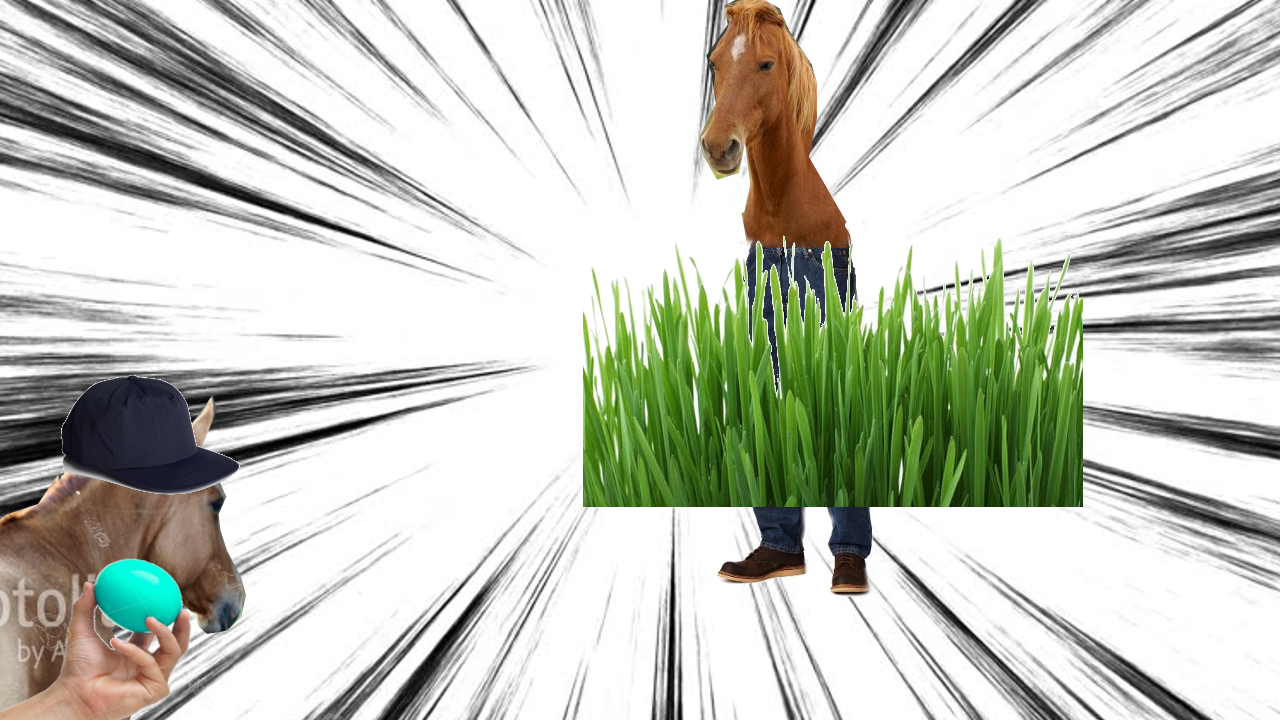
Pokémon Fire Red.
Easy recommend.
Final Comment
Sorry for how long this post ended up being. When I started writing this post I didn’t intend for it to cover every single 2021 release so whoops. Looking forward to a new year of releases, still holding up hope for that new iro game. Oh and if you made it this far, Corn, I’m sorry for hogging the cybernet to write this post when I should have been male-breastfeeding the baby. Gotta give all my fans the content they crave!
xoxo Future-Zodi
A Retrospective – Part 2 Pronant Symphony
Introduction – Excuses
So it’s been two months since I did the first part of the retrospective and 2018 isn’t exactly fresh in our memories anymore. Perhaps this would be a good time to highlight some games released in 2018 before they get lost in an ocean of high profile 2019 releases to never see the light of the top of someone’s backlog.
Instead what I’m gonna do is talk about another 2017 doujin RPG I ended up playing last summer even though I struggled so hard to make my last post readable! So put on the absolutely beautiful main theme of the game (which is royalty free by the way credits to the creator) and stick with me as I try to form cohesive sentences about Pronant Symphony.
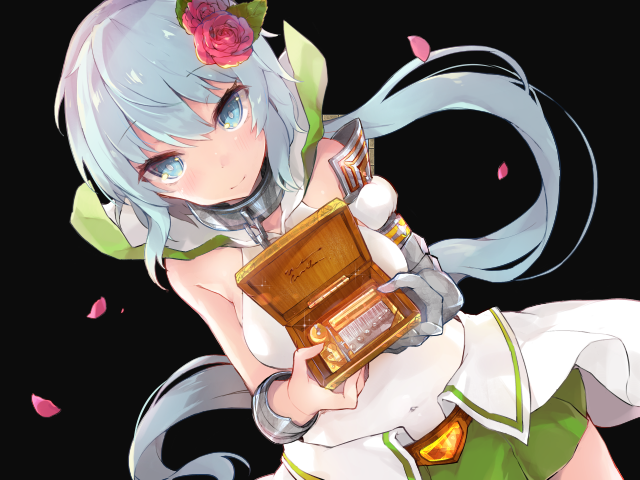
Pronant Symphony: The eroge that got me to have fun doing a non-ero run
So as always let’s kick this off with some general info stuff. Pronant Symphony was released in 2017 by the circle E.B. and it’s a mind control morality system ero RPG. The circle have released several games before it but I have yet to play any of them so I won’t comment on them beyond mentioning that Pronant Symphony is very much a standalone game even though it has some clear predecessors. The game still got actively updated way into 2018 with not only fixes but also content so I’m going to use that as my excuse for including it in my 2018 retrospective. The developers twitter can be found right here.
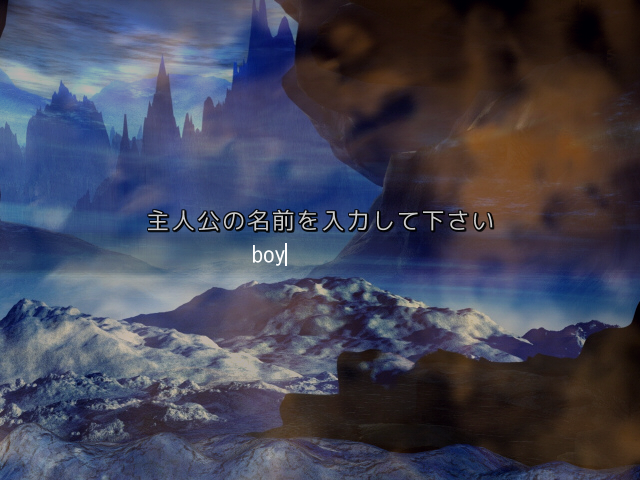
So why write about a mind control game of all things, Zodi?
I’m glad you asked, me, since way more so than RPGs this is a genre that’s completely out of my wheelhouse. Pronant Symphony is a game with a quite in-depth system of mind control where not only is the protagonist controlling his entire party but he’s also capable of commanding any NPC to give him items, underwear, information, or a variety of other commands ranging from silly to quite rude. For the heroines the commands are even more varied and serve as the main way the sexual content is incorporated. For the first run I did however, I only got the one unavoidable sex scene.
Avoiding sex scenes isn’t an unheard of mechanic in ero RPGs, it’s usually featured in games with a female protagonist and marketed as a “virgin clear” (not my word I want to make very clear). In these games it seems an almost pointless feature since there’s no incentive at all, unless you’re a truly strange pervert, to avoid the sexual content when all the games mechanics hinge on it.
Pronant Symphony does it quite a bit different though. First of all I guess it can’t be called a “virgin clear” since the protagonist has a past as a sex worker. More importantly though Pronant Symphony makes the “pure sweet boy run” (this is my word) a valid and appealing option through the story and morality system. The moral choices are usually quite hilariously black or white but it’s fitting considering it’s basically a game about a mind controlling demon so randomly killing people instead of helping them out isn’t exactly out of character. Unlike other games with morality systems the protagonist doesn’t start out a neutral blank slate you pull towards either cartoon villain or turbo Jesus. The protagonist is of questionable morality from the start and is suffering through an inner struggle that grows stronger the less of a bad guy you act as. By playing as the “pure sweet boy” the game becomes a redemption story. Rather than trying to protect the protagonist’s virginity or turn him into a saint it’s just a struggle to be a better person and to have your sins forgiven.
Another big reason why the good route works so well in Pronant Symphony despite avoiding a lot of the in-depth mind control system is thanks to the rest of the gameplay being so fun which leads us to the next bit!
Oh and all this said though the art in the game is very nice and the mind control system is pretty neat so I don’t mean to imply the sexual content is best skipped or anything it’s just really notable that it’s even a valid option.
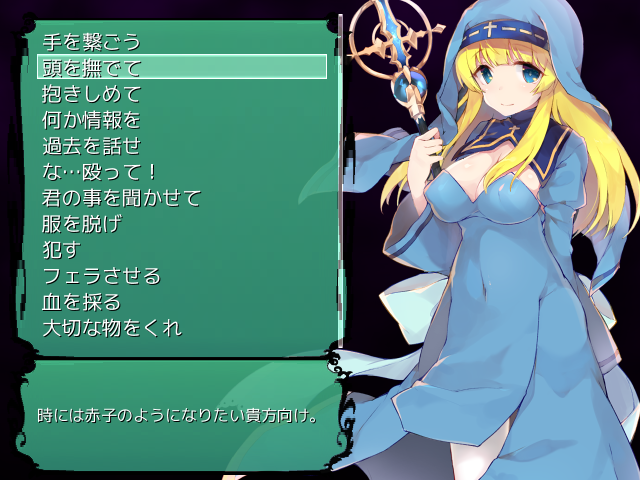
There’s a lot to the gameplay in this but I’ll do my best to not get sidetracked!
Pronant Symphony is set up in floors and you journey deeper and deeper exploring new floors. There’s a variety of stuff to do on each floor usually besides the storyline there are also side quests and goals you can fulfill like completing bonus bosses, filling out entire maps, crafting specific items, and so on. These side goals can unlock you anything from gold to new costumes for your characters, including the protagonist!! The game also has a main base of operation you return to when you lose a fight or run out of juice to keep going down. When I say juice I don’t only mean health and mana the game also has a pretty different combat system from your usual RPG but one that will still feel familiar.

Each character has four move slots (they also have two individual special moves as well as a standard attack) and every move has a certain amount of uses which can be refreshed at certain spots in the dungeon you’re venturing down or by returning back to base. Amount of uses can also be increased by using the move or leveling it up using a currency you gain through adventuring. New moves can be unlocked by for example using a certain weapon enough. On top of the move system there’s also a field state system where for example certain attack elements can be empowered or all characters’ defence can go down. Every character has one individual special move to affect the field state but there are also other ways to change it in your favour. The limited amount of moves makes it so you can’t just keep going down the dungeon forever without getting very creative. There’s no real punishment to heading back to base other than maybe missing out on some of the exploration currency and bonus items gained through getting a lot of it so the limited moves never end up feeling frustrating.
The gameplay is very appealing if you’re the kind of person who gets off on 100% filling out maps in dungeon RPGs since all the various side objectives you can do can be easily tracked through a menu that shows progress and what you’re missing from certain floors. It’s all optional so people who aren’t into having shopping lists can of course just ignore it but it tickled me in a very nice way to just run back and checking things off the list.
Let’s talk some more about the protagonist
Another very notable thing about Pronant Symphony is the protagonist. I already touched on it a bit earlier but despite being a game with a lot of choices and a morality system it never really sacrifices the protagonist’s character. The protagonist is fleshed out and has an inner struggle and a goal, he isn’t just a tool to get the story to move forward he is the centerpiece. Something really interesting Pronant Symphony does that’s a bit hard to explain as a design choice is having the MC only get a proper sprite, aka not just a little pixel guy, in new game+. It’s easy to wonder why he wouldn’t have one from the very start since his appearance isn’t really a story spoiler but when you play the game and get to the part where you finally get to see his face it just feels right. The spot for the reveal is just perfect as a character moment and having it on display before that wouldn’t have had the same impact at all. It’s very neat to see a ero RPG make a design choice like that just to have a character moment for the protagonist.
I can’t talk about the protagonist without also talking about his relationship to his party, the heroines. As mentioned before he’s mind controlling them to fight for him which is a big part of his inner struggle. The good times he’s spending with these sisters are all fake, all of his own creation, he feels like no one would ever truly and willingly love him. There’s the constant question of how much is earnest and how much is just due to the control. The main heroine Irito (I hope I’m romanising that right) is a character that plays into this insecurity especially well.
Final thoughts and comments
So yeah Pronant Symphony was a really fun game to play and it managed to present a genre I’m generally not a big fan of, mind control, in a way I could really get into. Having the protagonist be so insecure and paranoid makes a ton of sense and now I’m wondering if it’s a theme more games of the genre have explored and I’ve just missed it completely. It’s an extremely easy game to recommend so another linky. I’d love to see more games from E.B. in the future even if they stated themselves on twitter that Pronant Symphony might be a hard one to top. Another bit I didn’t really mention is that I’m impressed by how despite having so many systems in play the game still feels pretty tight and very coherent as a whole. It feels easy to approach but also like it has a ton to it.
***
Sorry for being so bad at updating my blog and thanks for reading! My love for you, reader, is 100% real and not the effect of any kind of mind control power!
Fight on, Tiger!
xoxo Zodi
2018 a Retrospective – Part 1 SEQUELs
Introduction – Excuses
Since I’m a failure of a reader I still have several 2018 games I want to get through and am therefore incapable of putting together a big juicy effort post like I did at the end of 2017. I probably won’t be finishing up my reading in any sensible time so instead of doing a mega post I’m doing some more focused parts about my 2018 experience.
With the end of 2018 I started looking at what the future year will hold in terms of releases. Despite many of my favourite brands having titles in the works I realised that the title I look forward to the most in 2019 isn’t a commercial work. It isn’t even a Visual Novel! Now don’t worry this is still a blog about eroge so I’m not going to write a post about my excitement for the live action Sonic film (probably, at least not now) but I will write a bit about a genre I probably have no qualifications to talk about: RPGs. What better series is there to kick off this series (if I can be bothered don’t hate me if I never write a part 2) with than one with sequel right there in the title: The SEQUEL series (DLsite, NSFW)!
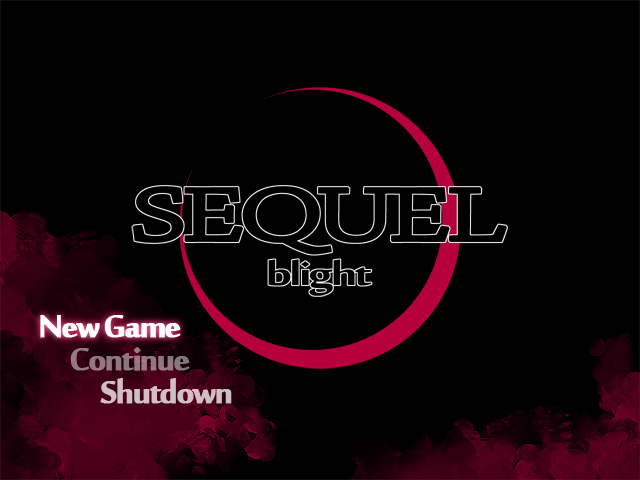
SEQUEL blight – Yes the first game is also called SEQUEL
SEQUEL blight (DLsite, NSFW) is a doujin 18+ RPG by LeafGeometry (Twitter) released in March 2017, not exactly a 2018 release but I didn’t end up playing it until this summer so here we are. Despite me almost only ever talking about Visual Novels I have a long, deep, dark history with 18+ games of all matter of genres but generally speaking very few stick with me. As you might have guessed the SEQUEL games are not included in this general speaking as they left quite an impression.
Rambling content summary – attempt at overview
SEQUEL blight starts off how any good RPG should in my opinion: by letting me name my protagonist “boy”.
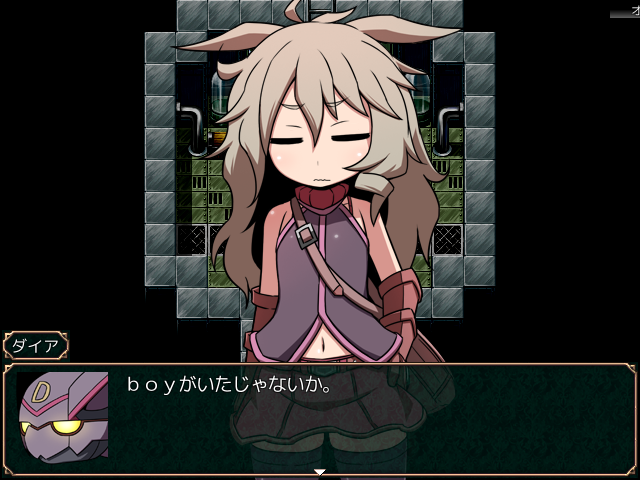
While boy is the protagonist, calling him the hero of the game feels a bit misleading. His function is more similar to the MacGuffin at the start of the story leading our cast of heroines into the grander plot. You see, in the world of the SEQUEL games male humans are exceedingly rare due to how badly they coexist with mana, the few who are born end up dying young. However men are also a natural source of mana! I’m sure if you, my friend the reader, have interacted with eroge in any way before you probably get the wink wink nudge nudge here but yes boy is desired for his precious boy semen. Mana is a vital resource to the world of the SEQUEL games and is gameplay-wise used mostly for crafting which ends up becoming boys hobby and position in the party since he can’t fight. OKAY LOOK the mana boy crafts with comes from killing enemies he’s not toying around with his own supply OK? Death is another natural source of mana! God that mental image is gonna stick around for the rest of me writing this now though.
The party in SEQUEL blight consists of four fighters. The Heroines (God I hope my romanisation here is okay): Rabi, Uura, Nix and Tilema. They start out as a (these aren’t the in-game class names but to make it easy) fighter, a healer, a mage, and a tank but the class system in blight allows for full class switching and mixing and you unlock more classes as you do side quests so your setup may look very different by the end. Each class has a skill tree, here’s one right here: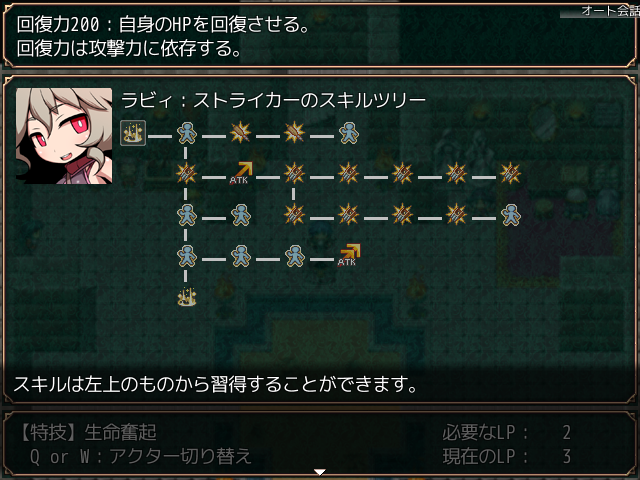
The skill trees persist when you switch classes which allows for the more complex mixing. Stats and what a character can equip depends on their current class but you can affect those through the skill trees as well. My team ended up mostly sticking to the original setup since I’m way too dumb for a complex system like this but I’m sure there are cool ways to make broken builds!
Something that really stuck out to me about SEQUEL blight, and something I came to associate the series with, was the stellar map design. The maps tie back into themselves, and each other, through shortcuts in a way that reminded me of the original Dark Souls. Actually there are a couple of gameplay aspects reminiscent of that game, maybe most notable are the transportation swords placed at important intersections of the maps that let you rest and travel between them (without a lordsvessel!), and there’s also the fact that failing in combat has no punishment other than bringing you back to the hub. It’s refreshing seeing a game lift the actual nice parts of the souls series instead of the needlessly obtuse and frustrating bits!
Anyway, the world feels coherent and fun to explore, and MAN unlocking shortcuts feels so good. Now blight did end up resorting to some more annoying map mechanics by the end of the main story line, looking at you teleport dungeon, but it never ended up being frustrating. The very fluid map design ties into the very nice escalation and progression of the story with each chapter exploring a new area ending with a boss fight that quite nicely ties the part together. The games manage to make you feel like you’re exploring while also having the pacing related and structural benefits of a linear experience.
One last bit on the more tangible gameplay part I should bring up are the nushi fights since they tie into this whole exploration feeling. Nushis are difficult optional bosses that give you no experience or gold but drop powerful items or parts that can be used to craft powerful items. While blight is a solid challenge all the way through (at least on my skill level I guess) the nushi fights add a nice extra challenge and are usually very rewarding to figure out. That said though the nushi fight mechanics has a couple of issues in blight making them way too grindy to get anything out of, these issues are fixed in the later games but I feel like it’s important to comment on since blight’s optional content does have a tendency to get too grindy which is a shame considering how nicely the main story flows.
Okay onto less tangible things lets start by talking about those characters. The protagonist, being of the silent variety, doesn’t have much of a personality in blight, by design but still. He mostly serves as a wall for other characters to bounce off of or as a tool to drive the plot onward. Or as well uh… a semen cow I guess, I guess he also serves as that yeah. Some personality shines through by the way characters interact with him but this is more so the case in awake. For the most part the protagonist, my boy, is an object to be desired. Just like in real life!
The four heroines however who get to do all the talking and most of the doing are a quite colourful cast representing different parts of the setting, or at least the nation of it that blight takes place in. Since this post isn’t intended as a summary I’ll just briefly introduce them.
Rabi is the first heroine you meet, pictured in the images above. She’s an energetic adventurer with a robot companion, I’ll talk about later, and she’s not associated with any of the larger factions.
Uura (I don’t know how to romanise her name at all) is Rabi’s friend and works for the merchant faction which still deals in money instead of mana. She’s reserved and puts on airs but is low ranked and knows nothing about the bigger dealings of her faction.
Nix is a 魔物 which oh boy is a hard word to translate but I guess “monster” is what most RPGs go with. These “monsters” feed on mana and are generally a big threat to humans but Nix is a very aloof and relaxed “monster”. She’s a succubus kind of deal so she takes instant liking to the protagonist.
Tilema is my favourite character in blight. She’s pretty high ranking in the military faction and a kind older sister type character. She’s childhood friends with Rabi and looks out for her.
The cast has two more notable non-spoiler members other than playable characters. Dia who’s Rabi’s robot friend, pictured in the textbox of the boy screenshot. Dia is a recurring character through the series and quite important in awake so I’ll talk a bit more about him in that part of this post.
The other character is called Nise Rabi or Fake Rabi. Now this name might make them sound like some kind of a mimic enemy but they are also a heroine, at least in the eroge sense even if they’re not playable and don’t take active part of the adventure.
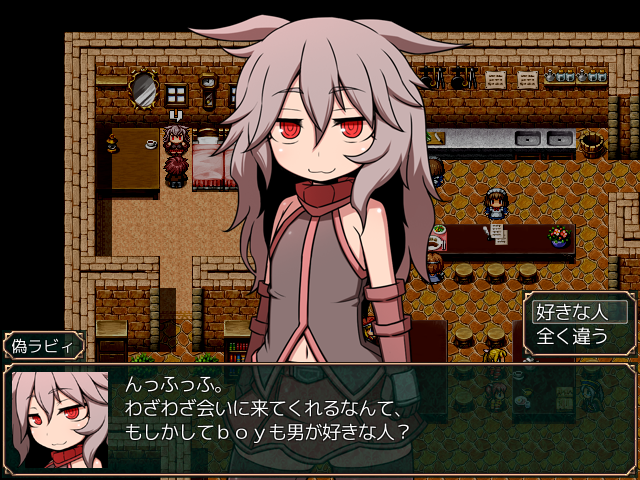
Nise Rabi is a boy who says he’s crossdressing as Rabi to avoid being hunted like the protagonist. They’re very excited to meet the protagonist since they’ve had no one to talk boy stuff with, which is a very relate-able plight. As mentioned they’re a heroine in the eroge sense aka they’re romance-able but in the SEQUEL games it’s probably more fair to say the protagonist is the one being romanced.
ALRIGHT this wouldn’t be an eroge blog if I didn’t talk about that ero part and I’m a bit of a stickler for how sex is worked into more gameplay focused games so here we go!
I mentioned how the protagonist’s “””MANA””” is a desired resource which gives the backdrop for the sex scenes that play out during the main story. The SEQUEL games aren’t of the battle fuck genre which for those unaware is a genre of games where the combat itself is sex. Nor is it a game over assault game, although there is some content of that nature in the form of optional monster fights where the protagonist is targeted. The sexual content that doesn’t play out during the main story is all optional and usually more akin to side quests. There’s a likability stat for each heroine, including Nise Rabi and one that’s probably a spoiler, that can be increased through gifts but blight doesn’t do too too much with this mechanic. As for the content of the sex scenes mileage may vary but they cover a pretty wide scope. Even though the main cast is mostly human the game contains some monster girl content as well which is usually appreciated on DLsite I’ve noticed.
So why did this game stick with me and why should you go buy it right now while it’s hopefully on sale (30% off until February 4th!! DLsite, NSFW)
SEQUEL blight is a game that might be missing some quality of life, like how you have to pick the heal option to heal from swords instead of just doing so automatically or how you have to run around the village in the hub instead of having everything centralised, but the core experience is extremely polished and competent. It manages to deliver on everything a strong RPG and an eroge should. Way too many games end up focusing on things that are just tangential bonuses while forgetting the core content in my experience which leads to shallow and broken games that just function as an H scene supplying machine. SEQUEL blight however nails it all down to the balance, the difficult optional bosses (too difficult for me ;_;) weren’t required to get the full story and the story bosses felt challenging from the first one to the last one.
On top of the competent gameplay the game delivers its setting perfectly. There are no giant infodumps dragging the game to a halt, which is something even commercial games mess up constantly. Aspects of the setting get brought up by the characters naturally as they become relevant and you uncover more and more as you go on. The areas themselves also manage to tell stories even though they use the basic RPG maker tile set. The SEQUEL games have a world to them, not just a facade along the sides of the ride.
The same conversation events that give you a taste of the world also give you a really good feel for the characters. Having them interact and playoff each other even about small things they stumble upon in the world is such a wonderful way to expand on the party’s relationship without forcing it through cheap tricks like flashbacks. The SEQUEL games know they don’t need to tell you if they show you which is really the approach any game should have since it makes that barrier between story and game feel less harsh.
So in short it’s a charming competent game and I love it ok moving on since this is getting longer than expected already.

SEQUEL awake – Improving on an already wonderful experience
SEQUEL awake (DLsite, NSFW) is the (oh boy here it comes) SEQUEL to SEQUEL blight released in June 2018 and played shortly after that by me. If you were mad at me for talking about a 2017 game in a 2018 retrospective I guess I’m absolved from that sin now so suck it. Just like blight awake is an 18+ RPG by LeafGeometry (Blog this time to mix it up). The game has a lot of improvements on the formula of the original game but also a lot of completely new stuff to it making it a very strong sequel so here I go talking about it.
Hopefully more coherent content summary – overview of changes and what’s new
SEQUEL awake starts just like blight with our protagonist boy, or whatever else you’d want to incorrectly name him. It’s the same boy from blight but he’s suffered amnesia and found himself in the kingdom of monsters!
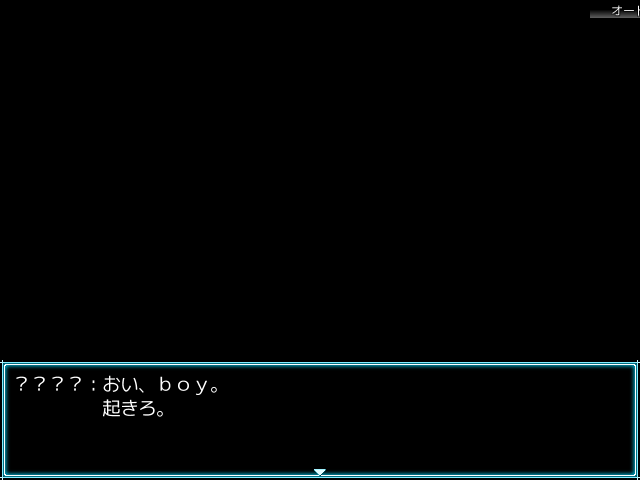
The amnesia serves as a nice way to make the game less reliant on the original but make no mistake this is a direct sequel and takes place after the events of blight. The amnesia also makes it a whole hell of a lot easier to talk about the game without spoilers so bonus points for that.
The only connection boy has left to his past is Dia his robot friend (who also happens to not remember much). The two get picked up by the friends (oh boy here comes my attempts at romanisation again) Kuruha and Sheena who let them stay in their big house out in the woods. This house is the hub of awake and the first big improvement over blight. You can instantly move from boy’s room to the crafting room in the basement, the shopkeeper is standing right outside the entrance (and has quite a lot of personality for a mob), the party members all have their own rooms in the house, and almost all the games sexual content is kept inside the house. I should also mention that awake’s maps look nicer than blight’s, very nice tile sets.
Second big change is how the party and classes work in awake. Kuruha becomes your first party member and she’s a permanent (well mostly) leader of your party, which yes means that the other three spots are changeable. SEQUEL awake has a total of 10 party members and instead of a class system has a skill tree for each character so you mix and match your party instead of classes. The first couple of acts of the game each has the protagonist start with an empty party and recruiting new members giving you a chance to try out every single party member before you unlock all of them and decide what to do. Once you do have the full party you can switch out your team whenever you want. Everyone levels up at the same time so you don’t need to worry about anyone being left behind. My team ended up looking like this:
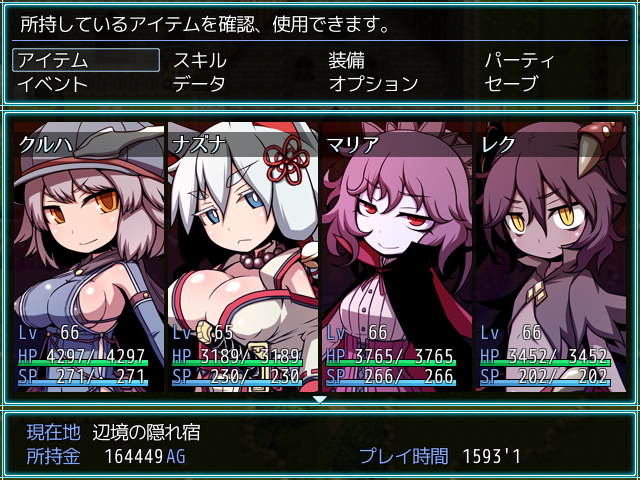
Every character has a unique and fun playstyle with a ton of flavour. The team I went with had Kuruha who’s class is ALL MIGHTY (basically she can play any role) serve as the healer.
Nazuna being a samurai fox was my physical attacker with a iaido skill that let her deal absurd damage the first turn of combat. Maria (my favourite character) being a vampire queen has a really dope status where her HP is doubled so she can fill it with various life drain attacks, she was mostly my magic attacker but has some other cool buff effects. Reku (I’m sorry this romanisation is almost definitely wrong) was my support character and she has this really cool resurrect ability that turns the raised party member into a puppet that can act twice for three turns but stuns them at the end of those turns. She also uses binding and act order manipulation so there’s flavour all around.
Since I’m talking about party members and changes another improvement is to the likability stat which can now be raised by interacting with the characters in the hub. You get a whole ton of scenes of the characters interacting with each other or one on one with the protagonist. To level up relationships you can also be required to do things beyond just increasing your likability with the heroine. Oh and I should mention the game added another stat on top of likability which is uh… well there’s a horny stat now. So yeah you can increase likability and thirst so that’s cool. As mentioned earlier almost all the sexual content is kept to the hub events, if I remember correctly there are only two sex scenes during the main plot-line. I really enjoyed this set up even if it did give the game these two distinct parts because it makes sense for relationships and dirty dancing to happen in the off time. The game still has the conversation events just like the original but now you have a really big cast of characters who all get to interact and bounce of each other! Even though I stuck to my four member party for almost all of the game it still always felt like the whole party was there hanging out together.
One thing SEQUEL awake did a bit different that I wasn’t a big fan of at first was how you had to use the transport swords to get to the distinct areas of the kingdom the game takes place in making the world feel a bit less coherent as a whole. Individual maps still have the wonderful shortcuts and interlacing but it felt a bit sad that the world was more split up. It does make thematic sense since the areas are wildly different but still! Speaking of the swords they now heal you if you touch them which is such a small but huge quality of life improvement. It’s something that keeps messing me up when I go back to blight after awake.
Nushi fights had some huge improvement in awake. You now only need half the amount of drops to craft their items which lowers the grind to a way more reasonable level. Some nushi also have a little sub event attached to unlocking them which makes them a lot more fun to get and battle overall. The fights were always good but the changes gave some much needed incentive to do them. There’s also less grind for subevents in general and crafting is a lot more streamlined. Hell in blight you needed the alchemist class’ first skill to craft some really integral items which I didn’t even find out about until the post game (I’m so bad at games actually).
One change that I’m not sure if it’s because of the new class system, balancing changes, or if I just got better, is that awake did feel a bit easier than blight in general. That said though the fights were still satisfying, I’d even argue they felt more satisfying than blight’s despite me thinking they were easier since it was easier to adapt to them and fix your setup. SEQUEL awake added a new skill tree for all characters for passive stat buffs and immunities which made status effect spam bosses much less annoying especially in combination with how the resist items now do 100% resist from the start and don’t require alchemist crafting. The characters’ distinct playstyles also make fights feel rewarding and cool even when they’re on the easier side.
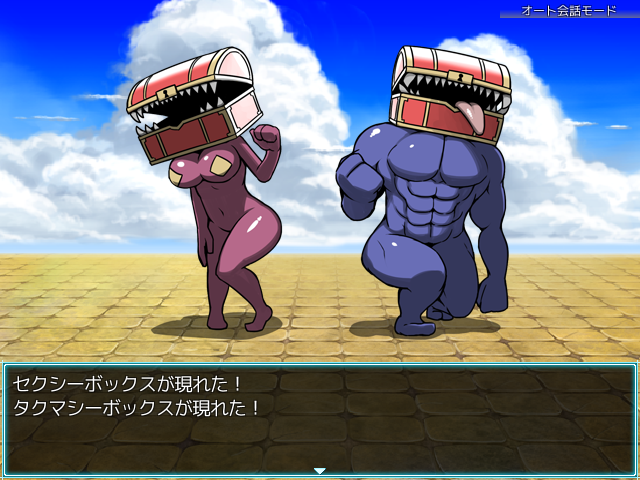
It’s hard to talk about awake’s plot without spoilers and the cast is so big that I could talk about it for way too long but to give an idea the game starts out with the recruiting chapters where you get introduced to the characters and areas of the game and then the main goal is set up when you have your super team. There are a lot of returning characters from blight that you meet along the way and I would never recommend playing the games out of order BUT that said awake is a game that functions completely on its own. If you for any reason badly want to do it and can’t do blight first then go for it, or if you end up taking a long break between the two it doesn’t matter at all!
Thoughts on awake as a standalone game and as a SEQUEL
I’m not sure if it showed in my attempt at an overview but I love awake a lot even more so than the original game and it really solidifies the SEQUEL series as not just some good games but as a stellar series. SEQUEL awake manages to retain the charm and core of the original while improving and changing up the formula enough to be its own game. The setting while in the same world as blight feels completely different since the kingdom is so different but it doesn’t feel completely detached. The game expands on the bigger picture of the world a lot. I was worried that the much larger cast would lead to a less tight experience but it manages to keep them all relevant and present. The story structure is a bit different from blight because of the recruitment phase but it works so well as a way to introduce every character not just in the story but also for the gameplay. The cast also lead to an improvement in the ero part of the eroge introducing an even wider scope of content. Being able to engage with it at your own leisure is also a big plus since having scenes in the middle of story or gameplay can get obtrusive.
Even as a standalone game SEQUEL awake might be my favourite non-novel eroge. It’s an extremely polished experience with a ton of charm and unlike blight I was able to actually 100% it so maybe I’m not so bad!
Now this of course leads to the question of WHAT’S NEXT?
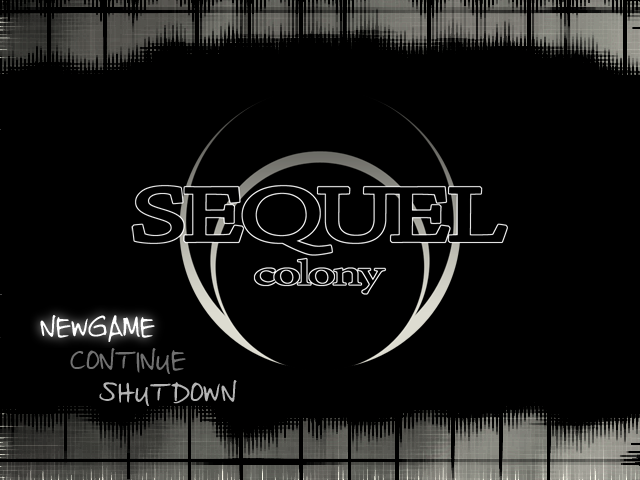
SEQUEL colony – My most anticipated game of 2019
SEQUEL colony (Dev’s ci-en since it doesn’t have a store page yet, NSFW) is an upcoming game in 2019 with no set release date yet. It’s the third entry in the SEQUEL series and got a trial on the 3rd of January which I of course played right away. The trial took me about 2 hours so there’s not enough to talk about for me to split this section into multiple headings so here we go!
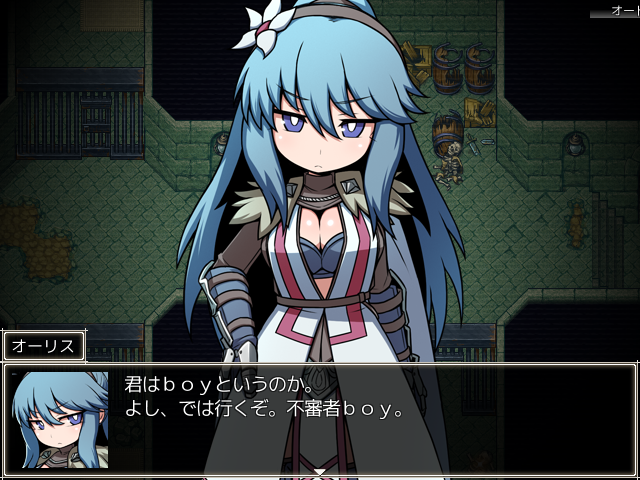
Some changes to the system first. SEQUEL colony is back to a locked four character party but this time around every character has two skill trees (as well as the stats and resistance one from awake) with distinct roles that you can mix and match. A big change other than that is to weapons as SEQUEL colony introduces a rune system where instead of switching out weapons you slot in different runes into them to give various buffs and even skills. This allows for a ton more customisation when it comes to weapons and also removes the issue of getting a weapon with a fun effect but bad stats so you can’t use it by making that fun effect something you can slot in instead! The game introduces a lot of quality of life changes like keyboard shortcuts (which I didn’t know how badly I needed) as well as items that can be used by shortcuts from the field that are restored at the transportation swords. Like healing items for example! They added estus!!! The hub is also a bit more streamlined, the crafting room is now the same room as the protagonist’s bedroom so you can get everything done in the same place!
The trial is a bit too short to get a good feel for the new cast but they seem fun and oh I should mention that this time around the protagonist has not suffered amnesia! The setup for the game is really cool and the trial has a dope story hook tying into it that I won’t talk about since it’s all spoilers so go play the trial! The setup is so different that once again LeafGeometry has managed to make a SEQUEL that feels both perfect as part of a series and as a standalone experience.
If colony is another step up, which is looking very possible, it would easily be my favourite doujin game in general which is why it’s the eroge I look forward to the most in 2019 so keep your eyes peeled on this one!
Afterword
Boy that sure ended up longer than I intended. This became a mega post about just one series WHOOPS! Well if you stayed with it for this long I guess you might still care for what I’m planning on writing next and it depends on how my reading shakes up. If I still haven’t finished the 2018 releases I want to finish in a month I might just write it on some older games I read last year. Either way please go buy and play the SEQUEL games they are wonderful! Support good doujin!
This has been your friend and lover: Zodi.
Go get them tiger! 😘🐯
The Seishunverse – Fictional Universes in Visual Novels
Introduction and Background
I recently finished the Alcot Honey Comb published visual novel Kanojo wa Tenshi de Imouto de together with my friend Corn (who can be found here if you’re somehow reading this without already knowing him). Judging by the official page the game looks like an innocuous mid-price cute girl focused game which is pretty in line with the brand’s history. The game is written by Seo Jun who’s done a whole four games for the brand before: Shunki Gentei Poco a Poco!, Aete Mushi Suru Kimi to no Mirai ~Relay Broadcast~, Satsukoi ~Yuukyuu Naru Koi no Uta~, and Soshite Hatsukoi ga Imouto ni Naru. Beyond the shared writer and brand the games don’t look like that have too much in common. Covering topics from the pressure of harsh musical schools to man-eating mermaids one would think that beyond shallow references it would be impossible to work out any kind of coherent canon out of these works.
Well, I’m going to try to anyway.
As Corn and I read the games together we started thinking of them not quite as a series but more as a fictional universe in style of the Marvel Cinematic Universe, hence we call it the Seishunverse. This is not my only encounter with an expanded moege universe, you’d be surprised by how many brands put in hints at some kind of canon in their games, but perhaps since it was all piloted by one writer with a surprising amount of freedom it’s by far the most coherent one I’ve seen.
This post is going to be avoiding specific spoilers but if you’d rather work out the relation completely on your own and just knowing that it’s there is enough to pique your interest than I’d advise to stop reading after this introduction (you’ll be missing out on my SWEET INFO-GRAPHICS though). The aim of this post is to highlight and make sense out of an interesting and complicated relationship between games.
Timelines and More Tangible Relations
The least abstract place to start discussing a fictional universe like this is by establishing the timeline, or in the case of the Seishunverse the timelines. The first and most important timeline is how the games play out chronologically which follows this order:

As you may have noticed this is not the release order of the games, Satsukoi instead serves as a prequel. This very nice infographic I’ve drawn up also shows the more significant time gap between Aete Mushi and Hatsugamai. Since the games aren’t direct sequels there is no straight forward information about the chronological timeline which means that you can very easily read them in just about any order and they’d still be completely functional standalone games. If you approach them as a fictional universe though, and read through several of the games, you will realise that the timeline is very much apparent for the most part. Hatsugamai kicking off what’s almost a second generation is the most valuable piece in the timeline puzzle. It has very concrete connections to both Harupoco and Aete Mushi such as a heroine being the younger sister of a side character. Harupoco and Aete Mushi have little to no direct references to each other that help out with their places in the timeline but thanks to Hatsugamai it’s safe to assume they take place close to each other in time. TenImo’s placement is also hard to judge since it relies on Satsukoi. The only thing that’s clear is that it’s set quite a while after the events of Satsukoi which presumably puts it last in the timeline. Satsukoi very directly references events that happened shortly before Harupoco so it has a solid position as the first game chronologically.
The second timeline which does follow the release order is the chronicles of the terrible younger sisters, or 駄妹 (da’imo) which is the in-universe term.

The generations of terrible younger sisters break the chronological order directly in every game other than Harupoko and TenImo which never references the order. The terrible sister timeline is important to mention because it’s the only thread connecting the games in-universe according to release order. The terrible sister timeline is less obtuse than the chronological one since the sisters will be called by their generation of terribleness.
Themes and More Abstract Relations
Obviously if the games were just related by vaguely sharing a universe there wouldn’t really be much to highlight or talk about. The tangible and chronological relationships are just a basic outline of what’s actually going on. Since this bit could easily devolve into tangents I’ve created a super helpful info-graphic to serve as a map.
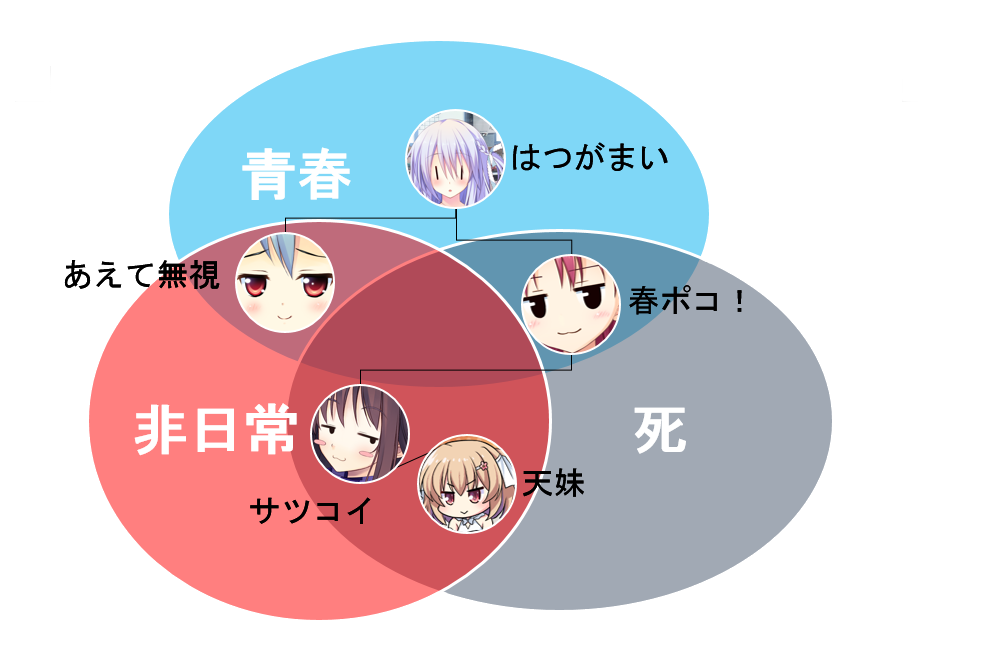
As I see it the Seishunverse tackles three primary topics and while all three are more or less prevalent in all of the games some treat them as primary themes. First of all you have the eponymous seishun which can be translated to mean “youth”. I choose to write it in romaji like this since within this context it represents a sense of nostalgia around youth as well as growing up. The second one is hinichijou which I write in romaji despite being a bit of a tough word to read like that since it’s a complicated literary concept which I won’t go over in-depth here but think about it as the extraordinary as opposed to an ordinary daily life and you get the idea. The third topic is death which is a common and straightforward enough concept that I’ll just take the liberty of translating that one.
The concept of seishun is something that’s delved in and referenced throughout the entire series but it’s hard to call it a main topic of Satsukoi and TenImo since they present some other ideas in the forefront. If you put on your analysis glasses you can quite easily spot the analogies to growing up though. The three games that put the idea in the spotlight are: Harupoco, Aete Mushi, and Hatsugamai.
Harupoco focuses on the angst and feeling of being lost and helpless one experiences when taking the first big steps into adulthood. Tonally it goes for a more grounded feel of youth.
Aete Mushi on the other hand is a much more innocent look back. It portrays seishun in a way that feels very reminiscent, like thinking back to simpler times. It’s a lot less grounded than Harupoco and goes into some fantastic elements which furthers the feeling that rather than being an honest retelling of youth it’s a beautified memory.
Hatsugamai ties the two games together both chronologically as mentioned earlier but also thematically by being the “end of seishun“. Hatsugamai is very grounded in characterisation but is not afraid of digging into fantastic elements in its events. The game follows a structure of first finding seishun in the form of this romanticised memory of youth and then growing up and away from it. While not being a direct sequel in terms of characters or events Hatsugamai manages to give Harupoco and Aete Mushi an ending as a series and I would strongly recommend against reading Hatsugamai before either of the other two. The three function almost in the same way as a collection of short stories forming a coherent whole.
Hinichijou is a concept shared by Aete Mushi, Satsukoi, and TenImo. Satsukoi and TenImo have a tangible connection through their extraordinary elements when TenImo builds upon this aspect of the setting first presented in Satsukoi. All the games exist in the same universe but this truly extraordinary side of things is only shown in these three games and can only be assumed to happen in the background of the other two.
Aete Mushi is quite mild in its use of the extraordinary setting it presents. In a more classic moege fashion the protagonist has a power he ends up barely using until the final part of the game. The superpower elements of Aete Mushi can easily be theorised to be related to the more expanded setting presented in TenImo but there are no direct connections explained in the games so I’ve decided to not draw a line between the two in the info-graphic.
Satsukoi puts the setting in the forefront and it’s vital in every part of the story. The Hinichijou in Satsukoi is so prevalent that the ordinary becomes the contrast rather than the other way around.
TenImo fills a similar function that Hatsugamai does for seishun in how it ties things together and expands on them but it does this through very different means. More than a thematic expansion it builds on the setting, paints a more detailed and sprawling world of the extraordinary. It also does not add a conclusion to either Aete Mushi nor Satsukoi. TenImo expands the universe rather than ending it.
Finally we have DEATH. Now usually people see this word and instantly assume spoilers but in the case of Harupoco, Satsukoi, and TenImo death is something more integral and apparent than a sudden twist or dramatic event.
Harupoco looks at how death affects people around it. Rather than being about dying it’s about someone having already died and how people are forced to deal with that fact. The nostalgic elements of seishun are used to dream back to how things were before. Death becomes something that forces people to either run away or to grow up.
Satsukoi has a more multifaceted perspective on death and dying. As well as killing of course since it has “satsu” (murder) in the title even! The game opens up with the protagonist on the verge of death so it wears the theme on its sleeve.
TenImo explores some of the same themes around death that Satsukoi explores but through a different perspective. While both Harupoco’s and Satsukoi’s protagonists are deep into cynicism TenImo’s protagonist is hopeful, although far from optimistic. TenImo also makes a distinction between running away and walking away that plays an important role in how it portrays escapism.
Other Recurring Elements
I decided to pick three main topics but there are other shared elements between the games that are worth noting and explaining how they tie into the three topics I picked to represent the main ideas.
Parent child relationships plays a big role in some way in all the Seishunverse games and I would argue that this is because of how integral this is relationship is to the idea of youth and growing up. The absent parents could be explained away by pointing at visual novel tropes but even those are handled as a problematic relationship rather than just an excuse to let the characters do some physical bonding wherever they want.
Living up to high expectations is another idea that appears throughout the Seishunverse but once again I’d argue that this is just a part of seishun. The pressure of performing and the angst caused by not being good enough could be called human in general but it’s particularly relevant to that awkward period of having some adult responsibilities while still being mostly a child.
There are childhood friends a plenty and I’d even go as far as to say that Aete Mushi has some DEFINING childhood friend content and is an important work to the genre as a whole. That said though this also falls under seishun since childhood friends are just about appealing to that fake nostalgia.
Terribly cute younger sisters appear in all games and it’s great and not needed to be put into the graph since it’s a constant of the Seishunverse with no exceptions so it’d be REDUNDANT. Unlike Corn I’m not too big into younger sisters but the ones in the Seishunverse are an exception.
Final Comments
I think I said I’d write about another writer in my last blog-post and this post could have easily been written in the same style as my Kazuki Fumi post exploring my history with and impression of Seo Jun so sorry for doing this instead! I’d probably have a fun time writing a more in-depth discussion about Seo’s works and maybe that’d end up being more interesting than a shallow highlight post like this but I really wanted to just put this universe in focus since it’s so interesting to me. I adore these kinds of more complicated relationship structures and like them way more than actual sequels. Moege lore is such an absurd idea but it works so well. So please go check these games out and tell Seo you love him on twitter since he’s super cool!
Don’t know what I’ll do next time but we’re nearing the end of 2018 so maybe I’ll put in the effort to write another mega post in January. Strongly considering doing a Sakuraba Maruo post since they’ve got two games coming out pretty soon but I’m not sure I have the energy to do a real deal effort post like that in these cold and grey winter times. Whatever I end up doing I hope you have no expectations since it will be just as bad as all my other posts.
Love you! :kissyemoji:
A Self-Indulgent Write-Up on My Favourite Writer かずきふみ (Kazuki Fumi)
What’s this Write-Up About?
I’ve recently been seeing a lot of tweets to the effect of picking 4 games that defined you in my timeline which is what prompted me to dust off this poor old blog to talk about some writers that have been heavily influential to me personally. Since I’ve had this habit of pretty excruciatingly going through their entire bibliography (I’m sorry for using this word in reference to games but I’m not going to coin the term gameography) I find myself having a lot to say about the writers and their works so it’s about time I gave myself a more formal (more like business casual I guess) outlet to discuss them.
For me personally there is no better writer to start with than Kazuki Fumi since he remains my favourite writer and wrote the game that really set off my real deal eroge reading career.
This write-up will go through Kazuki’s works in the order I personally experienced them in since I believe that bit of context is important for my thoughts to seem somewhat coherent. There probably won’t be any spoilers since this write-up is intended as a collection of impressions and reflections rather than a collection of reviews. Now there will probably be a ton of typos in here since I’ve just decided to post this without reading through it but let’s just say it’s more genuine that way.
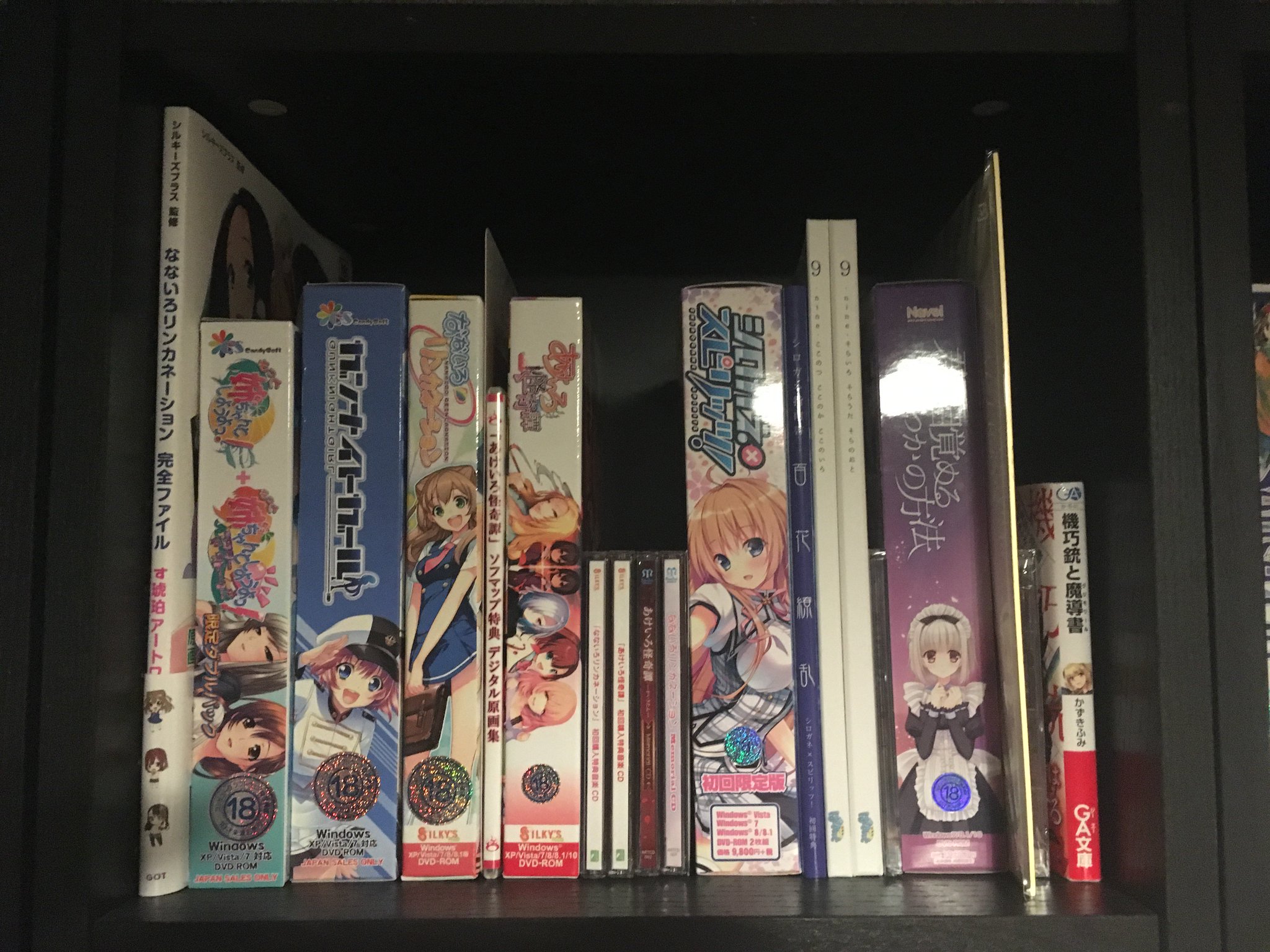
Nanairo Reincarnation: The Game that Made the Pieces Start Falling into Place
In 2014 the then new eroge brand Silky’s Plus released a game focusing on the home life of demons. Nanairo Reincarnation (or Nanarin) was written by Kazuki Fumi, had art by Sumeragi Kohaku, and would one year later become the first spark that ignited the fire that is my spicy taste in eroge and fiction.
I’m always excited when I find out someone in the discord group I’m active in is reading Nanarin and often to take to calling it my 故郷 or home town. It might seem like a bit of stretched metaphor but in many ways Nanarin is where my current eroge persona has its roots. Beyond that Nanarin is also a game written to feel like home, it’s an appeal to family despite none of the characters really being related. Nanarin is a game to look back to as a fond memory, as a precious photo in your eroge album. (man, when I’m a grandpa I should have a photo album of eroge images that’d be hilarious).
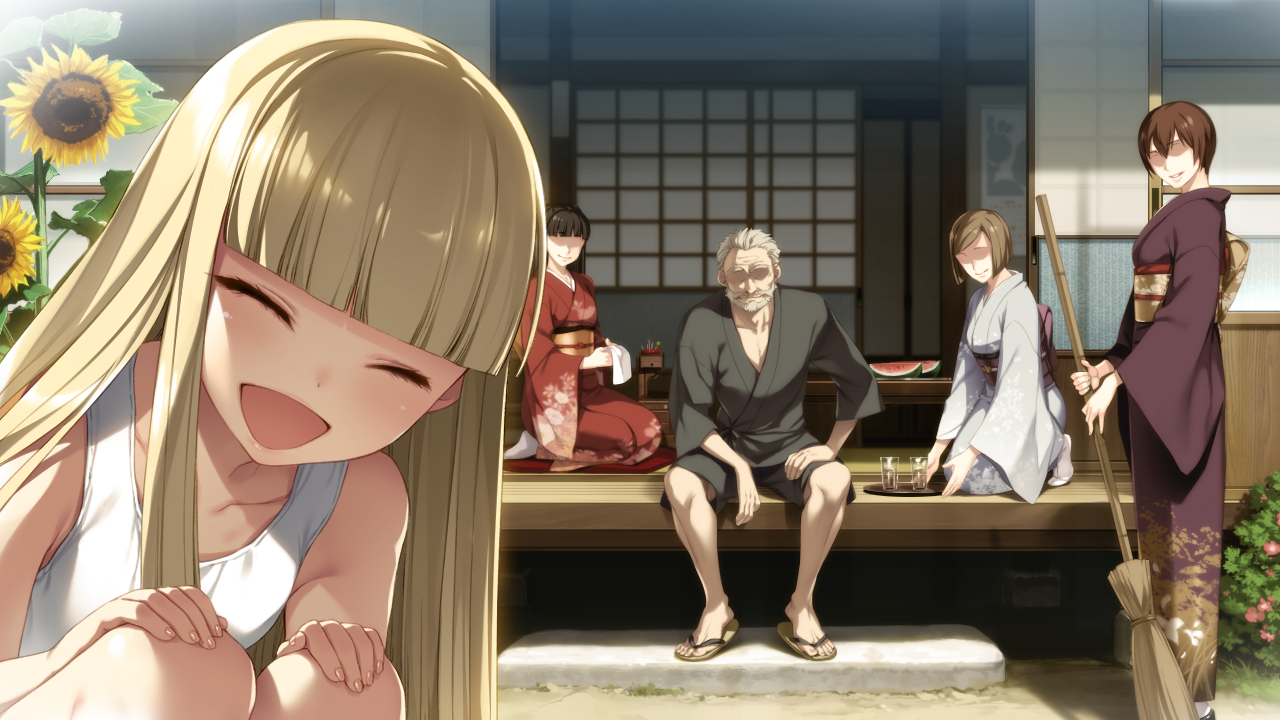
I’m going to be straight with you. I was still a lonely teenage (barely) boy in 2015 so my motivation for reading the game wasn’t as pure as that last paragraph may have made it sound. Yes I read it for the juicy looking naked ladies and that’s okay since Sumeragi Kohaku is an amazing artist who captures the female form with a focus on curves that’s quite honestly unrivaled but that’s neither here nor there I could talk about butts and boobs all day but this is a writer spotlight.
So with less than pure intentions I started reading Nanarin and while the content I came for sure was there I found so much more than that. As mentioned Nanarin is a game with a focus on a familiar feeling and this is something conveyed through the techniques I’ve later come to realise are Kazuki’s bread and butter.
The setting seeps through the characters and events and creates this feeling of a huge world to explore since every question you might want to ask not only has an answer but the answer has a tangible effect. In my mind I’ve come to picture this kind of coherency as a quite literal context chain where all the little bits of info connect. The setting of Nanarin and Akeiro Kaikitan which I’ll talk about a bit later is expansive but delivered through a bottom to top perspective. This is to say that rather than getting a big picture of the systems at work that then zooms in on the people affected by it, like you’d see a lot in for example fantasy literature, you get to taste the big picture through the way the characters live. This kind of writing fuels the imagination since it makes you wonder what is happening in the world outside the Kagami household which is where all of Nanarin takes place. The limited stage is another part of the setting that creates intimacy, you spend so much time in the Kagami household that it’s no wonder it starts feeling like home.
Now while Kazuki is a detailed planner when it comes to the setting he’s an actor when it comes to characters. When talking about his own creative process on his fanbox blog (which is a Japanese patreon-like so there’s a pay wall but if you’re already a fan of him I recommend it his posts are really fun) he describes his character writing as usually just starting as a single idea that then grows into a character as he writes them. This process definitely shines through in his works mostly through the lively dialogue.
When people ask me why Kazuki is my favourite writer I usually point out the dialogue as a major factor. I call him an actor due to the strong character voices, even conveyed in his unvoiced works such as his Light Novel 機巧銃と魔導書 (The Trick Gun and the Grimoire [title translation by me right now since there ain’t a real one]), as well as the flow that conversations in his games has. The characters talk about anything and everything relevant to them, but mostly food, and when they get going it’s hard to put the game down (or well alt-tab I guess since once again I’m talking games not books). The characters communicate who they are and define themselves a lot through these conversations which is similar to how you get an impression of people in real life how neat ain’t that!
That single core idea approach to character writing also allows for some extremely strong character punchlines, aka good route climaxes, although Nanarin isn’t the best example of this since it has a single central character: Kotori.
Once again I’ll pull some info from Kazuki’s fanbox (please support it if you want the tiers are separated into what kind of meal you’re paying for that’s how in love with food Kazuki is). Kazuki’s approach to Kotori was almost naturalistic if you want me to go literary on your butt since the core idea wasn’t quite a gimmick nor a specific scene or way to talk. Kotori as a character was created to be a real normal girl. This idea was coordinated in writing, art (since Kazuki and Sumeragi are a Godly team) and also voice! The voice work in Nanarin (and most works where Kazuki has been involved) is absolutely stellar and while I wish I was a fly on the wall for the creation process of these games I wasn’t so I can’t comment on how these performances came to be.
I can however make wild assumptions and connections to make my favourite writer sound even better. 😉
Kazuki’s dialogue writing naturally lends itself to strong performances thanks to the strong character voices. His writing is quite clearly written to be voiced, as mentioned even his Light Novel felt like this to me which was probably a work injury from eroge writing. I also believe Kazuki involves himself in the voice work process, his fanbox blog offhand mentions him being involved in casting and giving pointers etc.
So I think it’s quite obvious that Nanarin as a story has a focus on the cast and the setting and some distinct ways of delivering these and this is what made the pieces start fall together for me. Finishing Nanarin was a 「ディスイズアエロゲー」moment for me (that’s kore wa eroge desu for you cool babies out there). I had been reading eroge for years but mostly as a digital convenience thing with some interest in stuff like choice gimmicks but I had never before then really understood the writing aesthetic that is eroge. “This is a story that could only be told through Visual Novels” is a phrase that’s been thrown around so much in reference to cheap tricks that it has lost its meaning but don’t lose track of the idea that some stories really are inherently eroge and that there are implications, traditions, cultural contexts, and an eroge aesthetic.
And to me the writer who best captures this aesthetic is Kazuki Fumi. His works are my very definition of what makes eroge click, of what makes them feel good in a way other things don’t.
And to me the work that first made me even start thinking in these kinds of directions was my beloved home town Nanairo Reincarnation.
Gun Knight Girl: A Question of Tone
A pretty big change Nanairo Reincarnation had on my eroge reading was that it got me looking at the staff involved in making games and thanks to this I pretty shortly after finishing Nanarin decided to check out Kazuki and Sumeragi’s previous work. The Candy Soft published mecha action game from 2012: Gun Knight Girl.
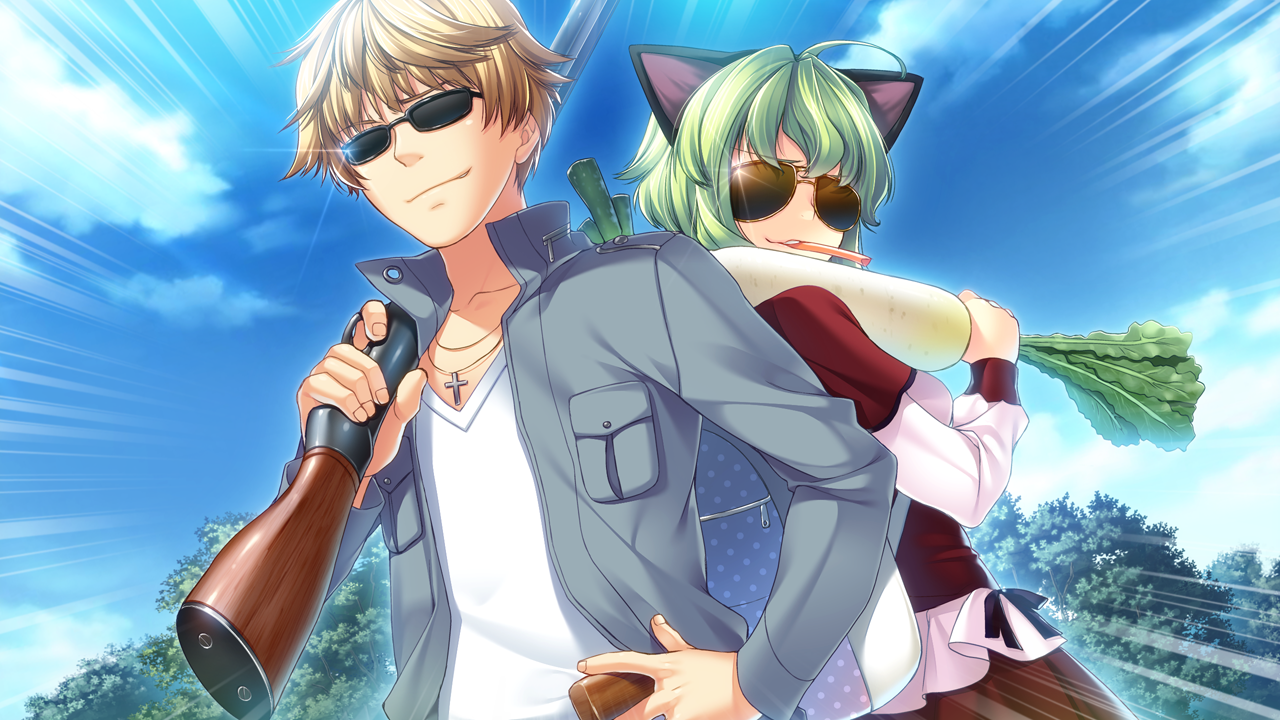
Gun Knight Girl was the first game where Kazuki was both planner and writer yet despite my success with getting people to read Nanarin my attempts to talk up Gun Knight Girl have yet to bear any fruit. According to Kazuki’s fanbox blog the original idea for the game was a post apocalyptic but this was very early on in the idea stage and got shut down. Kazuki has since started writing a Web Novel that happens to be post apocalyptic so maybe he had let some of those idea juices brew ever since Gun Knight Girl.
I went over Kazuki’s setting and character work when I talked about Nanarin but another pretty key part of his works that didn’t become clear to me until Gun Knight Girl is the playing with tone. Gun Knight Girl is a war story so you can probably imagine it has some pretty heavy topics and scenes but these get mixed together with Kazuki’s playful dialogue and colourful cast which creates some pretty wonderful tonal shifts and juxtaposition.
The shift in tone between common route and heroine routes in particular is quite jarring if you disregarded all the winks and nudges. Even if you did catch on the level of broken on display in the routes can definitely catch you off guard but that’s all just part of the context chain I mentioned earlier. Gun Knight Girl might be a war story but the setting is outside the war and the main character is just a normal guy scooped into a pretty messy situation. There is a massive war thundering in the background but what we see are the effects of this war not the war itself, through this the characters themselves put the tonal play on display as they show their scars. The war is portrayed through how it affects the cast. Once again the same brand of world building that Nanarin put on display.
Gun Knight Girl is a very different game from Nanarin even though the setting is quite comfortable for the most part since the game lacks the familiar feel. Instead it focuses more on the friendships and romantic relationships which while very fun makes it lose some of that nostalgic feel. The fact that Gun Knight Girl has the protagonist’s friends appear also reveals that Kazuki has quite the thing for bullying characters without routes, something he’s admitted to himself on his fanbox blog.
Poor poor Yuina.
Shirogane x Spirits!: Yes I’m Going to Write a Bit About This One As Well
Shirogane x Spirits was released in 2015 by Giga and was written by Kazuki Fumi but unlike Nanarin and Gun Knight Girl not planned by him and it very much shows. The game featured art by several artists instead of the classic Kazuki and Sumeragi combo and Utsumi Anri as a side writer, a writer with no other credits listed on vndb as of writing this.
Shirogane X Spirits has high tempo lively dialogue but lacks a lot of the things I had come to love from Kazuki. The setting is quite rigid, the cast is large but ends up feeling pretty one dimensional. There was a pretty high density of gags and while amusing I was missing that sweet tonal play.
I thought the game was entertaining but didn’t come out of it with much to discuss or think about which I’m pretty sure was intentional from Giga’s side.
Akeiro Kaikitan: Exploration and Discovery
Strangely enough I don’t believe I’ve mentioned this game on my blog before despite it being my favourite eroge of all time so it’s the perfect time for me to write about the sequel to Nanairo Reincarnation: Akeiro Kaikitan.
Now I call it a sequel but the cast is completely new and the structure, tone, and goal are all very different as well. It’s a sequel in the sense that you have to read Nanairo Reincarnation before it.
Akeiro Kaikitan takes us back to the same setting as Nanarin but this time rather than demons we’re looking into how ghosts and urban legends play out. And instead of the quite linear story of Nanarin we’ve been given the chance to fully explore this world built in flowchart and all. Akeiro Kaikitan let me go out and find the answers to all those questions that got my imagination juices flowing in Nanarin. The very open structure also ties into our cast as the game focuses on this idea of finding your way and growing up. Our protagonist Yashiro starts out a soft sweet boy so not quite as much of an appealing hunk as Nanarin’s Makoto but as the game progresses and he fumbles his way down different paths we see him grow into different people. The game has Yashiro grow to be similar to the heroines and the heroines grow to be similar to Yashiro. This makes most of the routes in Akeiro Kaikitan very powerful and satsifying standalone stories since they really are the end of one Yashiro and you get to see a new Yashiro grow in the next route.
Akeiro Kaikitan’s system fires up your creativity in a way that perfectly accompanies Kazuki’s bottom to top world building. You feel like a part of the things unfolding.
Akeiro Kaikitan is a story with higher tension than anything I had read by Kazuki Fumi before but thanks to those tonal shifts it still manages to make you feel comfortable and snuggle up to the cast, especially in the routes. Right after being scared by a real spooky ghost the characters are back to bantering and eating, yes at the same time everything by Kazuki needs to feature plenty of food banter.
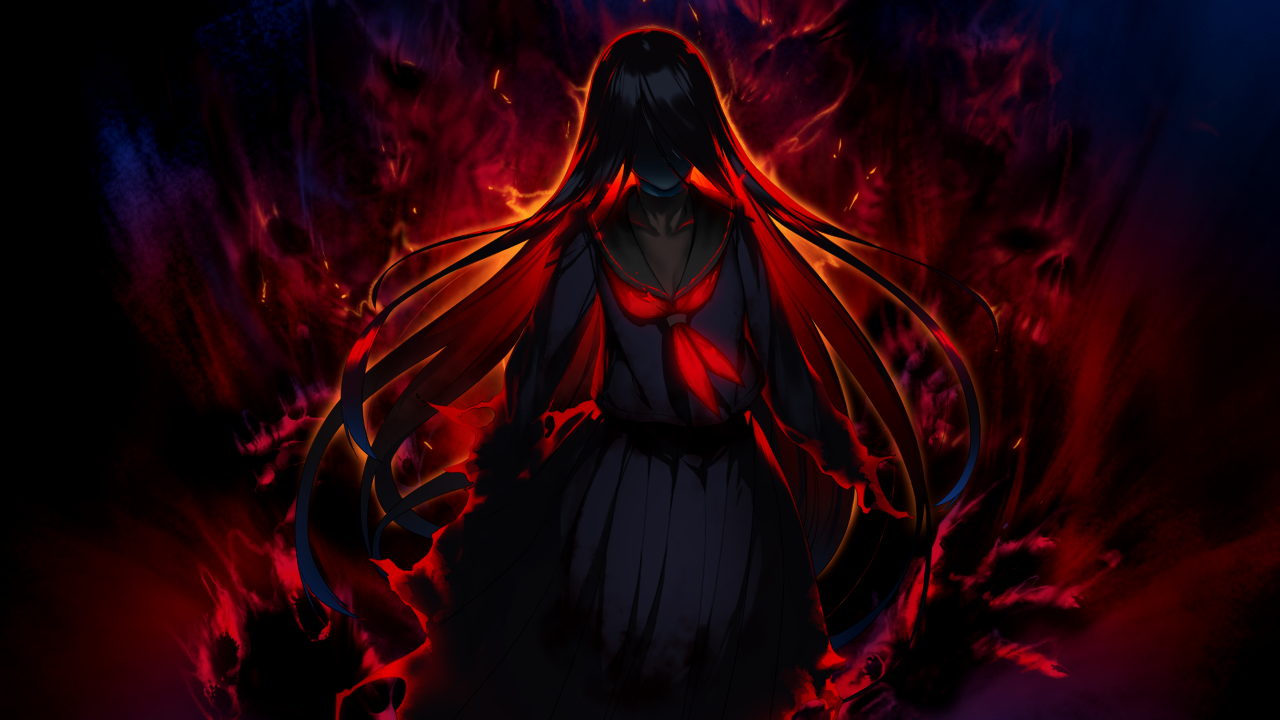
To me Akeiro Kaikitan is a monolith, it’s the most eroge-esque eroge there is. I was actually possessed while reading it and didn’t even stop reading it for fika (Think afternoon tea but with coffee and sweets it’s an integral part of Swedish culture so basically what I’m saying is I was having a real good time).
One neat aspect of Akeiro Kaikitan which is another important part of what makes Kazuki Fumi’s writing what it is is how the game takes things to their full conclusion. Even if what seems to be the key part of the plot doesn’t end up quite the way you’d expect the game doesn’t just stop there, it looks into what happens because of this. It’s all part of this context chain, if something happens it has to have repercussions. It’s extremely impressive how good Akeiro Kaikitan is at sticking to this considering the very open structure so hats off for everyone involved in planning it and putting it into action.
Now I used the word punchline earlier in reference to the satisfaction caused by the core idea character writing but another word I think it’s about time I start digging into is delivery. If something happens it has to have repercussions is the very basis of delivery and Akeiro Kaikitan is a game that just keeps delivering. There’s an art to the delivery that I think goes unappreciated a lot of the time when it comes to stories. People want to be surprised, or they want something new, or something different. To me nothing is quite as satisfying as a proper set up and pay off and while this surely can be surprising, new, and different I believe praising those three things devalues the craft. When all those carefully placed pieces form an image, that’s eroge, that’s Akeiro Kaikitan.
Would be a shame to finally write about Akeiro Kaikitan without mentioning my boy Shuuji so even though this write-up is supposed to be about my impressions and reflections I’m gonna have to take a moment to just appreciate this very very good boy.
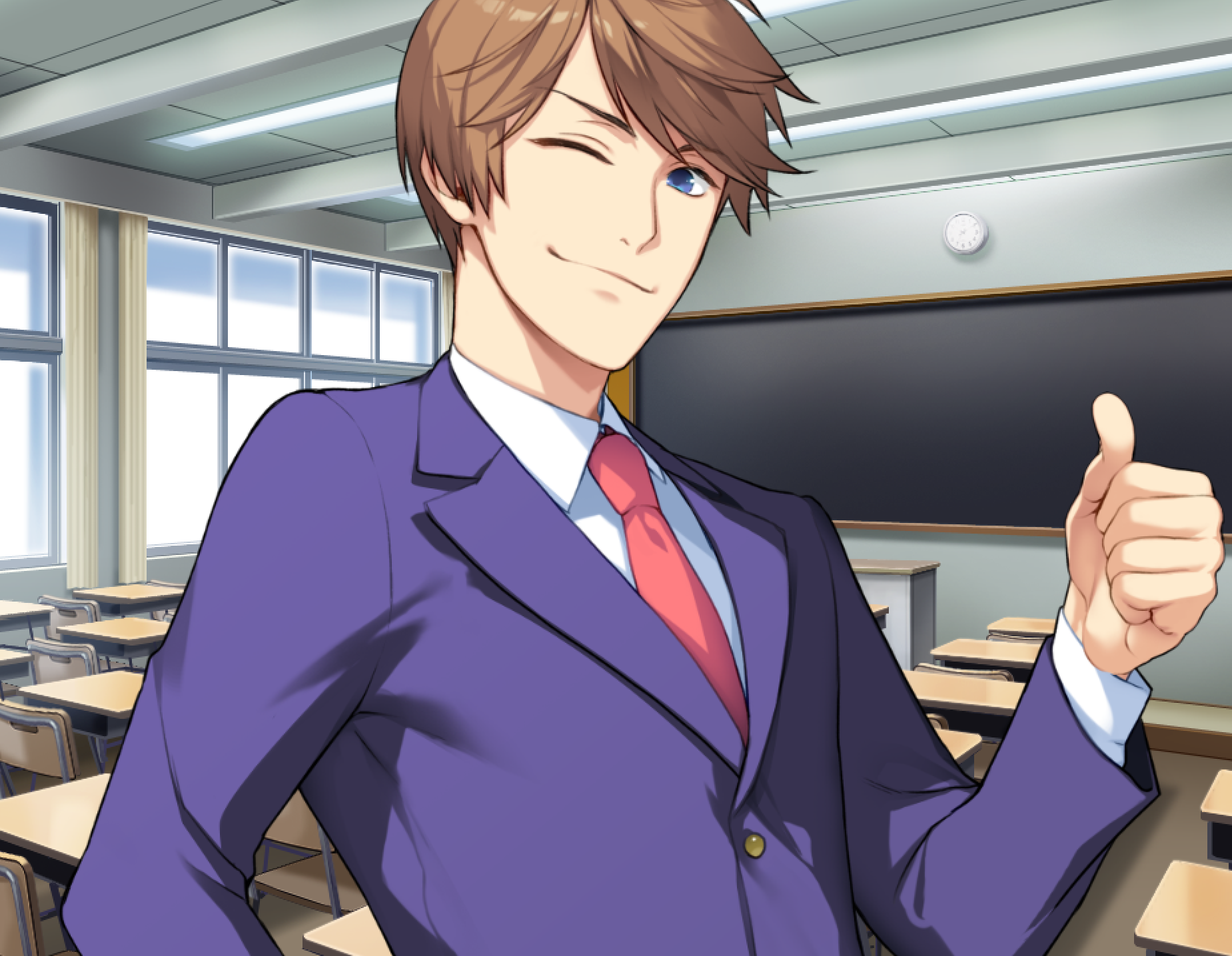
Motto Nee, Chanto Shiyou yo!: An Origin Story
After Akeiro Kaikitan I didn’t have many Kazuki Fumi works left so I went back to the where it all began and read Motto Nee, Chanto Shiyou yo! (I’ll just call it Motto Nee) and its fandisk released in 2010 and 2011 by Candy Soft. Motto Nee was not planned by Kazuki so this part will be brief but since it’s his first game with writing credit it’s still interesting to look at.
Motto Nee is a game with an enormous cast and many routes so it ends up being spread quite thin especially since it’s also quite long. That said though it has some very charming character moments and I could find a lot of those things that I love Kazuki’s works for. One that stood out especially that I’ve actually completely missed mentioning until now is the sex scene writing so I’ll use this part to talk about the glorious thing that is Kazuki Fumi sex scenes.
How I Learnt to Stop Worrying and Love the H
So I mentioned how I went into Nanarin with some sketchy motivations and found what I was looking for but I never went quite into the nasty, gritty, dirty, juicy, you get it. Sumeragi Kohaku is of course a Goddess when it comes to erotic art, this doesn’t even need to be stated really since it’s obvious, but what accompanies her gorgeous art is of course Kazuki’s writing and oh fucking man is it great (sorry for swearing but I’m talking about lewd things so you should have known it was coming).
Kazuki Fumi has tweeted in the past about being self conscious on how much his characters talk during sex and I’m very glad he hasn’t tried to stop doing that. Even in the middle of slapping meats the characters will discuss everything from penis etymology, to important events, and of course emotions. The writing manages to fuse eroticism and personality even in the narration since the protagonist’s character voice leaks out especially during the dirty boys and girls scenes. Kazuki also drops some spicy sex trivia and is not afraid to go the extra mile with the sexual situations. I still remember fondly how Makoto, the protagonist of Nanarin, asked the cat demon Aoi to talk cat speak to him during sex and she made fun of him for being a pervert. What a wonderful way to show some character and appeal to what the fans want.
Beyond the entertaining and juicy content there are also some genuinely heartfelt LOVEMAKING (look at that word choice wow it has love in it so you know it’s real deal) scenes. This attention and love for the sex scene writing is another part of what makes Kazuki Fumi games such key eroge aesthetic to me. I know not everyone’s into sexual content but if you read a Kazuki Fumi sex scene and thinks it’s somehow worse or more typical H SCENE (look at me using the popular eroge term for them to show I mean the generic brand wow) than non-sexual scenes I’m gonna have to doubt your literacy I’m sorry.
9 -Nine-: Something Light
The 9 -Nine- series is an episodic project published by Palette with art by Izumi Tsubasu (who’s also a super good artist check her out). As of writing this two episodes have been released on a one episode per year schedule (in 2017 and 2018), they’re quite short and focus on a different heroine each but are pretty much linear. The project isn’t planned by Kazuki Fumi so the series has a very Palette flavour to it, if you’re not familiar with the brand just think like mildly magical and lightly dramatic and you got what I mean pretty much.
The 9 -Nine- series is interesting in it’s presentation especially writing wise since it’s feels very similar to a TV show (or well anime of course but I don’t watch too much anime so it feels weird making the comparison but yeah it’s very anime). The dialogue consists of shorter lines and relies heavily on how they’re performed. There are a lot of lines that are written as just ellipsis but performed in a wide variety of ways that makes it pretty clear that the voice actors either got a ton of live directions or had a script with a lot of pointers in it. The shorter and quicker lines lend themselves well to the light tone and comedy of the series and while scenes might not leave a long lasting impact they’re very enjoyable in the moment. Despite the lighter tone some of Fumi’s more grim interests still leak through on occasion.
Since Kazuki enjoys writing about food so much I’m going to make a food comparison here and say the 9 -Nine- series is like a Kazuki snack. It has just enough of those bits I crave for me to be happy with it but I’m never full. The Second episode of 9 -Nine- has an amazing sex scene also which I’m almost surprised Palette let him sneak in there.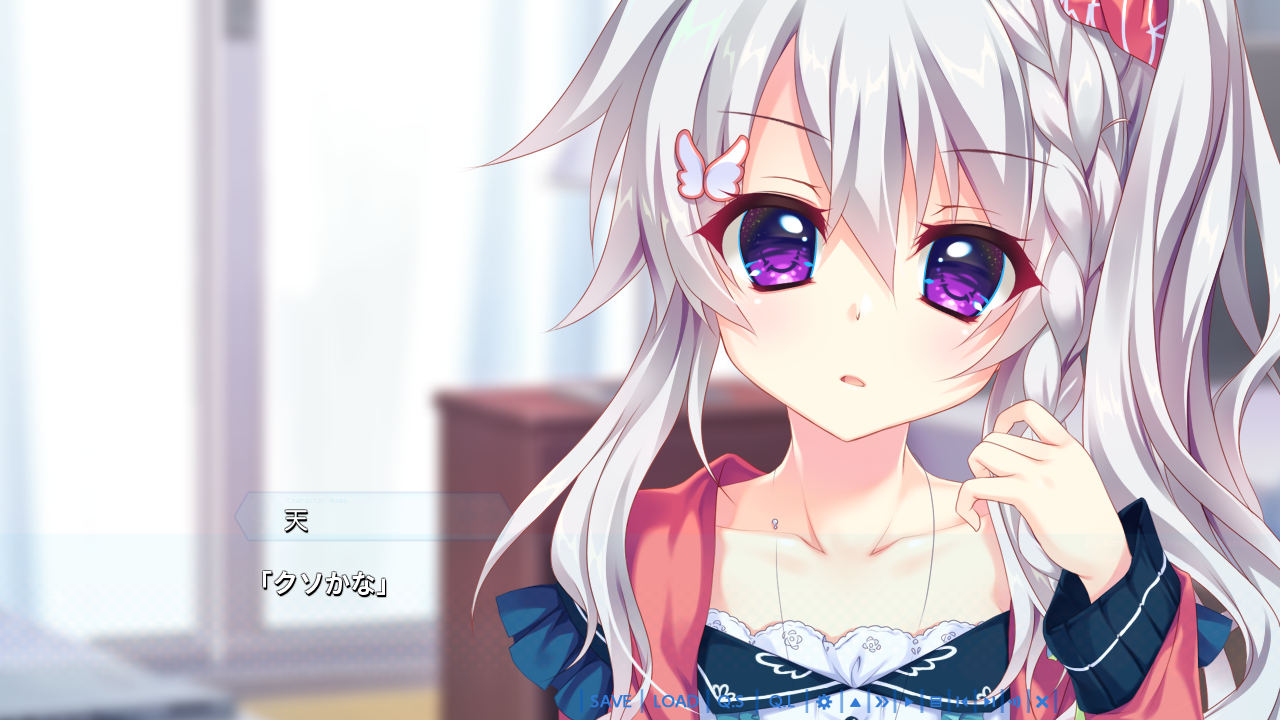
Kikoujuu to Grimoire: Hey all Those Times I Used Book Terms Earlier Totally Work Now!
In 2016 Kazuki Fumi’s first Light Novel published by GA Bunko got released and while this write-up was probably intended to focus mostly on eroge I’m still gonna talk about it for a bit so here we go!
I mentioned the Light Novel earlier on when talking about how even when unvoiced Kazuki Fumi’s dialogue has a strong character voice to it but there are some other fun comparisons to make in his writing between Light Novel and Visual Novel.
The Light Novel is of the isekai genre which for those of you who are somehow not familiar is when people gets sucked into magic land in one way or another, think like Narnia but for cool modern kids who wants the lion to be a hot lion lady. The Light Novel takes a bit less of a bottom up approach and does go into detail about the larger systems at work which makes sense considering the genre but Kazuki Fumi’s love for talking about daily life shines through and a lot of the world building happens through learning about things that aren’t important on the big scale but are relevant to daily routines. Like where the nice restaurants are or how public transport works and so on.
The Light Novel was my first exposure to Kazuki tackling perspective shifts and I enjoyed that aspect a lot since the story has two protagonists. It wasn’t a purely Kazuki Fumi planned work but it’s amusing what kind of stuff he managed to get away with writing even after having his wrist slapped for the content.
It’s a very fun read and I wouldn’t mind seeing more novels in the same setting in the future. As always there’s a lot of room left to explore since the focus remains on one small aspect of the setting from which you can only feel how expansive the world really is.
Kimi to Mezameru Ikutsuka no Houhou: A Story About Growth
As of writing this (in 2018) the latest Kazuki Fumi work released (and I haven’t gotten any new announcements either) is Kimi to Mezameru Ikutusuka No Houhou (or Kimimeza for short). At long last a story planned and written by Fumi and surprisingly enough published by Navel.
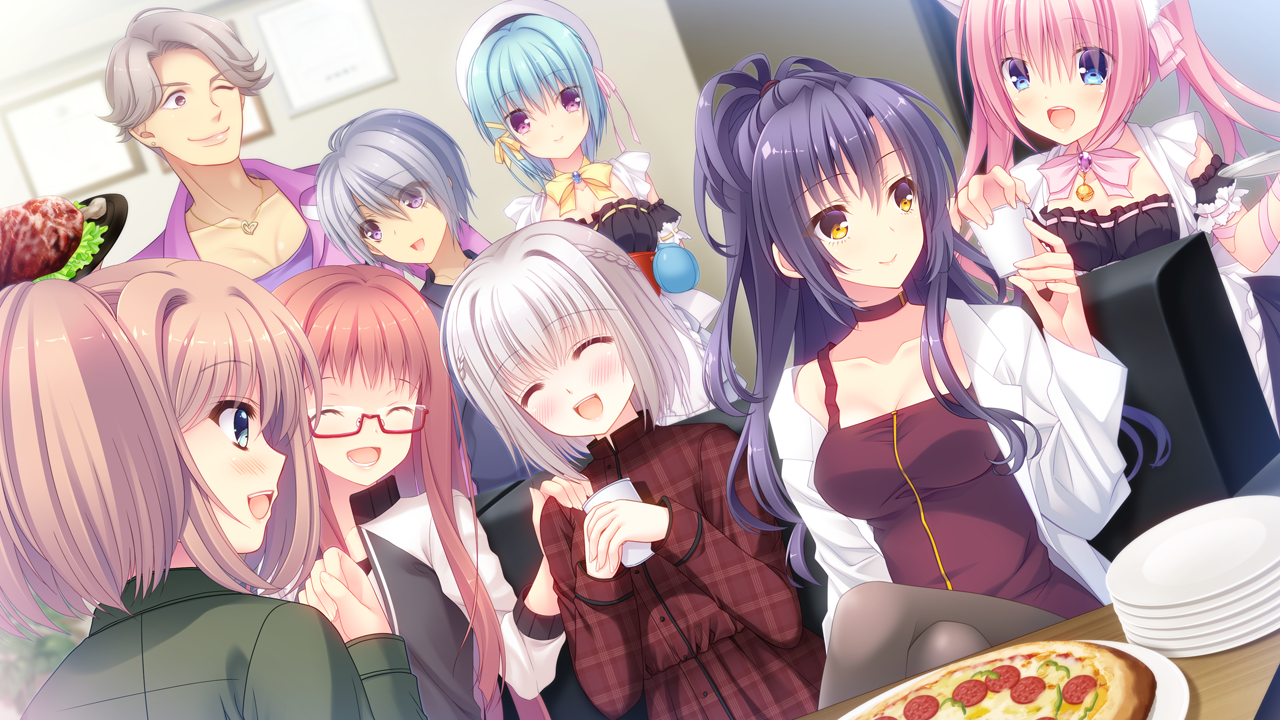
Kimimeza is in a way a return to old form as it focuses on a household and spends a lot of time at just chilling with the cast. Instead of demons it’s robots this time around though and unlike Nanarin the game takes on more of a conspiracy kind of action story aesthetic along with the family type content.
Kimimeza’s strong point is for sure the cast, it’s the kind of game that makes you miss the characters after you finish it. It explores both family and friendships and again just like Nanarin none of the characters are really related, I mean two of the characters making out the family part of the cast are robots even!
Kimimeza had an absolutely amazing character progression when it comes to the main heroine that incorporates ideas from earlier Kazuki Fumi’s earlier works. There’s a sense of family and growing up. These themes also fit well with how Kimimeza is very childhood friend focused and the plethora of childhood friends lend themselves well to Kazuki Fumi’s brand of dialogue since the characters are all comfortable with each other.
The setting does leave some things open for your imagination to explore but not to the same degree as the iro series of games (aka Nanarin and Akeiro) or his light novel perhaps since the story feels a bit more large scale on occasion.
The game also features a robot threesome where one of them narrates out loud in the style of an erotic novel which is just absolutely brilliant.
So to Wrap Up Whatever Thoughts I Still Remember and Look Forward: What Now?
Kazuki Fumi seems as busy as ever with his writing even if nothing new has been announced as of yet and as always I’m looking forward to anything he may release. Something I haven’t written about since it surprisingly hasn’t been relevant to any of his works is Kazuki’s love for the NTR genre (for those not familiar it’s a being cheated on fetish deal but there’s like a lot to it it’s pretty wild). I eagerly await his release of an NTR RPG since it’d be something so extremely different it’d have to open my eyes in one way or another.
I’m also still holding out hope that Silky’s Plus Wasabi will come back and that my dream team Kazuki Fumi and Sumeragi Kohaku will bless me again. It’s kind of crazy to me how Akeiro Kaikitan was over two years ago now. The iro setting has so much more stuff to it to explore but maybe it’s better to leave that exploration to the imagination. New iro game or completely new setting I still dream to wake up to a Wasabi announcement in my twitter timeline so I can feel that 「ディスイズアエロゲー」feeling again.
And as to what now for the blog I’m considering doing more writer spotlights since I have a couple more I have a lot to say about. I’m also tempted to do a bit of a post on doujinge that aren’t visual novels but I’m not the most knowledgeable or experienced in games so perhaps that’d end up not too great. Either way I had a great time writing this post so even if you didn’t get much out of it I feel like I probably did but thank you anyway if you got this far in my rambling!
Love ❤
/Zodi


